Archaeological Institute of America
Deadline: November 15, 2025
The AIA Gold Medal Award Committee invites nominations for the award to be presented at the 2026 Annual Meeting. This award is made annually in recognition of a scholar who has made distinguished contributions to archaeology through research and/or field work. The recipient of this award will be presented with the medal and a citation documenting their outstanding achievements and a symposium will be held in their honor at the Annual Meeting at which the award is presented.
The Gold Medal for Distinguished Archaeological Achievement is the highest award the Archaeological Institute of America bestows. Candidates for the award should normally be members of the Archaeological Institute of America. As this award is for contributions to archaeology on the basis of distinguished research and field work, the strongest (and generally the most appropriate) candidates are typically senior scholars who are at a relatively advanced stage in their careers. Therefore, this award could be considered analogous to a lifetime achievement award – that is, distinguished achievement over a career (although not necessarily at the end of a career). The candidate’s primary achievement should be in the form of impact on the discipline through research and/or field work (including museum work), although other types of contributions, for example through teaching or service, may be considered as additional factors in support of the nomination. The committee is charged not only with considering nominations received from others, but with actively soliciting nominations for this award, and with selecting the best candidate. Nominations remain active for three years. In the event the committee members agree there are no deserving candidates among the nominees, the Gold Medal will not be awarded that year.
As per the AIA’s Conflict of Interest Policy, all current AIA Governing Board members (including ex officio), AIA employees, and their families are ineligible for nomination for this award. Active members of the Gold Medal Committee may neither nominate nor write letters of support for candidates. This is unique to the Gold Medal Committee.
The Gold Medal Committee supports diversity, equity, and inclusion, and encourages the nomination of candidates from diverse backgrounds.
Completed nominations should be received by November 15. Electronic submission is preferred. Please send all nomination materials to the address below.
Completed nominations should include: (a) a substantive letter of nomination setting out the grounds for the nomination and supported by a minimum of three and a maximum of five letters from scholars in North America or abroad discussing the nominee’s qualifications for the award; (b) a CV or outline of the nominee’s career and contributions to archaeology; (c) a list of the nominee’s publications. All materials will be handled confidentially. The letter of nomination and support letters may, but need not, be co-authored.
The Gold Medal Committee and the Program Committee for the Annual Meeting request that nomination packets include suggestions for potential organizers and/or participants for a symposium to be held at the Annual Meeting in honor of the successful nominee.
The committee will review nominations and make a decision by early January. This decision then needs to be approved by AIA governance. In late January, nominators will be contacted regarding the status of their nomination. The winner will be celebrated at the Awards Ceremony the following January.
Archaeological Institute of America
2000 Commonwealth Ave, Ste 415
Auburndale, MA 02466
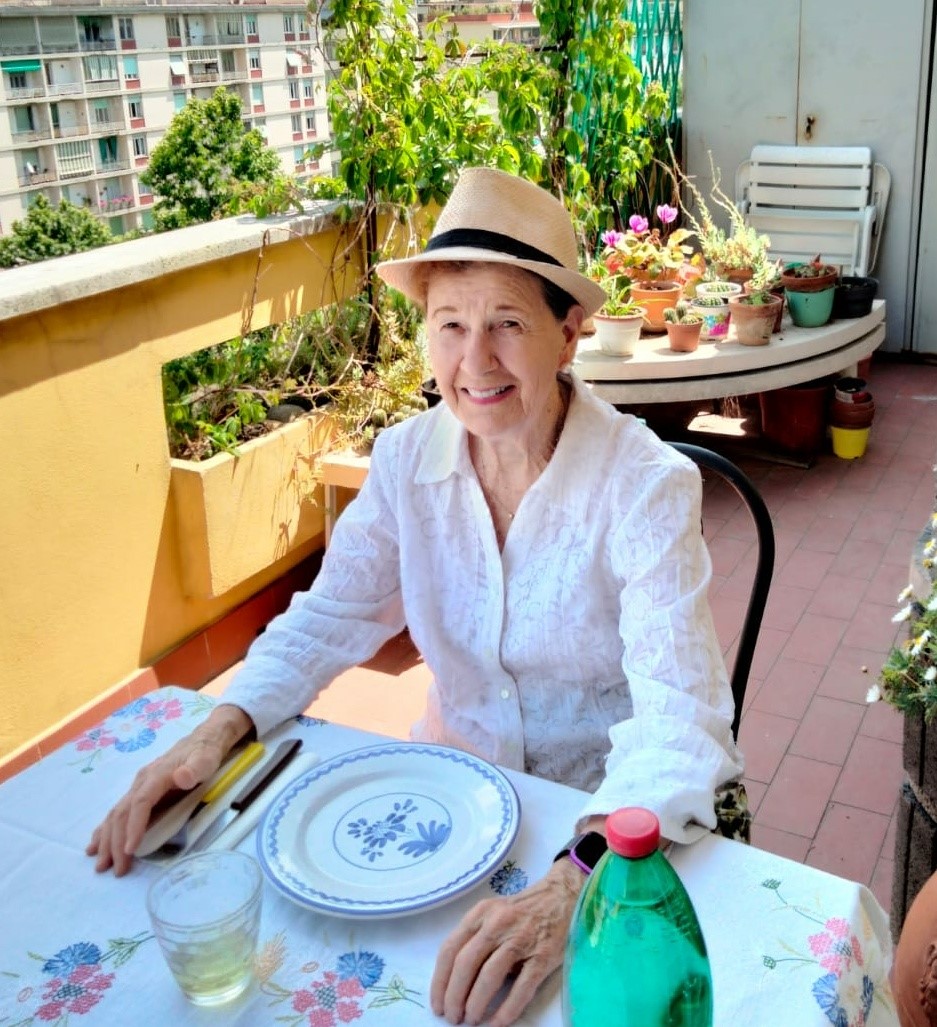
2026
The Archaeological Institute of America is pleased to announce that the Gold Medal Committee has selected Professor Nancy Thomson de Grummond as the 2026 recipient of the Gold Medal Award for Distinguished Archaeological Achievement. This award, presented each year at the AIA Annual Meeting, recognizes distinguished contributions to archaeology, primarily through research and/or fieldwork. The Gold Medal is the highest honor the Institute bestows.
Nancy Thomson de Grummond, the M. Lynette Thompson Professor of Classics at Florida State University, has had a long and distinguished career of service to the AIA and the profession of Classical Archaeology. In 1977 she founded the international summer program “Excavations in Chianti” for work at the Italian site of Cetamura del Chianti. She became field director at the site in 1983 and has continued to direct the excavations there for the past 42 years. She gained international attention for her work at Cetamura in 2006 for her discovery of an Etruscan sanctuary, in 2013 for the discovery of water-logged grape seeds from an Etruscan well, and in 2016 for the discovery of a buried hoard of Roman Republican coinage.
Her legacy of teaching and service at FSU is also remarkable, and over the years she has directed countless research projects at the undergraduate, masters, and doctoral levels. She received the AIA’s Excellence in Undergraduate Teaching Award in 2015, and in 2022, the AIA’s Martha and Artemis Joukowsky Distinguished Service Award for her service to the AIA on local, regional, and national levels over the course of many years.
Over 500 students, graduate and undergraduate, have been on her archaeological field school crews in Italy and in Ukraine, and she has directed more than 30 students in museum internships in the US and Italy. For many years she and her FSU students have worked with a home for blind people in Tallahassee, teaching them about archaeology through touch, using 3-D artifacts and broken flowerpots for reconstruction.
De Grummond has made archaeological research and its results a focus of her life’s work via museum exhibitions. She has organized a total of 16 public exhibitions since the 1970s, always involving students and colleagues in all aspects of the process. She worked tirelessly behind the scenes to create a museum that would house artifacts from Cetamura, and in 2023 the doors of the Museum of the Origins of Chianti, partly funded by the European Union, opened in Gaiole, just a few kilometers from the site of Cetamura.
She is the author of four books and twelve edited volumes, which include Etruscan Myth, Sacred History and Legend (2006), Cetamura del Chianti (2020), and two volumes of the Corpus Speculorum Etruscorum (2007, 2023). Etruscan Studies in the U.S. would not be the burgeoning field it is today without the contributions of Nancy de Grummond.
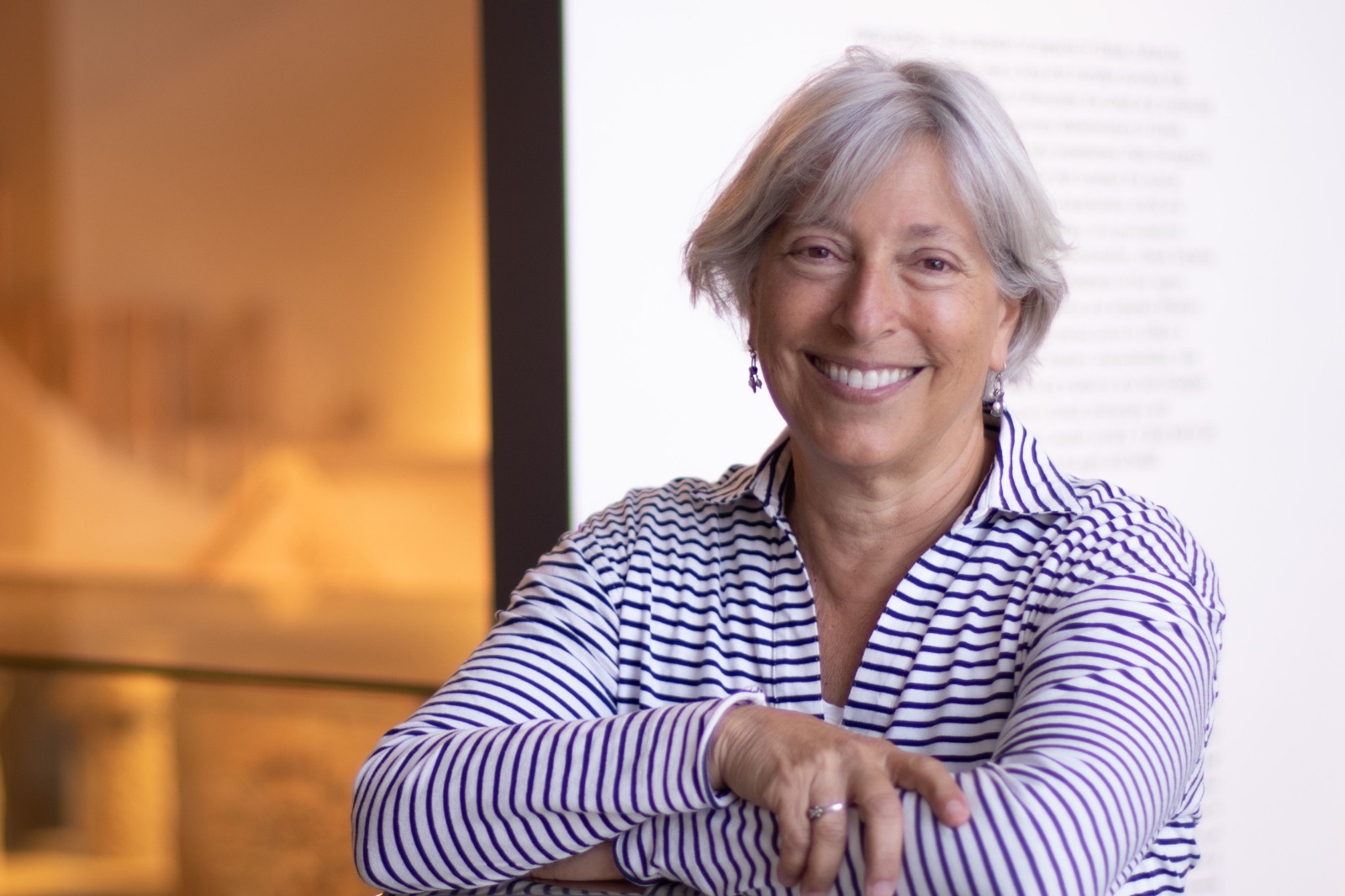
2025
The Archaeological Institute of America is proud to award the 2025 Gold Medal Award for Distinguished Archaeological Achievement to Dr. Andrea Berlin, James R. Wiseman Chair in Classical Archaeology at Boston University. Professor Berlin’s career has resulted in a plethora of distinguished contributions to archaeology in a breathtakingly wide range of fieldwork and research. She began her career as a specialist in Hellenistic and Early Roman pottery in Palestine, which has remained one focus of her research, but her work has expanded far beyond that in subject and scope.
This is perhaps best exemplified by her creation of the Levantine Ceramic Project, or LCP. This extraordinary, open-access digital humanities website “crowd sources” the study of pottery from excavations throughout the eastern Mediterranean from the Neolithic through Medieval times. First conceived in 2011, the LCP brings together pottery from hundreds of excavations, with over 600 contributors and nearly 18,000 vessels to date documented by photographs, drawings, and petrotype. This project has revolutionized the study of ancient pottery, bringing hundreds of excavators and ceramic scientists from around the world to the same digital table. Since 2012, Prof. Berlin has convened and hosted more than 27 workshops in ten countries to transform this idea into reality. The project has also resulted in digital handbooks, or e-manuals, of enormous use to excavators who seek to unlock the mechanics of Mediterranean shipping and commercial exchange in antiquity.
Prof. Berlin’s publications include excavation reports on sites in Israel (Tel Anafa, Kedesh, Banias, Gamla Jerusalem), Egypt (Coptos, Naucratis), Turkey (Troy, Sardis, Gordion), Greece (Pylos), and Cyprus (Kyrenia). But what really distinguishes Prof. Berlin’s scholarship is her ability to move beyond the creation of ceramic typologies and investigate larger issues, involving trade, the economy, and society as a whole. In other words, she sees past the sherds and into the lives of the people who used the vessels. This is particularly apparent in her forthcoming book Beyond the Temple: Jewish Households from the Maccabees to the Great Revolt Against Rome, which stems from her lectures in Jewish Material Culture at the Bard Graduate Center in 2017 and traces the archaeological footprint of Jewish life at the household level.
Prof. Berlin is above all a collaborator, working closely with her scientific colleagues and producing articles that unite science and history. That collaborative drive has resulted in two very successful coedited books: the 2019 Spear-Won Land: Sardis, from the King’s Peace to the Peace of Apamea, and the 2021 The Middle Maccabees. Archaeology, History, and the Rise of the Hasmonean Kingdom. These talents have also made her a first-rate teacher, which was recognized by the AIA with the 2009 Excellence in Undergraduate Teaching Award.
In sum, Prof. Berlin’s publications have made her a scholar of international renown, with a lifelong record of service to the AIA. She served on a wide range of committees as an Academic Trustee and participated in AIA outreach programs. She also has the distinction of having been selected for both the Norton and Joukowsky lectureships by the AIA, where her presentations have been characterized as both mesmerizing and energizing. Her entire professional career has upheld the standards of AIA service and the ethical responsibilities of archaeology. For all of these reasons, she has richly earned the highest honor the AIA can bestow, the Gold Medal Award for Distinguished Archaeological Achievement.
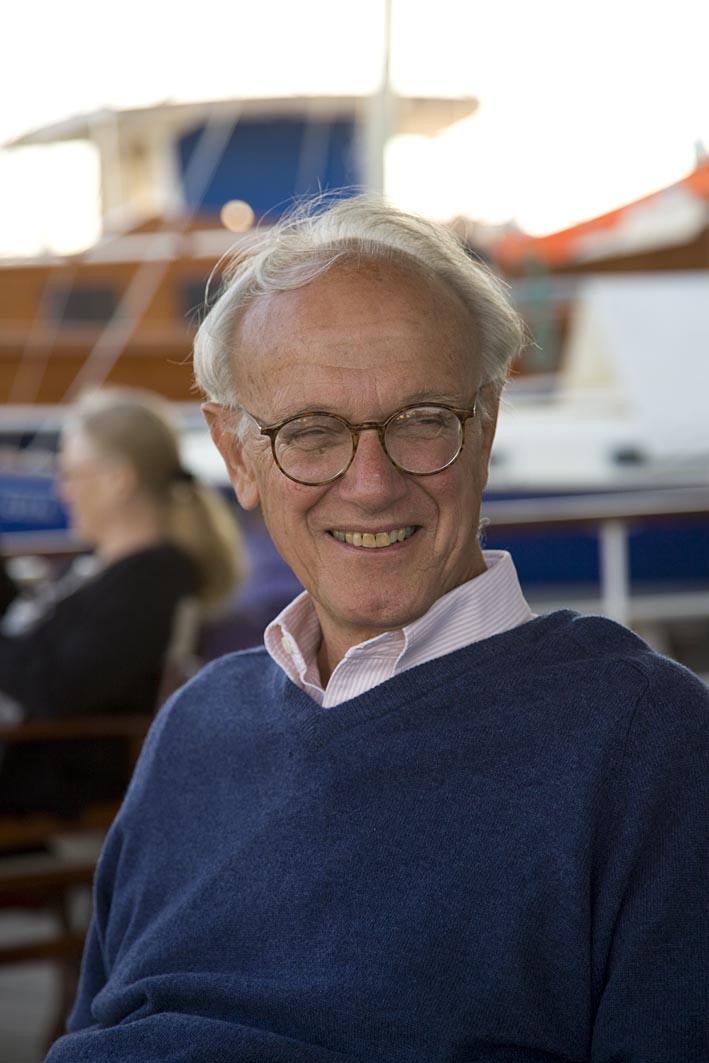
2024
The Archaeological Institute of America is proud to award the 2024 Gold Medal Award for Distinguished Archaeological Achievement to Professor John McK. Camp II.
Professor Camp’s impact on the field of Greek archaeology is extraordinary. His nine books on the Athenian Agora, Athens, and Greek archaeology more broadly, as well as the five Agora Picture Books he has authored or co-authored, have seen multiple editions and been translated into seven different languages. As his nominator comments, “He has made Agora material, and Athens generally, accessible to scholars, students and the general public with his now-classics The Athenian Agora and The Archaeology of Athens which in fact are deeply scholarly books in disguise as reader-friendly syntheses.” These works remain essential on the shelves of the interested public, faculty, and students alike. His works, with their clear and concise writing, always present complex material and lucid interpretations with compelling explanation and support. They stand as models for students even as they provide detailed understanding of archaeological developments in Athens.
In his capacity as Director of the Agora Excavations, Professor Camp has made an enormous contribution, including not only running this expansive excavation and curating its finds, but also engaging a wide variety of experts to study the material, contributing to timely publications. To demonstrate the breadth of his own scholarly work, Professor Camp’s research articles, fully 54 of them, cover topics ranging from his trailblazing studies of waterworks, massive architectural monuments, and other material culture in Athens; to inscriptions and erudite investigations of knotty historical issues such as the political relations in the Archaic period. He has given his time and expertise to numerous museum exhibits as well, including an exhibition of Edward Dodwell’s watercolors that traveled to the British Museum and the Getty.
Professor Camp’s contribution to the field also includes an unparalleled teaching record. As one letter-writer comments, “Even though [he] does not teach graduate students at Randolph Macon College, Professor Camp can claim credit for a legion of official and unofficial advisees.” He taught many undergraduates in his own classroom, but his teaching in the field reached thousands of students of all ages. As Mellon Professor at the American School of Classical Studies at Athens, he trained hundreds of graduate students in the skills they would need for their research and future teaching, as well as shared with them his remarkable knowledge of and delight in Greece both ancient and modern. During his time as Director of Excavations at the Athenian Agora he continued to involve students intensively in fieldwork and archaeological study and interpretation, and he devoted himself to increasing the diversity of those students. His teaching and outreach continue now through a very active schedule of lecturing and collaborative work around the world.
For all of these reasons, Professor Camp has richly earned the highest honor the Archaeological Institute of America can bestow, the Gold Medal Award for Distinguished Archaeological Achievement.
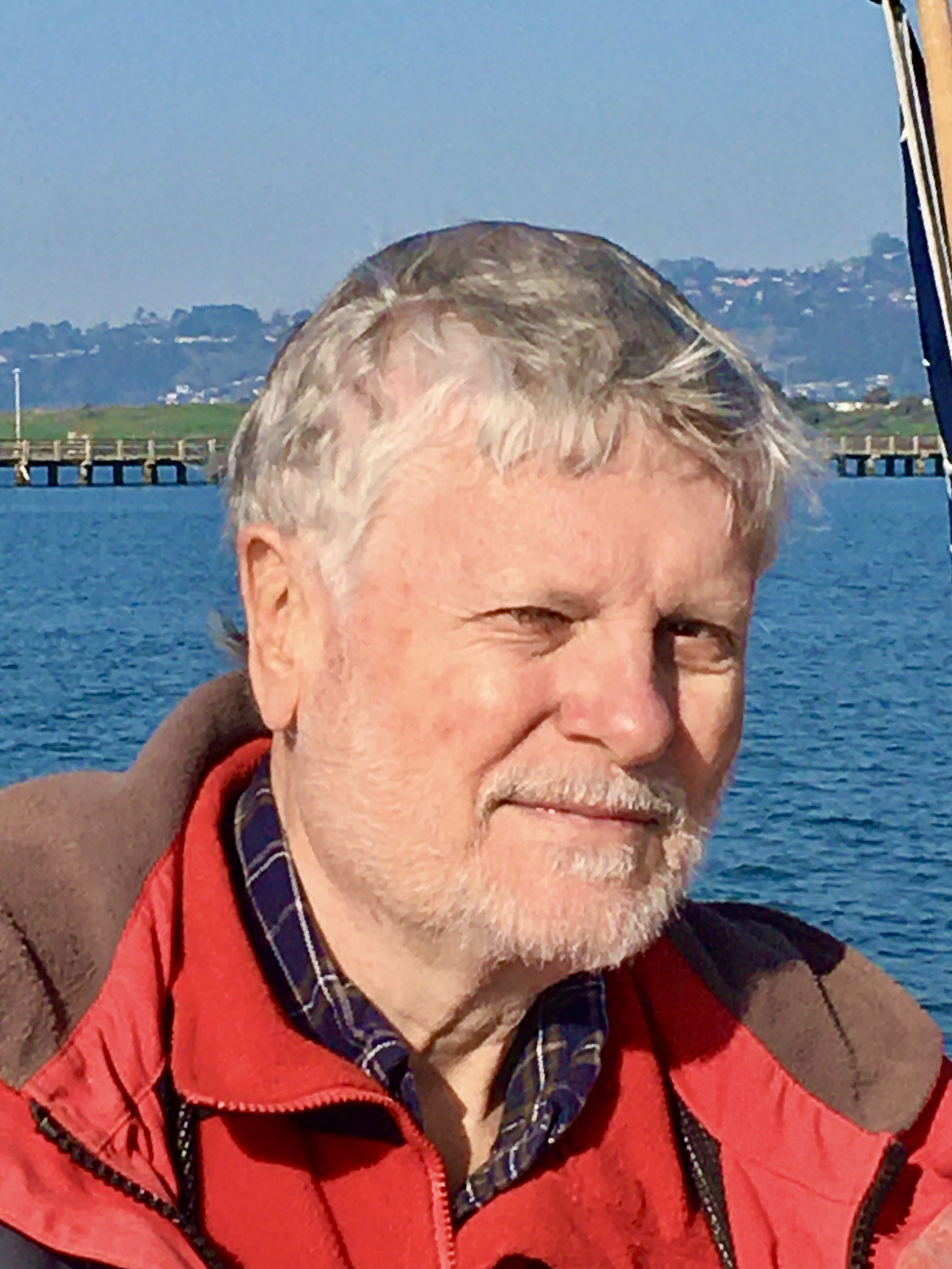
2023
The Archaeological Institute of America is proud to award the 2023 Gold Medal Award for Distinguished Archaeological Achievement to Andrew F. Stewart.
Professor Stewart has advanced archaeology and art history through both publications and fieldwork over the course of his extraordinarily productive and diverse career. He has changed our field and the ways in which we think about it. In particular, he has transformed our knowledge and understanding of ancient Greek sculpture, via focused empirical scholarship on dates, individual works, and artists, as well as through broad-ranging discussions of sexuality, reception, semiotics, psychology, economics, and culture theory. He has authored eight books, each essential to the field, as well as over one hundred scholarly articles and reviews. In addition to his work on visual culture and publications on the interpretation of sculpture, Stewart directed Berkeley’s excavations at Tel Dor in Israel for twenty years (1986-2006), where he oversaw the field school and steered the work in innovative and prescient ways including the investigation of interactions between Greeks, Romans, Phoenicians, and others. He is highly regarded for his brilliance in considering minutiae and broader issues simultaneously and his ability to unite disciplinary approaches and ideas from multiple sources in profoundly insightful new ways. As one of the scholars writing in support of his nomination comments, “Andrew Stewart has been the most significant historian of Greco-Roman art in the anglophone world, and one of the top three or four anywhere on earth.”
Professor Stewart’s teaching, wholly integrated with his research and fieldwork, has been exceptionally influential. His “powerful vitality of thinking and writing” are at the command of all students and colleagues; he has trained some of the world’s most gifted and important young scholars and has influenced the education of almost all classical archaeologists working today through his individual interactions or his transformation of the field and its teaching. He has introduced generations of students to ancient Mediterranean art and archaeology through his courses at Berkeley, through his work with Berkeley’s museum collections, and through his work at Tel Dor and in Athens, inter alia. One former student elaborates, “His teaching has the same virtues as his scholarship. In class and in conversation he is eclectic and open-minded when it comes to method, grounded in empirical data, incredibly well-prepared and disciplined…. The result of this dedication was a sense of community, partnership and familiarity without par.” Stewart serves as mentor and colleague to uncountable additional scholars around the world as well. His generosity of spirit is famous, extending to his own students during their time with him and after their graduation and to the many others with whom he interacts in person or otherwise. His ability to listen closely to people at all stages of learning or thinking about antiquity and to help them consider a problem or idea is legendary, as is his overarching desire to further the knowledge and work of all those around him.
For all of these reasons, he has richly earned the highest honor the AIA can bestow, the Gold Medal for Distinguished Archaeological Achievement.
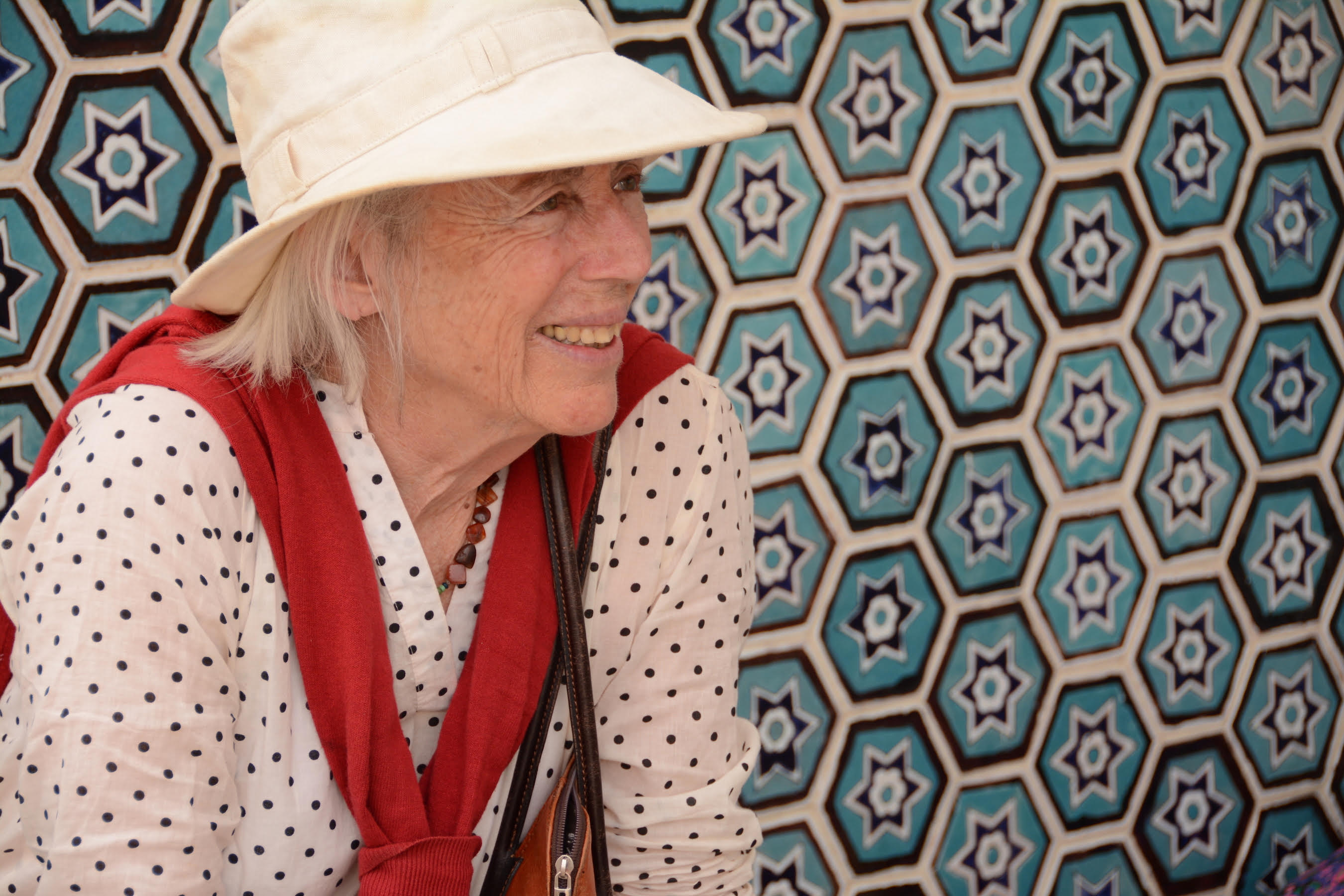
2022
The Archaeological Institute of America is proud to award the 2022 Gold Medal Award for Distinguished Archaeological Achievement to Elizabeth B. Fentress.
Dr. Fentress has transformed our knowledge and understanding of ancient Mediterranean history and its archaeology across a remarkable range of space and time. As an excavator and survey archaeologist of Roman Africa and Italy, her work has consistently framed the Mediterranean as a center of relations and frictions, emphasizing the importance of local indigenous traditions and ultimate adaptations to multiple presences. She is an outstanding field archaeologist with legendary technical talent and skills, above all her ability to read and grasp the meaning of stratigraphic evidence across many horizons. Dr. Fentress is equally highly regarded for her brilliance in interpreting landscapes in broader terms to understand population changes, economic shifts, changes in material use, and religious developments. Her most recent research on diaspora, language change, and slavery is a natural continuation of a career devoted to exploring the Mediterranean and its shores as places of constant movement and meeting.
Extraordinarily impressive is her ability to publish detailed excavation reports and synthetic thought-pieces in a timely manner; her published work is theoretically aware and sophisticated while remaining empirically grounded in archaeological evidence. She has authored or co-authored three books on North Africa and one on Italy and has edited or co-edited three more books on North Africa and five on Italy. The scholarly articles she has authored or co-authored include 44 on North Africa, 35 on Italy, seven on archaeological theory, four on Roman history, and one on epigraphy, plus 21 review articles and 14 book reviews. Also of great significance is her work to replace and extend the Fasti archeologici with Fasti Online and the online journal FOLD&R, and her work to put online the archives of colonial archaeology in the Mediterranean (NAHAN). This remarkable career has, moreover, been pursued without the benefit of a standard academic affiliation.
Dr. Fentress has served as mentor and colleague to generations of scholars. Her work with local partners in Tunisia, Algeria, and Morocco, and on developing collegial relationships with local archaeologists, academics, and authorities wherever she works, has been of immense service to the field in Europe, North Africa, and the US. She has trained generations of scholars, introducing archaeologists to each other in the field as well as from her home, reading drafts of manuscripts, and talking through ideas at length. She has thus substantially supported other archaeologists’ work by facilitating and imagining cooperative contacts as well as by offering a unique hospitality that forges unexpected friendships and collaborations. As one letter-writer comments, the lessons he learned from Dr. Fentress in “archaeological methods, research ethics, grace and understanding in interactions with local scholars and local communities, project logistics, and overall directorial leadership skills…launched my transformation from student to professional.” Another summarizes, “In all her undertakings, Lisa Fentress has nurtured students and supported colleagues, encouraging their participation in fieldwork and publications…her generosity of spirit has touched all who know her.” The exchange of ideas and techniques she regularly fosters has enriched archaeological practice and understanding across national boundaries and scholarly generations.
For all of these reasons, she has richly earned the highest honor the AIA can bestow, the Gold Medal for Distinguished Archaeological Achievement.
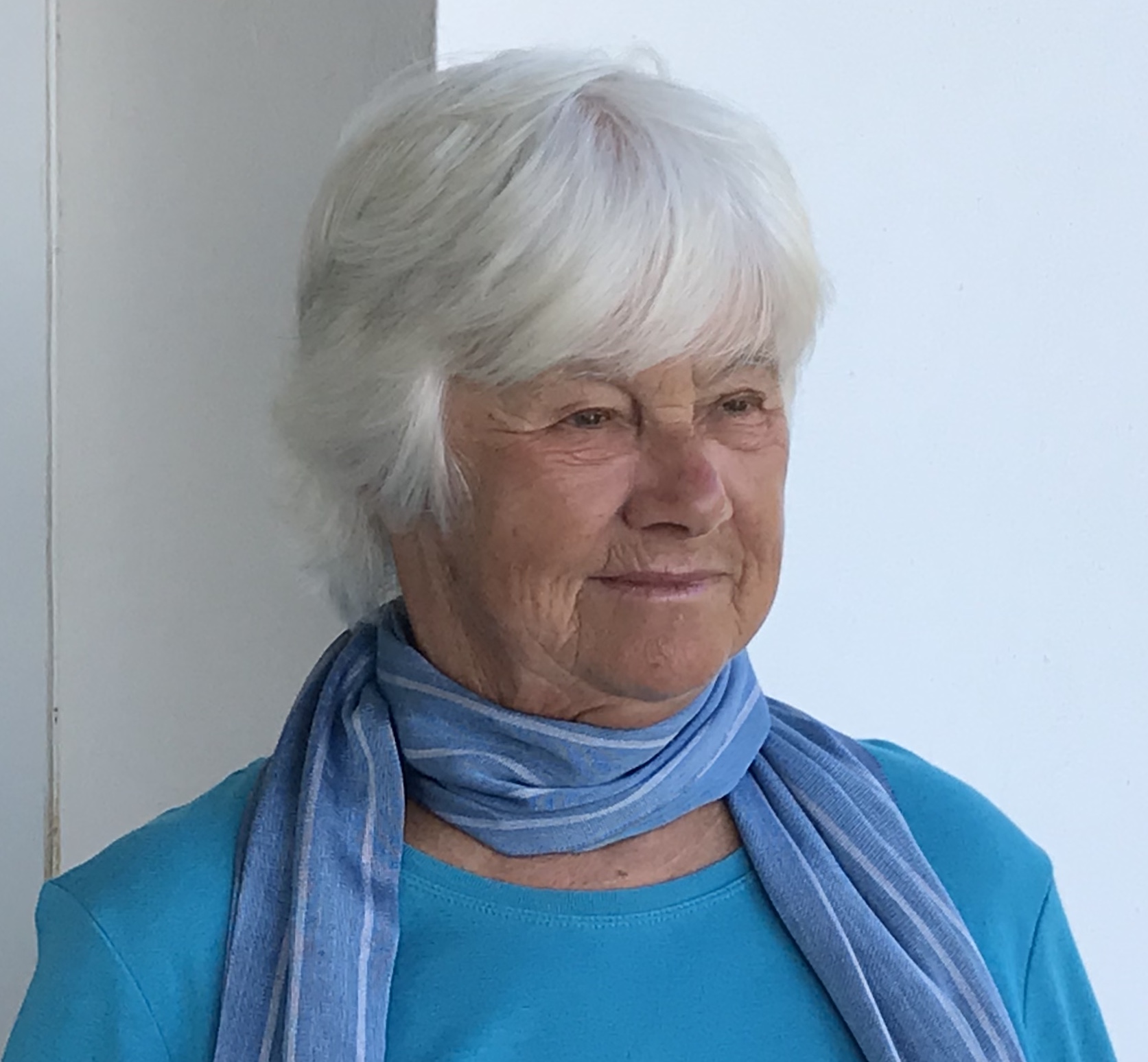
2021
The Archaeological Institute of America is proud to award the 2021 Gold Medal for Distinguished Archaeological Achievement to Katherine M.D. Dunbabin.
Dr. Dunbabin was instrumental in establishing the subject of mosaics as a valid and free-standing field within Roman Art and Archaeology, and she has become an unrivaled leader and model within North American and international ancient mosaic studies. Her revolutionary studies on mosaics have become classics in the field, her lasting contributions to scholarship remarkable.
With an extraordinarily active career spanning over fifty years, her publications continue unabated during retirement. Her early work documented and organized a vast range of material; her later work interprets mosaics in dining and performance contexts to inform us about Roman life and culture broadly construed. Traveling widely to assemble data, she incorporates mosaics of the empire, including North Africa and Spain, into consideration of Roman life and culture.
The results of her meticulous scholarship are sharply illuminating, described by colleagues as “refreshing, often a ray of light cutting through the murk of speculation, returning the object or artwork she is discussing to its role in its original physical and social context.” The very high standard of scholarly research she has set has been a model and an inspiration to three generations of art historians and archaeologists. And indeed, through her publications and her exemplary teaching record, she has taught many about evidence and its use, research and scholarship, and collegiality.
Dr. Dunbabin is renowned for her kindness, openness, and willingness to share ideas. Her stellar personal as well as professional merits have produced extraordinary new insights into the art and life of antiquity.
For all of these reasons, she has richly earned the highest honor the AIA can bestow, the Gold Medal for Distinguished Archaeological Achievement.
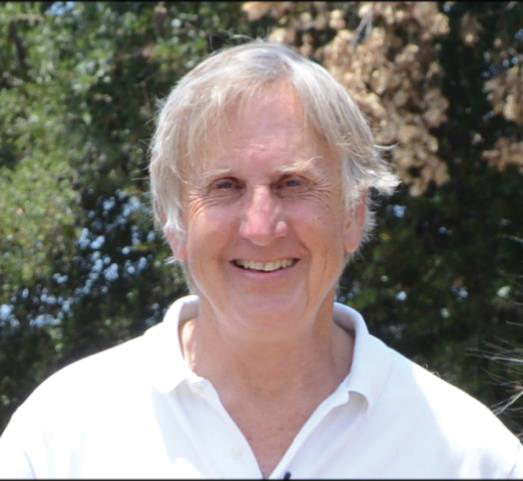
2020
The Archaeological Institute of America is proud to award the 2020 Gold Medal for Distinguished Archaeological Achievement to Jack L. Davis.
Jack Davis’s impact on our field has been enormous. He is an innovator, a leader, an educator, and a mentor. He possesses an extensive, diverse scholarly record and has had a profound influence on Classical and Aegean archaeology and on world archaeology more generally. Together with colleagues, including his wife and long-time collaborator, Sharon R. Stocker, he has shaped numerous fields and the scholars working in them. He has written over 145 scholarly articles and chapters and 18 books, in addition to numerous online publications, museum exhibitions, and outreach work.
Davis and his colleagues have been responsible for numerous important innovations in Mediterranean survey archaeology. He helped launch and direct a series of survey projects: on Keos, in Nemea, in Messenia, and in Albania. His work has been characterized by its intensive, systematic, strongly interdisciplinary, and scientific methodologies. After extensive and fruitful research in Albania, Davis, together with co-director Stocker and their team, opened new excavations at the Palace of Nestor at Pylos. There they found and excavated the un-looted, extremely wealthy shaft grave of a single male, now dubbed the Griffin Warrior. This discovery is already re-writing our understanding of Early Mycenaean Greece.
Davis’s outstanding success mentoring and educating a generation of Aegean prehistorians and other young scholars has made an indelible mark on the field of archaeology. And he has demonstrated inspired leadership as Director of the American School of Classical Studies at Athens, as Head of the Department of Classics at the University of Cincinnati, and as a member and supporter of the activities of the Archaeological Institute of America.
For all of these reasons, he has richly earned the highest honor the AIA can bestow, the Gold Medal for Distinguished Archaeological Achievement.
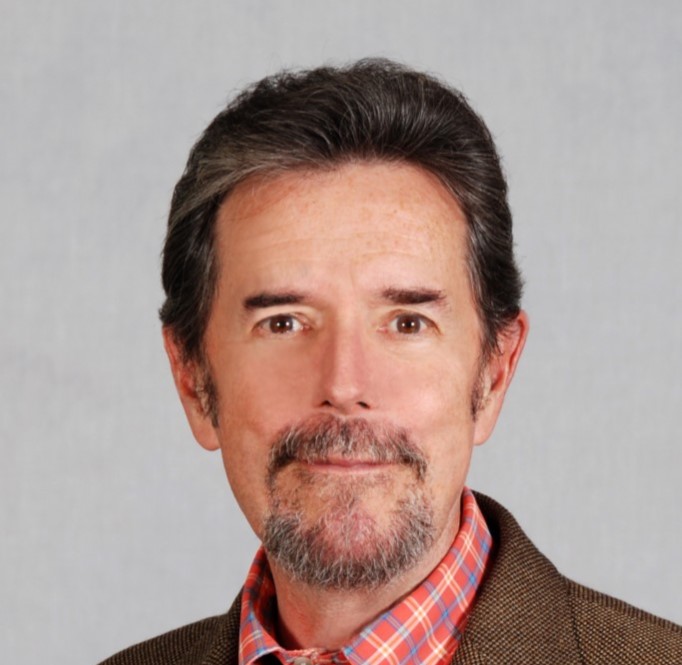
2019
The Archaeological Institute of America is pleased to present the 2019 Gold Medal for Distinguished Archaeological Achievement to Dr. Curtis Runnels.
Curtis Runnels changed the way the world understands the prehistory of the Aegean area, thanks to his extensive fieldwork, his extraordinary number and range of publications, his teaching, and his unparalleled ability to communicate to broad and varied audiences. He has transformed archaeological field methods in the southern Balkans, and has made landmark discoveries that have changed the very textbooks we use.
Runnels’ archaeological interests are broad, ranging from early prehistory to Roman coins, ethnography to disciplinary history. One of the first to introduce systematic archaeological survey to Greece, his work has revolutionized our understanding of the Palaeolithic and Mesolithic, and the very way research in the Stone Ages is now conducted.
Under his decade-long leadership of the Journal of Field Archaeology, the journal increased dramatically in visibility and impact, moving up to the rank of 13th of 239 international journals in the category of Archaeology.
An exceptional scholar, teacher, and editor, Runnels has championed a multifaceted conceptual approach that integrates specialized studies and scientific analysis into understanding site histories and regional connections. For all of these reasons, Curtis Runnels has richly earned the highest honor the AIA can bestow, the Gold Medal for Distinguished Archaeological Achievement.
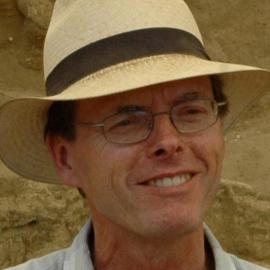
2018
Dr. Ian Hodder, Dunlevie Family Professor at Stanford University, has been one of the most influential archaeological thinkers on the planet since the early 1980s. Inspired by the ethnoarchaeological field research in East Africa he was conducting as a young professor, Dr. Hodder began to critique the positivist processual approach then dominant in North American archaeology. He argued that material culture is deeply imbued with meaning by those who create and use it, and that it is essential for archaeologists to develop approaches that embrace this understanding. During the 1980s, Hodder developed this critique, influenced by those of other scholars equally dissatisfied with the processual approach. The result emerged as the post-processual movement that has driven much of archaeological thought to the present. Through influential books such as Symbols in Action (1982), Reading the Past (1986) and edited volumes like Archaeology as Long Term History (1987), Dr. Hodder has profoundly shaped the field, incorporating and adapting perspectives from a wide range of disciplines to explore questions of power relations, agency, ideology, and meaning. His socially-engaged, post-modern archaeology has set the field’s intellectual agenda throughout the final two decades of the twentieth century and into the first part of the twenty-first.
In 1999 Dr. Hodder moved to Stanford University, where he was the founding director of the Stanford Archaeology Center. Over the course of his nearly two decades there, Stanford has emerged as one of the leading centers in the world for archaeological studies.
Dr. Hodder has always sought to test his theoretical perspectives by applying them to concrete research through archaeological fieldwork. Since 1993, he has directed fieldwork at the important Neolithic settlement at Çatalhöyük, in Turkey, heading up a large, multinational team that has pioneered a collaborative and participatory archaeology, developing new approaches to archaeological narrative and the digital presentation of research results that point the way forward for archaeology today and for future generations of archaeologists.
In recognition of his exceptional impact on our field, the Archaeological Institute of America awards the 2018 Gold Medal for Distinguished Archaeological Achievement to Ian Hodder.
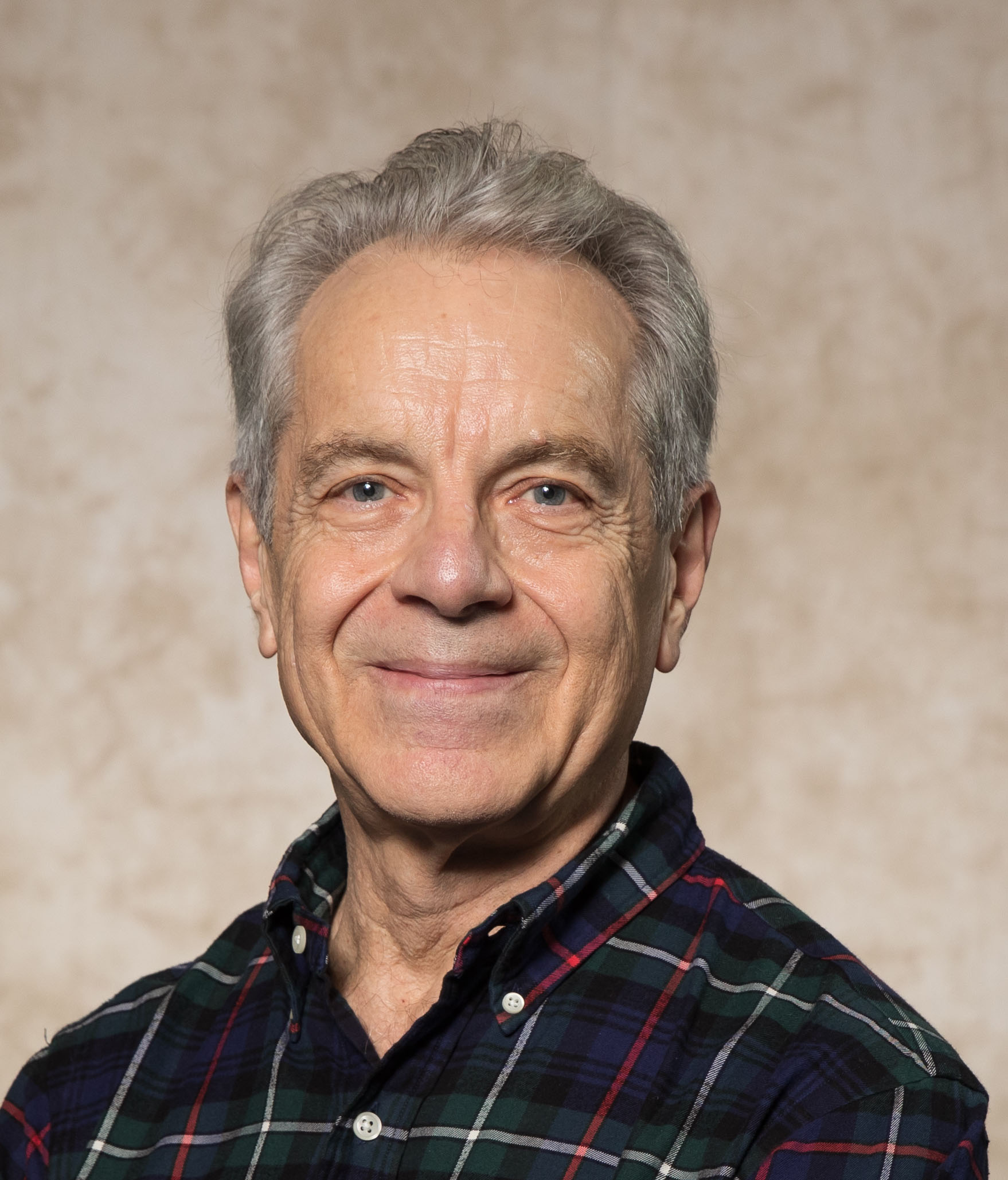
2017
The Archaeological Institute of America is proud to award the 2017 Gold Medal for Distinguished Archaeological Achievement to John R. Clarke.
In a long and distinguished career John R. Clarke, the Annie Laurie Howard Regents Professor in Fine Arts at the University of Texas at Austin, has shown himself to be among the most innovative, prolific, and influential scholars of Roman art and material culture of his generation and has played a major role in shaping the way that the field is practiced in the 21st century. In a series of seminal books including The Houses of Roman Italy: Ritual, Space, and Decoration [1991], Looking at Love-Making [1998], Art in the Lives of Ordinary Romans [2003] and Looking at Laughter: Humor, Power, and Transgression in Roman Visual Culture, 100 B.C.-A.D. 250 [2007], that drew on the full range of representative and decorative art in new and creative ways, Clarke employed close and careful contextual analysis to elucidate major elements of Roman culture and to shape our understanding of these.
For the past decade he has also directed the Oplontis Project, an ongoing initiative that involves the excavation, study and publication of the two great villas at Oplontis, near Pompeii – Villa A, a luxury villa that has been designated a UNESCO World Heritage site, and Villa B, a warehouse-cum-residence that does much to inform us about Roman economic practices. For this project Clarke has assembled and directed a multi-national team of forty-six scientists, archaeologists, digital modelers, philologists, and art historians, to rescue these two important structures from the state of abandonment in which they were left following their initial excavation in the 1970s and 1980s. The first of the final reports on this work, which appeared in 2014 as an ACLS Humanities e-book, constitutes a landmark in the mobilization of digital technologies for documenting and publishing information on archaeological sites.
Not to be overlooked are Clarke’s impressive contributions in the areas of teaching and service. He has been both a highly effective teacher and a generous mentor to students and colleagues at all stages of their career, and has service as President of the College Art Association, as a member of the Board of Directors of the American Council of Learned Societies, and as a Trustee of the American Academy in Rome.
In recognition of his outstanding record of scholarly achievement, along with his notable contributions in both teaching and service, the Archaeological Institute of America awards the 2017 Gold Medal for Distinguished Archaeological Achievement to John R. Clarke.
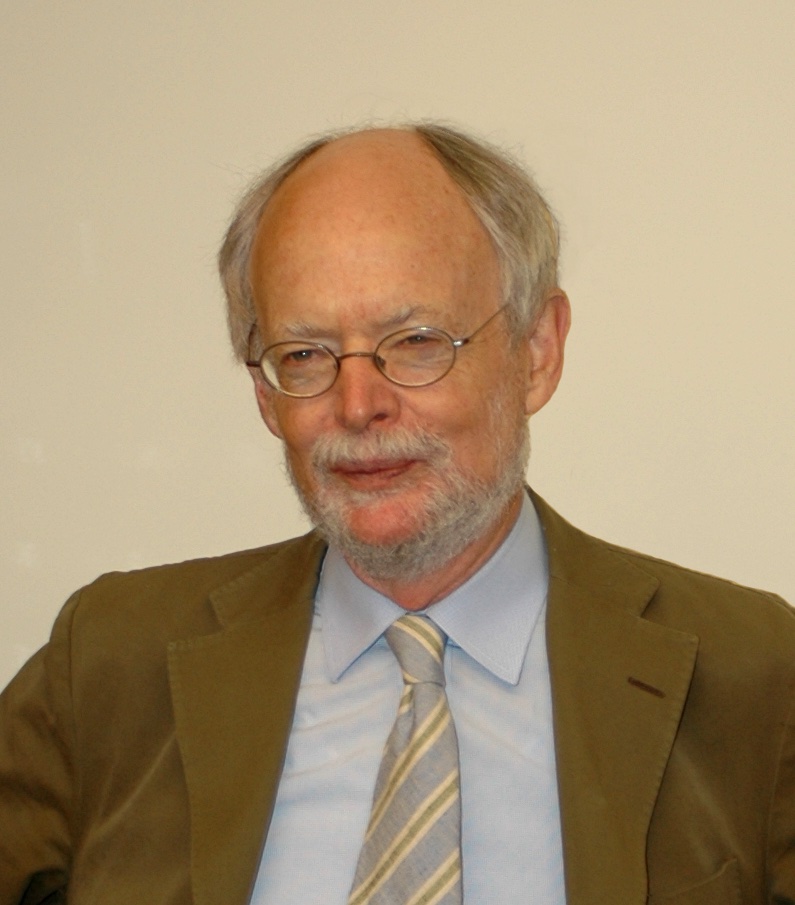
2016
The Archaeological Institute of America is proud to award the 2016 Gold Medal for Distinguished Archaeological Achievement to Malcolm (Mac) Bell III. Over the course of a long and distinguished career, Bell has exemplified the ideals of the AIA through his scholarship, teaching, mentorship, and service to the profession. The AIA highlights in particular his courageous, energetic, and highly successful leadership in the effort to combat the illegal excavation, export, and sale of antiquities. Catalyzed when he personally witnessed the widespread destruction of the site of Morgantina by illegal excavators, Bell rose to the occasion and placed the problem front and center both in the international media and in the profession by organizing conferences, authoring scholarly and popular articles, and through diplomatic work behind the scenes. He provided essential leadership in crafting a bilateral agreement between Italy and the United States for the protection of cultural heritage, and scored an impressive series of victories in engineering the repatriation to Italy of works of outstanding importance from American collections, including the Morgantina silver hoard, the Morgantina Aphrodite, and the Morgantina acroliths. We owe Bell a debt of gratitude for acting as the conscience of our profession and for moving our country and its institutions in the right direction on the issue of the looting of antiquities. Bell has served as the director of excavations at Morgantina from 1980 through the present, and in this role has overseen the conduct of highly fruitful work at this important archaeological site. He authored the first in the series of final reports from the site, and has since shepherded through to publication five additional volumes, with one more volume for which he is principal author currently nearing completion. In his role as site director, Bell has introduced to fieldwork a long list of scholars who have gone on to successful careers in archaeology. In addition, he has authored an impressive number of articles on a wide variety of topics, establishing himself as an international authority on the archaeology of Sicily and ancient Greek urbanism. Last but not least, Bell has undertaken important service to the field, serving as AIA Vice President for Professional Responsibilities, as Professor in Charge of the School of Classical Studies and as the President of the Classical Society of the American Academy in Rome. Bell’s record of achievement and generous contributions to the profession make him a most deserving recipient of the 2016 Gold Medal Award.
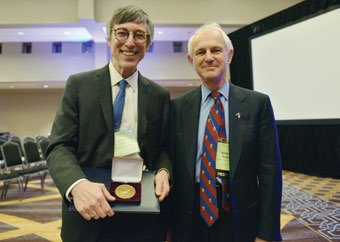
2015
The Archaeological Institute of America is proud to award the 2015 Gold Medal for Distinguished Archaeological Achievement to C. Brian Rose. Rose is perhaps best known for his efforts while President of the AIA (2007–2010) to provide cultural heritage training to U.S. military personnel serving in Iraq and Afghanistan. By raising soldiers’ sensitivity to their fields of operation as human landscapes with a rich cultural heritage, he humanized the terrible face of bloody conflict and demonstrated the importance of archaeology to the core values of our society. By training American service people to appreciate the culture and history of the places where they had been deployed, Rose made a singularly important contribution to the greater good. Rose’s record of achievement in archaeology includes much more. He has made multiple major contributions to the AIA, the American Academy in Rome, and the American Research Institute in Turkey. He has served as deputy director of the University of Pennsylvania Museum of Archaeology and Anthropology and currently serves as the curator-in-charge of that institution’s Mediterranean Section. He has chaired both the Interdepartmental Graduate Group in the Art and Archaeology of the Mediterranean World at the University of Pennsylvania and the Department of Classics at the University of Cincinnati, historically two of the most important programs in classical archaeology in the United States. Rose has been an energetic and highly successful field researcher, directing or codirecting three major projects in Turkey—first the post–Bronze Age excavations at Troy, then the Granicus River Valley Archaeological Survey Project, and now the Gordion Archaeological Project. In connection with these initiatives, he has authored or edited numerous reports and synthesizing publications that have established him as a leading figure in the archaeology of Anatolia. His original area of specialization, however, was Roman sculpture, and over the course of his career he has carved out a position as a highly influential scholar in this field as well, authoring several important publications. What is more, Rose has been a highly influential educator. He has not only trained and inspired numerous students at the undergraduate and graduate levels, first at the University of Cincinnati and now at the University of Pennsylvania, but also has served as the face of our discipline beyond the confines of the academy, delivering countless public lectures to audiences of every imaginable sort and making numerous appearances in the popular media. His abilities as a public speaker are legendary, and he possesses a special gift for gauging, engaging, and holding an audience. In recognition of this vast, varied, and exceptional record of achievement, the AIA takes great pride and pleasure in awarding the 2015 Gold Medal for Distinguished Archaeological Achievement to C. Brian Rose.
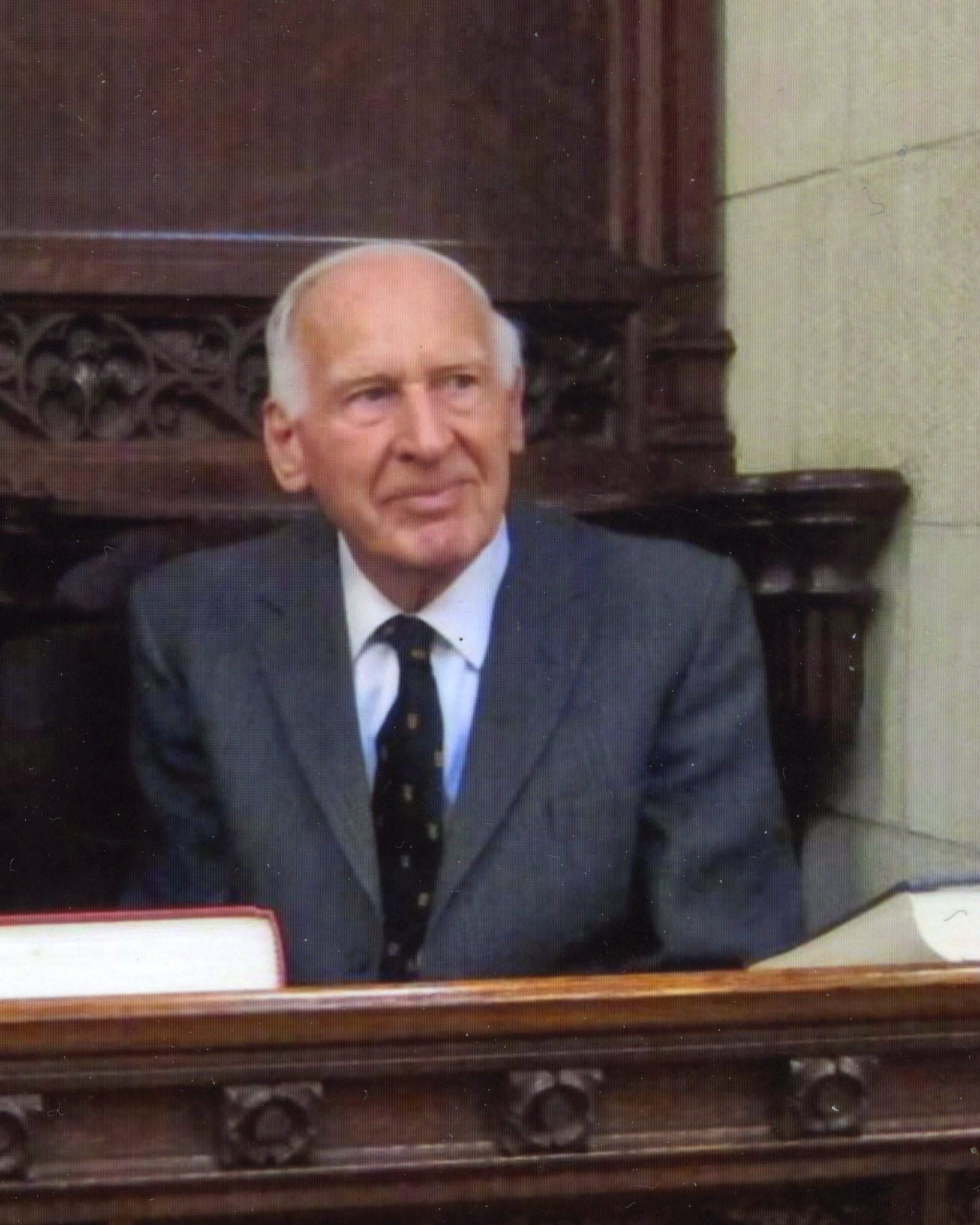
2014
The Archaeological Institute of America is proud to award the 2014 Gold Medal for Distinguished Archaeological Achievement to L. Hugh Sackett. Sackett amply fulfills all the criteria expected for this prestigious award. First, he is a lifelong, dedicated teacher. In his position at Groton School in Massachusetts, which he has held since the 1950s, he has instructed hundreds of individuals, in Groton and in Greece, about Greek archaeology and the classics, in ways that have affected their lives most profoundly. In more than one case, his students have followed his lead into the world of archaeological research. In fieldwork, Sackett has left his mark on more, and more significant, sites than most of us could ever dream of, let alone actually claim. Knossos (including the Unexplored Mansion), Palaikastro, Lefkandi, the Dema House, and the Vari House—these are a few of the high points in a long and distinguished field career in which he has continually practiced excellent and meticulous fieldwork. Let us highlight two other exemplary characteristics of Sackett’s record. First is his breadth of interest. In an age of increasing specialization, it is not often that the same person edits books on a prehistoric ivory kouros and on a Roman colony, or writes classic articles on Attic country houses and on bull’s head rhyta—or that a master excavator also happened to be a pioneer of diachronic regional survey in the late 1960s. But all these things are true of Sackett. Second, he possesses an acute sense of responsibility for every project he has started, from the initial fundraising stage to final publication. In some cases, he has inherited data sets or sites that could easily have been orphaned or abandoned, as so many data sets and sites sadly are. People may not agree about which aspect of Sackett’s work represents his most significant legacy. Some would point to the major Cretan site of Palaikastro and the impact of discoveries there on our conceptions of Minoan Crete, others to the revolutionary discovery and exploration of Iron Age Lefkandi and the light cast on a so-called Dark Age. It is a wonderful thing to be able to have such a debate about a single archaeologist. L. Hugh Sackett is a scholar of great vigor, astute judgment, and endless patience. He has served our field well for more than 60 years as teacher, field archaeologist, and advocate for Greek heritage—and he has done it all with great humility, loyalty, and generosity of spirit. He is an eminent and most deserving recipient of the 2014 Gold Medal for Distinguished Archaeological Achievement.
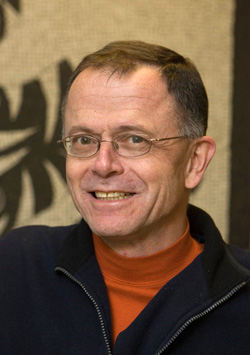
2013
The Archaeological Institute of America is proud to award the 2013 Gold Medal for Distinguished Archaeological Achievement to Jeremy B. Rutter. Rutter is Sherman Fairchild Professor of the Humanities at Dartmouth College, where he has spent almost his entire professional career. His first published article may have been on Catullus 17, but his international reputation is founded in his unsurpassed, transformational work in the field of Aegean Bronze Age ceramics. His books are essential reference works, from his first study of the creation in southern Laconia of the Mycenaean style of vase painting to his monumental analysis of Early Bronze Age ceramics from the type-site of Lerna to, most recently, his extensive contributions to volume 5 of the Kommos series. His numerous journal articles ask and answer provocative questions, many of which transcend the specific period or region under study to generate new modes of thinking about the study and use of ceramic data. Rutter’s scholarship is wide ranging and rock solid, a monumental body of work. Yet it might be argued that his human legacy is even richer. He is one of those great scholars who is genuinely motivated by his belief in, and love and enthusiasm for, his field. He conveys that with a generosity of spirit and of time that is both infectious and inspirational. His years at Dartmouth—from his freely shared, much-cribbed online course lectures and outlines to his involvement in the Hood Museum of Art to his now legendary term-long study tours in Greece—alone would merit praise. Yet the extraordinary fact is that this individual, who has never had graduate students of his own (due to his institutional position), has shaped future generations of Aegean researchers more than most who have. His investment in teaching, at all levels, and his encouragement of high standards and even harder thinking is a model for those concerned—as Rutter has always been—for the future and the betterment of the discipline of archaeology. Every letter submitted in support of his nomination mentioned, with a touching mixture of admiration, warmth, and dismay, his famously detailed “Ruttergrams”—prompt, lengthy, often handwritten comments on work sent to him for review: all informed by encyclopedic knowledge, a gimlet eye for lapses in logic, and the kindest imaginable manner of suggesting numerous ways in which the manuscript might be improved. His has been truly a selfless scholarship, concerned with assisting colleagues at whatever stage of their careers and with advancing the field as a whole, without the slightest concern for personal gain or kudos. Such quiet but effective contributions deserve, in these often clamorous times, the highest of recognitions. The Archaeological Institute of America is honored to present its 2013 Gold Medal for Distinguished Archaeological Achievement to Jeremy B. Rutter.
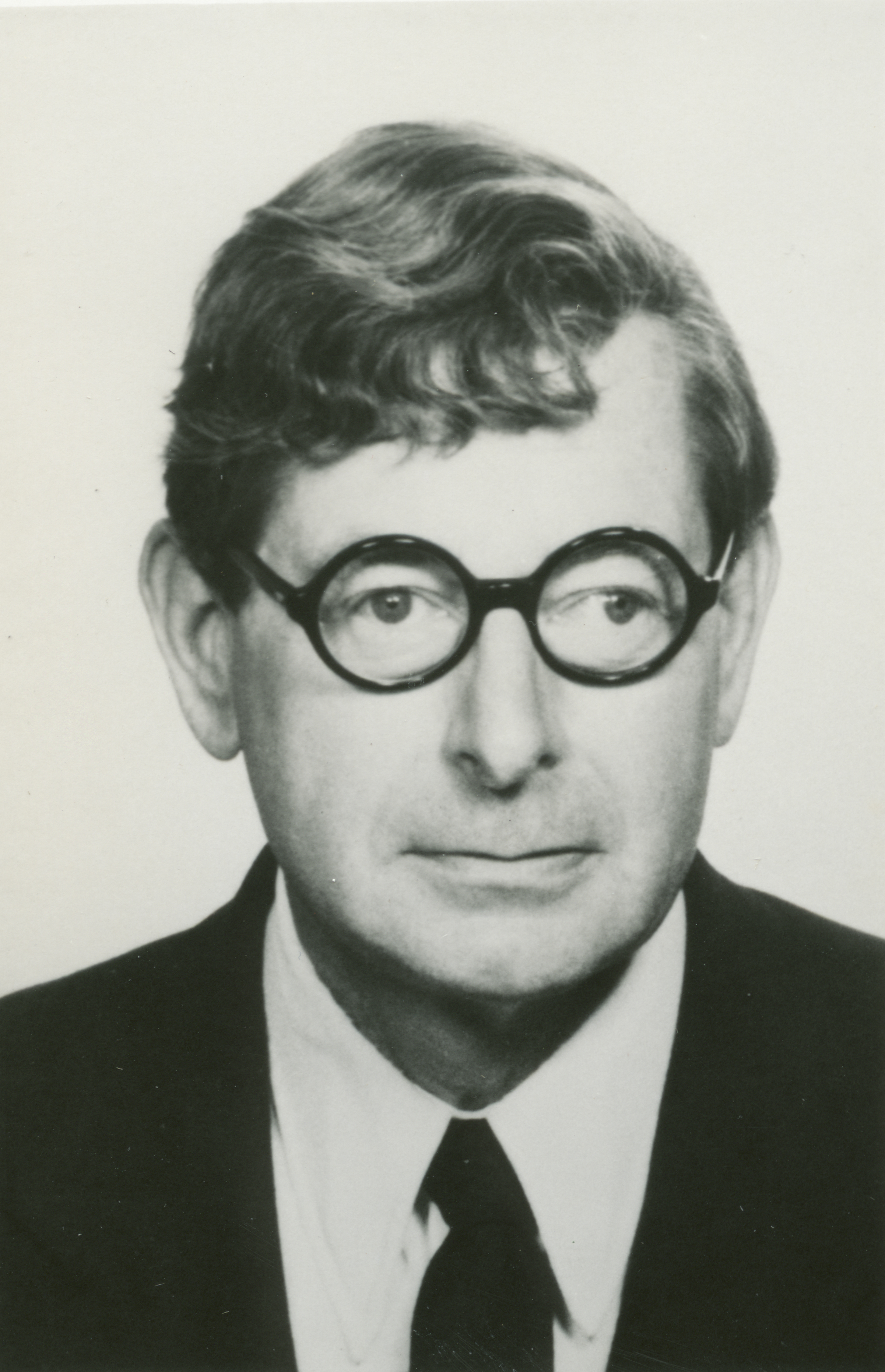
2012
The Archaeological Institute of America’s 2012 Gold Medal for Distinguished Archaeological Achievement is awarded to Lawrence Richardson, jr. Richardson has had an extraordinary career in Roman studies with special reference to ancient Italy. He began his archaeological fieldwork after World War II as a principal investigator of the Latin colony of Cosa in Etruria. His publication of the Hellenistic terracottas from the temples of the arx and forum—the first improvement on the broad general classification of Arvid Andrén—remains a standard reference in the field, as does his study of the comitium/curia complexes at Cosa, Poseidonia/Paestum, and Rome itself.
His books and articles on Pompeii and Rome are the works for which he is now best known. A New Topographical Dictionary of Ancient Rome (Baltimore 1992) is a constant citation in Steinby’s multivolume Lexicon topographicum urbis romae (Rome 1993), and it is a work, along with Pompeii: An Architectural History (Baltimore 1988), from which students and colleagues alike continue to draw great profit. His most recent work on Pompeian painting, A Catalog of Identifiable Painters of Ancient Pompeii, Herculaneum, and Stabiae (Baltimore 2000), maintains the balance between architecture, painting, and the plastic arts characteristic of his scholarship.
His range of scholarly contributions is formidable and includes some 50 articles in the Princeton Encyclopedia of Classical Sites (Princeton 1976) and about the same number in An Encyclopedia of the History of Classical Archaeology (Westport, Conn. 1996). And one cannot fail to note the many articles in which he brought archaeology felicitously to bear on the interpretation of Latin literature and vice versa. Indeed, an Italian Pompeian colleague, in his review of Pompeii: An Architectural History (1988), observed that Richardson could not have so masterfully animated the history, people, and life of Pompeii without his exceptional knowledge of Roman literature.
As an archaeologist and a philologist, Lawrence Richardson, jr., is an exemplary recipient of the 2012 Gold Medal of the Archaeological Institute of America.
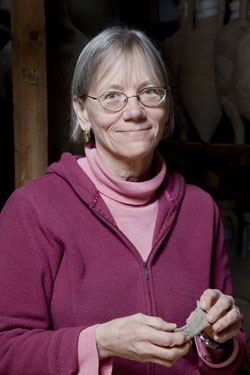
2011
Susan Irene Rotroff epitomizes all that professional archaeologists should aspire to: inspired teaching, extensive fieldwork, and an international reputation as a scholar.
Rotroff has been a dedicated and admired teacher for 40 years; her students are unanimous in praising her knowledge, her commitment to teaching, and her enthusiasm for the field. Many of them have chosen to pursue archaeology as a career as a direct result of her inspiration and guidance.
In the field, she has excavated in the Athenian Agora, on Samothrace, at Lefkandi, Corinth, and Carthage. She has also served as a pottery consultant at multiple sites and assisted innumerable excavators with questions about their Hellenistic pottery.
The foundation of her scholarship is her authoritative publication of the huge corpus of Hellenistic pottery recovered in the excavations of the Athenian Agora, in multiple volumes beginning with her dissertation in 1975. As the acknowledged world expert on the pottery of the Hellenistic world, she has had a wide impact on the scholarship of antiquity during this pivotal era.
Her expertise places her at the very center of major archaeological issues. Her analysis of the pottery from the royal tombs at Vergina is essential in trying to determine their date and the possible identities of the occupants. More recently, her work on earlier Agora deposits has led her to down-date the earliest Attic red-figure pottery, an argument that will have significant repercussions for archaeologists and art historians alike.
Susan Rotroff has had a distinguished career as a teacher and a scholar. She is an outstanding recipient of the 2011 Gold Medal of the Archaeological Institute of America.
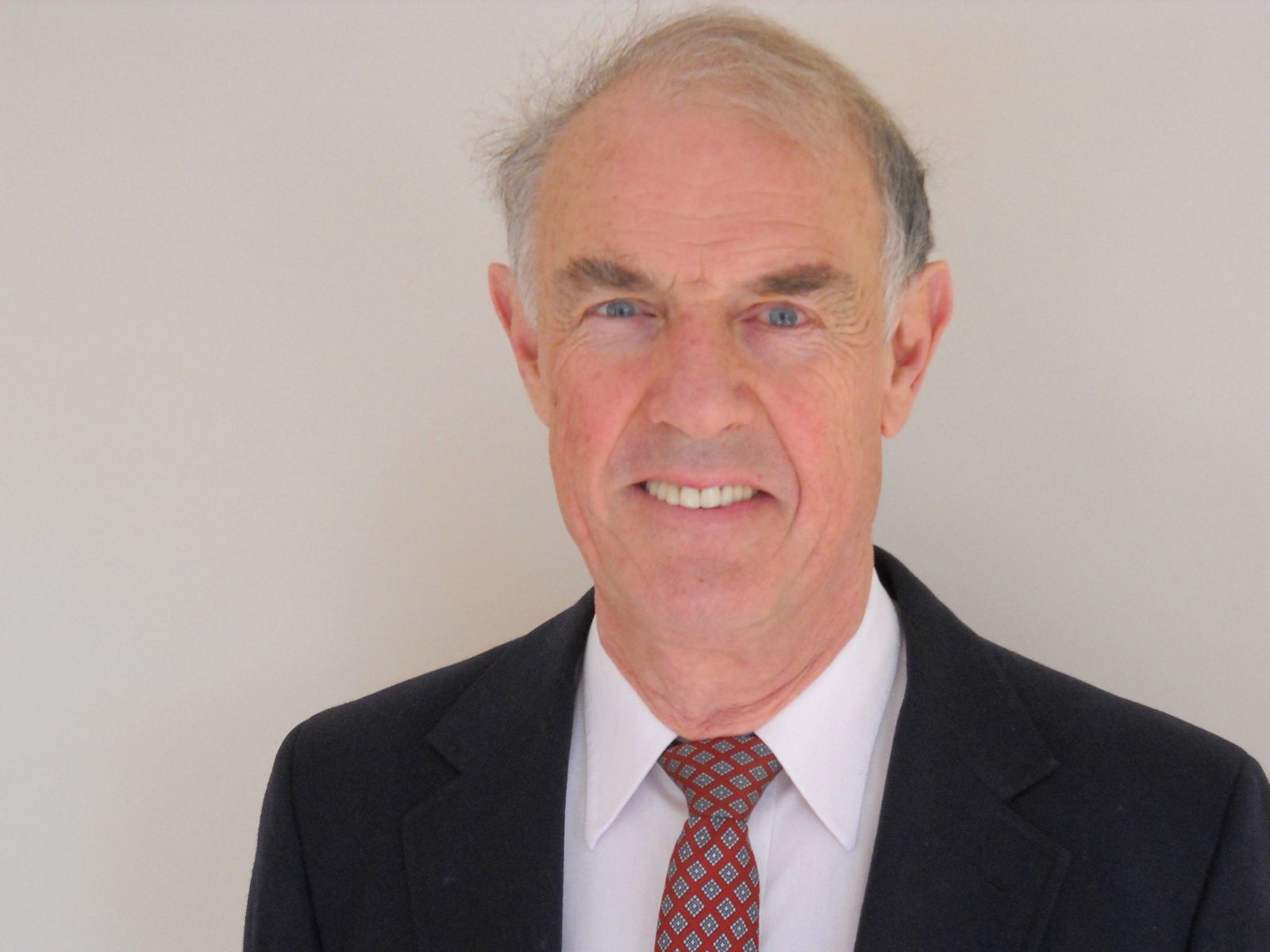
2010
It is hard to imagine what the field of classical archaeology, and archaeology in general, would look like without the Journal of Roman Archaeology, which was founded by John H. Humphrey in 1988. Within a few years, JRA had become the global interdisciplinary forum in which to publish work on the archaeology of the Roman world. Not only did it bring visibility to the field, but it also fostered a sense of intellectual coherence to research that spanned a geographically and chronologically diverse empire. JRA’s ever-growing size, as well as its many supplements—now 76 in number—are testimony to the authorial respect that Humphrey engenders.
Yet Humphrey’s distinguished career extends well beyond editing. His 1986 book Roman Circuses: Arenas for Chariot Racing (London) remains the standard work on the subject. As field director of the University of Michigan excavations at Carthage, Humphrey edited and published seven volumes on the excavations from 1975 through 1982. This was followed in 1986 by the publication of The Circus and a Byzantine Cemetery at Carthage (Ann Arbor), which he edited and co-authored. He was also the principal investigator from 1990 to 1995 of the Tuniso-American excavations at Leptiminus, Tunisia, and editor and coauthor of two volumes on the results of the excavations.
No less remarkably in terms of its contribution to the cultural heritage of Tunisia and to the public dissemination of archaeological knowledge, Humphrey has directed and completed the construction of the Musée Romain et Paléochrétien at Carthage in 1983–1984 and a gallery in the archaeological museum at Lamta, Tunisia, in 1993–1994. In the same vein, he has contributed significantly to the advancement of classical archaeology through his many years of superb teaching and service as director of many dissertations in Roman archaeology and history at the University of Michigan.
Perhaps no other single individual has played a greater role over the past two decades in shaping the discipline of Roman archaeology. The AIA is proud to award its 2010 Gold Medal to this worthy archaeologist.
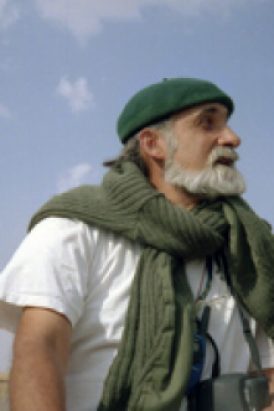
2009
In his long and productive career, Henry Tutwiler Wright has epitomized the qualities that are recognized by the AIA’s Gold Medal for Distinguished Archaeological Achievement: significant contributions to archaeology through fieldwork, publications, and teaching. His contributions to the field in all three of these areas are manifold.
Henry Wright is both a consummate field archaeologist and an outstanding theoretician. His highly influential publications on the origins and functioning of ancient state-based societies are grounded in his fieldwork in China, Egypt, Iran, Iraq, Madagascar, Syria, and Turkey. A senior scholar who still draws his own finds in the field, Dr. Wright has trained and mentored hundreds of archaeologists while writing at a formidable pace.
Throughout his career, his research has focused primarily on the study of the emergence of the world’s earliest state-level societies. His work on state emergence began in 1965 when, as a doctoral student at the University of Chicago, Wright directed an archaeological survey around the early Mespotamian city of Ur and conducted excavations at an Early Dynastic village site in southern Iraq. From 1968 through 1978, he extended his Mesopotamian research into Iran, where he carried out both excavations and surveys. Subsequently he did fieldwork in Madagascar, investigating a case of much later state emergence. In addition, Wright co-directed a field project for six years in the Eastern Desert of Egypt exploring Greco-Roman trade routes; worked for some seasons in Turkey; regularly participates in the British mission to Tell Brak in Eastern Syria; and, for the last 10 years has collaborated on projects in China, recently beginning a new project in southwest China with one of his newly graduated Ph.D. students. In addition, Henry Wright brings his well-honed field skills to help train students and young colleagues around the globe in modern archaeological field techniques on projects in many countries including Eritrea, China, Mongolia, Turkey, Mayanmar, Madagascar, Michigan, Mexico and Thailand.
Wright exhibits a global breadth and depth in his theoretical writings and publications as well. His more than 120 publications run the gamut from the detailed archaeological reports and monographs that comprise the core ‘data’ of our discipline to major theoretical discussions of theories of state emergence – a topic to which he brings encyclopedic knowledge and intellectual rigor. The extraordinary range of his work can be illustrated by the titles of his publications from the earliest, “An Archaeological Survey of the Upper Potomac Valley,” in The West Virginia Archaeologist (1959) to his latest ones: “The Polycentricity of Archaic Civilizations” in A Catalyst for Ideas (2006); “Prepottery Neolithic Sites in Eastern Syria,” Paleorient (2006), and Early State Formation in Central Madagascar: An Archaeological Survey of Western Avaradrano (2007).
Wright is also the consummate teacher, not only in the field, but also in the classroom and laboratory. He has had some 35 doctoral students and has served on more than 50 additional doctoral committees. His dedication to teaching and nurturing students has been acknowledged by the University of Michigan, where he has been appointed the Albert C. Spaulding Distinguished University Professor of Anthropology.
Henry Wright’s enormous contributions to scholarship have been acknowledged by his receipt of a MacArthur Foundation Award in 1993 and election to the National Academy of Sciences in 1994. His outstanding contributions to archaeological fieldwork, publication and teaching make Henry T. Wright an incomparable recipient for the Archaeological Institute of America’s 2009 Gold Medal for Distinguished Archaeological Achievement as well.
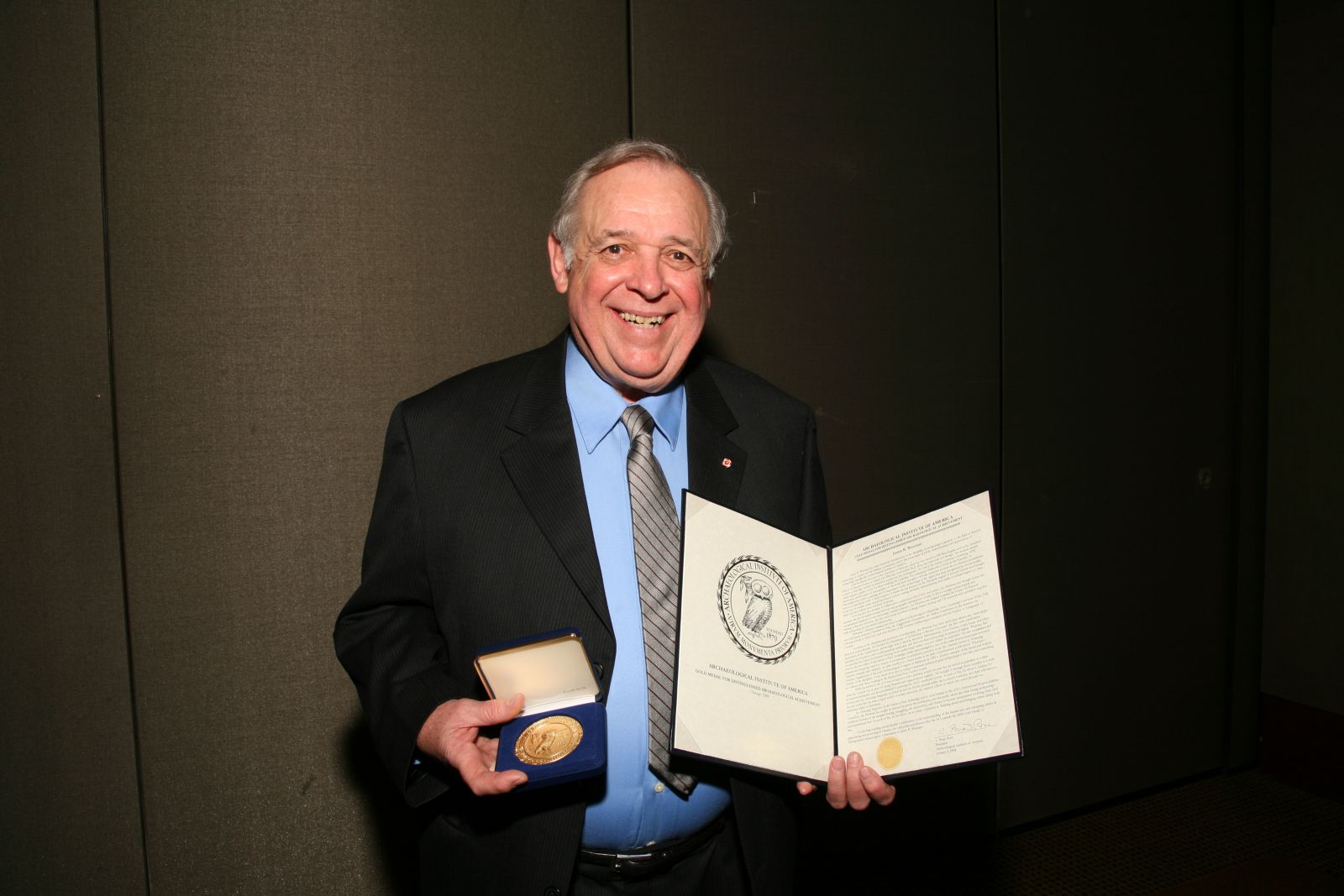
2008
James R. Wiseman has made manifold contributions to the discipline of archaeology in general, to the field of classical archaeology in Greece and the Balkans in particular, and to the promotion of public understanding and appreciation of archaeology through the Archaeological Institute of America.
After his initial education at the University of Missouri, where he was elected to Phi Beta Kappa, and at the American School of Classical Studies at Athens, Jim Wiseman received his Ph.D. from the University of Chicago. His work in ancient Corinth at that time resulted in numerous articles and the monograph, The Land of the Ancient Corinthians (Göteborg 1978), which remains a prime source for those studying the Corinthia. His subsequent fieldwork at Stobi, in the Republic of Macedonia, and the series of monographs on the work there brought a virtually unknown ancient city to scholarly prominence. This publication series is ongoing, and its importance to the archaeology of the region has been recognized by several public honors in Macedonia itself. A third program of fieldwork was focused on the Nikopolis region of western Greece and brought in the use of satellite, aerial, and ground-based remote sensing methods, demonstrating their utility to archaeologists at a time when few had realized these methods’ potential.
Over the past two decades, in collaborative conferences with NASA and others, Wiseman has brought home this message; the use of remote sensing methods and geographic information systems (GIS) to manage archaeological and topographical databases is now increasingly standard practice. Jim Wiseman also helped establish the Center for Remote Sensing at Boston University, the first such center anywhere to bring remote sensing and GIS methods and specialists together with archaeology in a productive relationship.
Wiseman’s scholarly standing has been recognized with prestigious fellowships from Cambridge University (Clare Hall and McDonald Institute), Dumbarton Oaks, the Guggenheim Foundation, the Mellon Foundation (at the Institute for Advanced Study in Princeton), and with election to the German Archaeological Institute and the Society of Antiquaries of London.
In service to the discipline and profession of archaeology, Wiseman has done more than almost any other single person in recent decades. He founded the Department of Archaeology at Boston University, the first such stand-alone department in the United States, and brought into it classical, historical, Mesoamerican, Near Eastern, south Asian, and other specialists to construct a truly world-spanning curriculum that does not limit archaeology by period or region. Wiseman has ensured that the Center for Remote Sensing serves archaeology widely—not just within the university. He also established and acted as the first editor of the Journal of Field Archaeology, widely acknowledged as one of the main international peer-reviewed journals and frequently used as a source of information on publication patterns, as are the American Journal of Archaeology, American Antiquity, and Antiquity—in other words, it is a brand leader in the field of professional publications. Wiseman’s visionary organization of the Joint Archaeological Congress at Baltimore in 1989 is another example of his broad and holistic concept of the discipline. It was ahead of its time in trying to persuade anthropological archaeologists that they had something in common with those working in the classical and Near Eastern worlds.
While his service to the AIA was recognized with a previous award, we note that he served as president at a time when the Institute was in need of strong financial and organizational support. He brought it through those troubles to a state of renewed prosperity and devoted himself to pursuing the AIA’s continued success. As part of this, he wrote a column for several years for Archaeology Magazine, in which he laid out for the general public the Institute’s concerns and their relevance to the real world: this has been a signal service in public education, the ultimate effects of which may reach beyond our immediate ability to document.
In Archaeology Magazine, in the Journal of Field Archaeology, and in such forums as the AIA’s Professional Responsibilities Committee, Jim Wiseman has sought to educate his peers, the profession, and the public about the crisis facing archaeology worldwide because of the rampant looting, smuggling, site destruction, and threats to historic monuments resulting from civil and international wars. In much of this, he has been—as so often—a pioneer in thinking ahead and bringing others along with him.
For his long-standing and invaluable contributions to the understanding of the human past and educating others in appreciating and protecting its remains, it is with pride and pleasure that the AIA awards the 2008 Gold Medal for Distinguished Archaeological Achievement to James R. Wiseman.
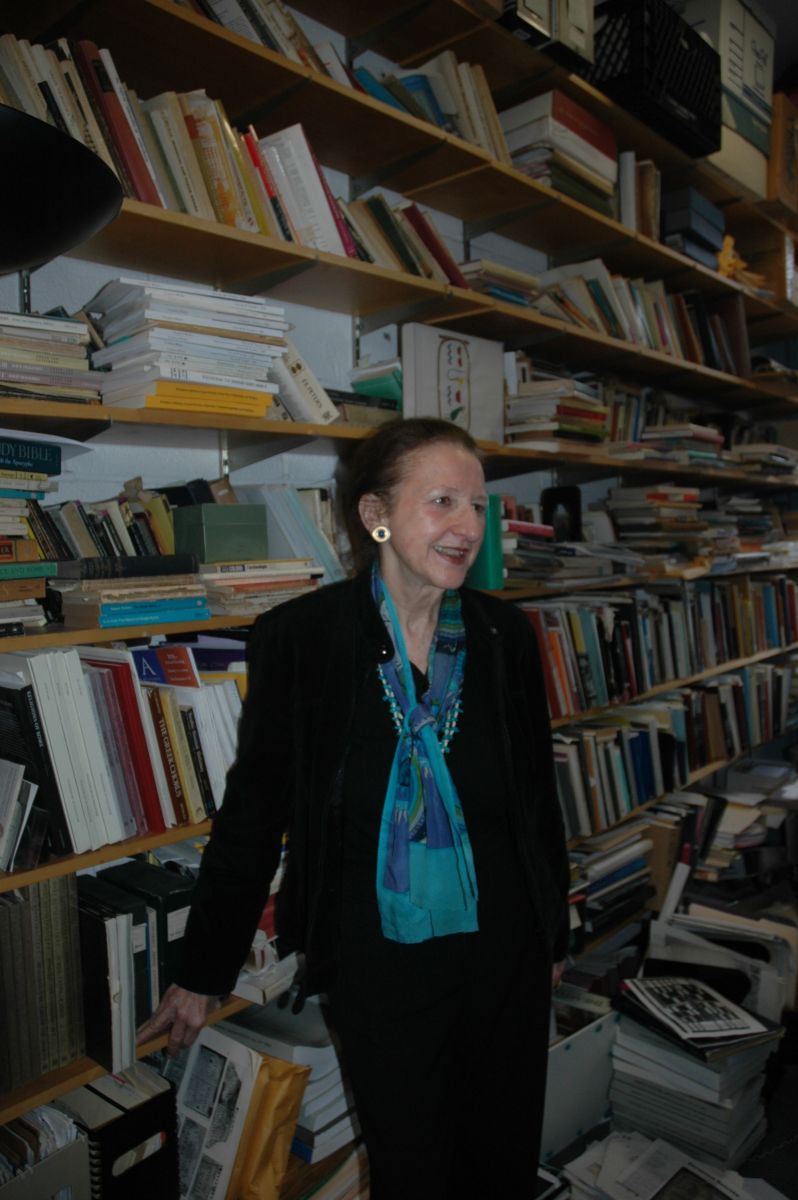
2007
Etruscan culture has lost much of its mystery and gained considerable allure thanks to the prolific scholarly work of Larissa Bonfante. Her dedication to the study of this Italic culture began while she was an undergraduate, first at Radcliffe College, then at Barnard, where she earned her bachelor’s degree. Her early fieldwork at Cerveteri with the renowned Massimo Pallottino contributed to the important role that material culture and context play in her research.
Bonfante’s first major publication, Etruscan Dress (1975), derived from her dissertation for Columbia University. This important cultural and iconographic study was the basis for further examination of costume in ancient societies, such as “Nudity as a Costume in Classical Art” (AJA 93 [1989] 543–70). In tribute to the lasting significance of this work, an updated edition of Etruscan Dress was reissued in 2003.
In the 1980s and 1990s, many of Bonfante’s publications continued to explore topics on costume as well as on the status and iconography of women in Etruscan art, particularly of the mother figure in popular votive art. The World of Roman Costume (L. Bonfante and J. Sebesta, eds. [Madison 1994]) is the direct result of a National Endowment for the Humanities seminar directed by Bonfante in 1988 at the American Academy in Rome. The wide scope of Larissa Bonfante’s work on costume highlights Near Eastern and Greek influence on Etruscan culture, emphasizes the differences between Greek and Etruscan custom, and deftly reveals the undeniable connections with the Roman.
Bonfante has contributed substantially to making the language of the Etruscans accessible to nonspecialist audiences. In 1983, she published The Etruscan Language: An Introduction in collaboration with her father, the late Giuliano Bonfante, a renowned linguistic scholar. It has appeared in an Italian version and a Romanian translation.
Bonfante is also known for her work on Etruscan mirrors. She serves on the international committee for the Corpus Speculorum Etruscorum (CSE), and is the author of the third U.S. volume of the CSE, which is dedicated to mirrors in the Metropolitan Museum of Art, New York.
Currently, Bonfante is completing The Barbarians of Ancient Europe, a volume of the proceedings of a recent conference. Her work on the Roman triumph, and the translation in collaboration with her daughter, Alexandra, of the plays of Hroswitha of Gandersheim exemplify the breadth of her scholarship. Her many honors include a visiting membership at the Institute for Advanced Study at Princeton and the distinction of being a “Dignitario, Ombra della Sera, Volterra.” Her brilliant teaching career at New York University from 1963 until December 2006 earned her the Great Teacher Award of the Alumni Federation at the university in 1983, and the affection and respect of those who have had the good fortune to study with her.
Larissa Bonfante has served the AIA as vice president of the New York Society, as a member of the Governing Board, as a lecturer, and as a member of the editorial advisory board of the American Journal of Archaeology. She is certainly a worthy recipient of the Gold Medal. Her career is much more than the sum of her publications and activities. Her infectious passion for all aspects of archaeology has inspired her students, friends, and colleagues for decades. The Archaeological Institute of America is proud to award its Gold Medal for Distinguished Archaeological Achievement to Larissa Bonfante.
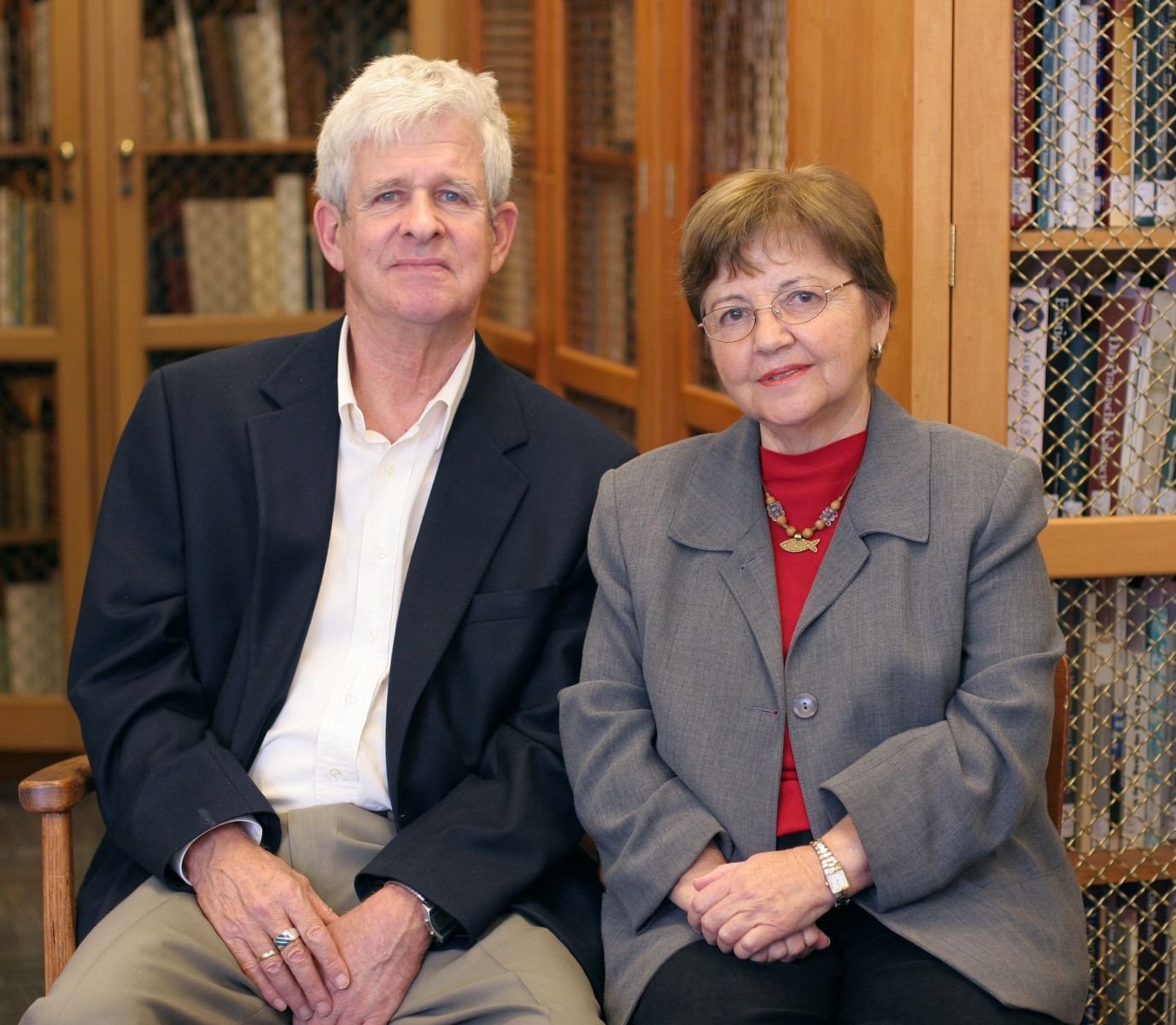
2006
Maria C. Shaw and Joseph W. Shaw have made many contributions to the field of Greek and Aegean Bronze Age archaeology since their graduate student days in the early 1960s. Joe served as excavation architect at the University of Chicago’s excavations at Kenchreai, eastern port of Corinth, from 1963-68 and supervised the important underwater work carried out there by a team of graduate students and young faculty. His contribution to the final publication of the architecture at the site, a volume which he co-authored with Robert Scranton and Leila Ibrahim in 1978, was significant as was his chapter on ancient Greek and Roman harbors in George Bass’ innovative History of Seafaring Based on Underwater Archaeology (1972) (written while he was still a graduate student). At the same time in the 1960s he served as architect at Nicolas Platon’s major excavations of the great Minoan palace of Kato Zakro on the east coast of Crete, work that led to his own University of Pennsylvania dissertation on Minoan construction techniques. The published version of this—Minoan Architecture: Material and Techniques (1973)—is still a handbook on the subject.
Maria Shaw received her doctorate from Bryn Mawr College in 1967 and became a leading expert on Minoan and Mycenaean wall painting, on which she has published a number of important articles in the American Journal of Archaeology and other major journals. She has authored ground-breaking studies on subjects ranging from Aegean-Egyptian interconnections to representations of natural landscapes in Aegean frescoes to the reconstruction of civic life in Crete. Early in her career she participated in excavations at Ancient Corinth, Mycenae, and Kenchreai.
While Joe and Maria individually are notable scholars, it is for their joint work at Kommos that the Shaws are most distinguished. In 1976 Joe and Maria together began major excavations at Kommos, a Minoan and post-Minoan town on the south coast of Crete near Phaistos. This project occupied the rest of their careers. Here they not only made significant discoveries that illuminated both Bronze Age and Iron Age civilizations on Crete, but they proceeded promptly to publish both preliminary and final reports on the site. Bringing in some of the leading scholars of both the Bronze Age world and subsequent periods, they have overseen the publication by Princeton University Press of a series of large and well-produced volumes on various aspects of the site. These books number among the most important recent publications on Crete in North America. The Minoan town of Kommos has emerged as a major emporium for trade moving into and out of the Aegean with contacts both to the east and to the west. The post-Minoan sanctuary at the site is recognized as a link between Phoenician and Greek cultures during a formative period of the classical world.
For more than thirty years until they retired, both Joe and Maria taught at the University of Toronto, training a number of graduate students in Bronze Age archaeology who have gone on in the field. At Toronto, the Shaws were recognized as enthusiastic and articulate educators whose classes were often filled to capacity and attracted numerous auditors from other departments. In addition, both Joe and Maria managed the affairs of the Toronto Society of the AIA for many years and Joe served on the Executive Committee of the parent organization including a term as Vice President.
Throughout their careers Maria and Joe have continued to be an inspiration to their friends, students and colleagues. For nearly forty years they have dedicated their lives to the study of Minoan Crete and Greek archaeology in the Aegean area. Their contributions are many, and they have influenced and continue to influence the field through their scholarship, publications and fieldwork. They have left an indelible mark on our knowledge of Aegean art and archaeology. Therefore, it is with great pleasure that the AIA awards them the 2006 Gold Medal for Distinguished Archaeological Achievement.
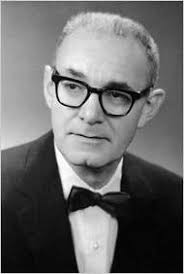
2005
The sea has always bulked large in our perception of the ancient world of the Mediterranean and the man that we honor today has for nearly fifty years bulked large in the study this world and the ships that sailed upon it. A fine maritime historian and scholar of Greek and Latin Literature, Professor Lionel Casson began his studies of ancient ships in the 1950s with several articles that brought to the attention of the scholarly world important pieces of relief sculpture that show how ships were built—especially the shell first construction—and how new types of rigging like the fore and aft sail had come into the western maritime tradition long before the Arab lateen sail. Other scholars like Cecil Torr in the late 19th century had begun to gather material for a study of ancient ships, but no one had carried it forward. In the 50s the increased use of the newly invented aqualung allowed archaeologists to begin to investigate actual ships’ remains. Professor Casson was the first to integrate this new archaeological information with our knowledge of ships from ancient literature, epigraphy, papyrology, numismatics and iconographic sources. The Ancient Mariners published in 1959 first made the maritime story of the ancient world available to both the scholar and to the non-specialist. At the same time the growing field of underwater archaeology found a staunch academic supporter who was always willing to provide advice to the archaeologists, visit their excavations and participate in many international conventions. Casson has provided maritime archaeology with its scholarly foundation. His gift of communication has made this exciting world accessible also to the layman.
Among his some twenty-three published books Ships and Seamanship in the Ancient World first published in 1971 is perhaps his crowning achievement and still remains today the most cited book in maritime archaeology of the Mediterranean. Expanding enormously on Torr’s study and providing good translations of all Greek and Latin texts, the book surveyed the ancient world from Egypt to the early Byzantine period and is still the first resource one goes to with a question about ships and the sea in antiquity.
In World War II (1942-1946), Lt. Casson served in the Department Of Naval Intelligence where he was trained in Japanese to interrogate Japanese prisoners of war. Casson’s scholarly career from undergraduate, graduate through his teaching career from 1936 through 1979 was spent at New York University where he is now Professor Emeritus. He served as chair of the Classical Department on two occasions. His first major book was on the papyrological discoveries at the excavations at Nessana in Egypt in 1950 and his most recent is the very well reviewed study of libraries in the ancient world in 2001. Besides his many books, Casson has published some 75 scholarly articles and some 25 articles in popular journals. Besides Ships and Seamanship, other particular highlights for the scholar are his commentary on the Periplus of the Red Sea and Travel in the Ancient World. Particular highlights for the lay reader are his American Heritage publications on daily life in the ancient world. Casson further reached a lay audience through his popular educational television show, Sunrise
Semester in New York in the 50s. In the first exploration of the Deep Sea using robots in 1989 with the “Jason Project” that reached about 225,000 school children, Casson participated in the training program for teachers in both the USA and Canada. He also was the key scholar who brought the National Endowment for the Humanities grant to the AIA in 1996-1997 for a summer program for high school teachers on ancient trade and led several seminars. Casson has been a Guggenheim Fellow several times, a Senior Fellow for the National Endowment for the Humanities, and Andrew W. Mellon Professor of Classics at the American Academy in Rome. Casson has also served on the editorial boards of both Archaeology and American Neptune.
Throughout his very long and distinguished career Lionel Casson has been a constant source of friendship and intellectual support to his colleagues in the field, walking the Roman harbor installations at Cosa or Pyrgi or advising on the deep water discoveries off Skerki Bank. In gratitude for his many remarkable contributions in teaching, publication and in bringing a nascent field, maritime archaeology, to greater public awareness, the Archaeological Institute of America takes great pride and pleasure in awarding Professor Lionel “Jimmy” Casson its gold medal for distinguished archaeological achievement.
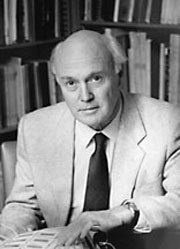
2004
Field archaeologist of consummate skill, esteemed scholar, and revered mentor to scores of younger practitioners, David Stronach is one of the great Near Eastern archaeologists of our time. Excavator of major historic sites in Mesopotamia, Iran, the Caucasus, and Anatolia, Stronach has illuminated the world of the early empires, especially of the Assyrians, Medes and Persians. It is through this research, amply published, that he has made his greatest contributions to archaeology.
Stronach’s first significant excavation was in 1960 at the prehistoric site of Ras al ‘Amiya in southern Iraq. This substantial early village demonstrated that the ‘Ubaid culture had a continuous development on the alluvial plains of Mesopotamia. The excavation, rapidly published in the journal Iraq, demonstrated his emerging mastery of field technique.
Following his appointment in 1961 as Director of the new British Institute of Persian Studies in Teheran, Stronach significantly enlarged our understanding of the empires of the Medes and the Persians. At Pasargadae Stronach conducted new studies of the layout of the site, and demonstrated for the first time the distinctive nature of Achaemenid site planning and architecture. His studies of the Tomb of Cyrus the Great cast new light on the construction and significance of this renowned monument.
ln the late nineteen sixties Stronach began the decade-long excavation of the site that has brought him most renown, the Median sanctuary of Tepe Nush-i Jan. At this remarkably preserved site, with its fortress and Fire Temple, he has demonstrated that fire worship was embraced very early by the peoples of the Iranian Plateau. The distinctive structural features of these buildings have confirmed that the Medes and the Persians were architectural innovators and no mere copiers of Babylonian and Greek styles, as had long been believed. Above all, Stronach’s excavations have illuminated the distinctive place of the Medes among the early high cultures of Western Asia.
As Professor of Near Eastern Archaeology at the University of California at Berkeley since 1981, Stronach has undertaken campaigns of excavation at other sites across Western Asia, partly to resolve key archaeological problems but also to provide training for his many graduate students. His brief excavation at Nineveh from 1987 to 1990 was extraordinary in its vivid demonstration of the impact of the assaults of the Medes and the Babylonians in 614 BC and again in 612 BC. All of those who have heard Stronach lecture on these excavations and have seen his slides of the exposed skeletons of the slaughtered Assyrian defenders of the Halzi Gate share a keen sense of the horror that attended the sack of this once great city. The results demonstrate once again that Stronach has always known exactly where to dig to get the information he needed, an ability that the rest of us can only marvel at.
Stronach’s scholarly interests extend well beyond the topics of his own excavations. Among his other more distinctive contributions has been a series of remarkable papers on the early history of gardens in the ancient Near East. Drawing on his work at Nineveh and other Assyrian and Babylonian sites, Stronach has provided convincing evidence of the political as well as aesthetic importance of gardens for the rulers of the Mesopotamian empires of the first millennium BC. But it is his insights derived from his excavations at Pasargadae that resonate most strongly. For he has demonstrated clearly that Cyrus and his successors originated a type of monumental garden design, the symmetrical fourfold garden or chahar bagh, that was once thought to have been developed in the Islamic period 1,500 years later.
Throughout a long and distinguished career, Stronach has maintained the warmest of relations with diverse colleagues, students, and a wide circle of admirers, including the many officials of the antiquities’ departments of the countries in which he has worked. He is a man of many friends and no enemies who is known as a gentleman and archaeologist of distinction across the world. It is with great pride that the Archaeological Institute awards David Stronach the Gold Medal for Distinguished Archaeological Achievement.
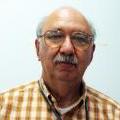
2003
Philip P. Betancourt gets things done. While serving as the Laura H. Carnell Professor of Art History and Archaeology at Temple University, where he has taught since 1970, he also has held the position of Adjunct Professor in the Department of the History of Art at the University of Pennsylvania, and he has served as Acting Dean in the Tyler School of Art of Temple University (1983-1984). In addition, since 1990 he has served as the Executive Director of the Institute for Aegean Prehistory.
His excavation experience began in the U.S. with work at various sites under the auspices of the University of Missouri and the National Park Service. Thereafter, two field seasons in Italy and a summer at Halieis in Greece preceded his move to Crete, which has been the focus of his research since 1976.
At the same time Philip Betancourt has been the author and/or editor of a never-ending series of books and other scholarly publications, which since 1965 has grown to number well over 100. Early studies include The Aeolic Style in Architecture: A Survey of its Development in Palestine, the Halikarnassos Peninsula and Greece, 1000-500 B.C. (Princeton University Press, 1977), Vasilike Ware: An Early Bronze Age Pottery Style in Crete (Göteborg, Sweden 1979), and East Cretan White-on-Dark Ware: Studies on a Handmade Pottery of the Early to Middle Bronze Age (Philadelphia, 1984). For his basic handbook on The History of Minoan Pottery (Princeton, 1985), he not only wrote the text but also took all of the photographs himself, working directly from the showcases in the Heraklion Museum. During the same time period he edited ten volumes in the annual series of the Temple University Aegean Symposium (1976-1985) as well as writing numerous monographs and journal articles.
Now he is presenting us with a series of final reports on his excavations at a number of Minoan sites on Crete, which he began in 1985. To date we have five volumes on Pseira (1995-2001) as well as a multi-media CD-ROM presentation of the site. Chrysokamino has been accepted for publication, Haghia Photia is in the works, and there remains a second excavation season, in 2003, at the new site of Haghios Charalambos. From this record it is clear that we can look forward to many more years of excavation and publication from Philip Betancourt.
But this is only the beginning. Everyone who has had the privilege of working with Philip Betancourt in the field realizes that what sets him apart from all of his colleagues is his dedication to the art of teaching, in the field as well as in the classroom. Every Betancourt field project is a training excavation. All of his students learn how to do things themselves. Although he instructs and gives guidance and encouragement, in the end it is his students who must produce the final product on their own. This holds for training in all aspects of contemporary fieldwork, both traditional methodology and modern scientific technology. Through his efforts and dedication Philip Betancourt is producing students who are qualified to deal with all aspects of Aegean archaeology as it will be practiced in the third millennium A.D.
The Archaeological Institute of America has had, from its founding in 1879, a dual commitment, to the promotion both of research and of teaching, involving all aspects of that complicated academic enigma that we call archaeology. Today we honor this commitment to its fullest extent by awarding to Professor Philip P. Betancourt the Institute’s Gold Medal for Distinguished Archaeological Achievement.
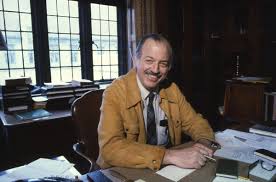
2002
Robert McCormick Adams is one of America’s foremost archaeologists. In the course of a highly distinguished career Professor Adams has worked in both the Near East and Mesoamerica. Above all, however, it is his pioneer research in Iraq, with its broad cross-cultural implications, which has been most richly acclaimed in scholarly circles throughout the world.
Over the course of his career Adams has emphasized the importance of social interaction and cultural ecology in the evolution of civilizations. In particular, his research has explored the relevance of cultural ecology as an explanation for the rise of civilizations as a cross-cultural phenomenon. Representative of this facet of Adams’ work are the Henry Lewis Morgan Lectures which he delivered at the University of Rochester in 1965 and which were published in book form as The Evolution of Urban Society in the following year. In this influential study Adams compared in detail the development of early pristine civilizations in Mesopotamia and Mesoamerica. He showed how, despite differences in detail, there were processual similarities which led to remarkable parallels in the way that these unrelated civilizations evolved.
From the outset Adams’ theoretical contributions were closely supported by his innovative and timely field surveys in Iraq, which saved a vast store of otherwise unexamined data from irretrievable loss. This work was concentrated in the broad alluvial plain of the Tigris and Euphrates rivers where early Uruk, Sumerian, Akkadian and Babylonian civilization each emerged in turn. Such fieldwork in Mesopotamia remained one of his more significant, consuming concerns well into the 1970’s and fresh surveys would probably have been initiated in the 1980’s but for the constraints of the Iran-Iraq war.
Adams’ survey data embraced all available material from the Neolithic period well into Islamic times. It provided an unparalleled data set for examining just how the natural environment had affected local subsistence strategies and Mesopotamian cultural evolution as a whole. The results of this exhaustive examination of the available archaeological evidence culminated in the publication of a remarkable series of monographs including Land Behind Baghdad (1965), The Uruk Countryside (1972, with Hans Nissen), and the magisterial study, Heartland of Cities (1981). With the aim of continuing to flesh out his ideas on the importance of social interactions, both within and between given societies, he published a number of landmark articles including “Ideologies: Unity and Diversity” (1992) and “Anthropological Perspectives on Ancient Trade” (1974). More recently he has published Paths of Fire – An Anthropologist’s Inquiry into Western Technology (1966). This insightful volume explores the interaction between the forces of social and technological change and the implications of this interaction for the modern world.
As far as Robert Adams’ distinguished contributions as a teacher are concerned, many of his students now hold academic positions of distinction through which they are transmitting his innovative lines of thinking to new generations of students.
While service to the discipline at large is not a formal criterion for the present award, it cannot pass without notice that Professor Adams has always maintained an interest in policies which promote research and that he has occupied a particularly notable succession of significant academic positions. Thus, apart from two terms as the Director of the Oriental Institute of the University of Chicago, he has served as Dean and Provost of the University of Chicago, as a Councilor of the National Academy of Sciences and as Secretary of the Smithsonian Institute from 1984 to 1994. From this last date, moreover, he has continued to teach and advise a new generation of students as an Adjunct Professor in the Department of Anthropology of the University of California at San Diego.
In conclusion, this is an overall record of distinguished archaeological achievement that few can be said to match. And, on behalf of the Archaeological Institute of America, I believe the award of the Gold Medal constitutes an entirely fitting degree of recognition for an individual who happily remains “in harness” more than forty-five years since the time of his first faculty appointment — and who unquestionably remains at the cutting edge of our common subject.
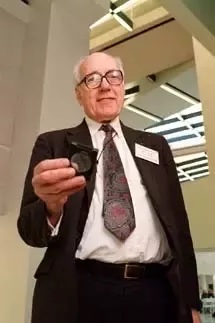
2001
Throughout his career, Emmett L. Bennett, Jr. has had a major impact on research of Mycenaean texts. His dedication and efforts have gone a long way in establishing the field. A prolific writer and decipherer, he has published a multitude of journals, essays and texts on the prehistoric Aegean.
During the period 1939–1952, Emmett L. Bennett, Jr. was entrusted by Carl Blegen with studying and editing the first Linear B tablets found on the Greek mainland. This was at a time when even the Knossos tablets were still effectively unpublished, so Bennett had to start from scratch. After the end of WWII, Bennett set to this work with his characteristic combination of ingenuity, uncompromising attention to detail and exactitude, and respect for cooperative archaeological research. During this period he devised a conventionalized signary for representing the inscriptions and worked with painstaking care at both editing and analyzing the texts. His doctoral dissertation in 1947 analyzed the script and laid the groundwork for future study of scribal hands.
In the 1950s Bennett was wrote frequently and with great depth and expertise on Aegean prehistory. He produced corrections to the publication of the Knossos tablets that were essential for interpreting these texts correctly. A complete index of Linear B sign groups was created along with an edition of the newly discovered Mycenae tablets that included extensive discussion of their archaeological environment. He next published an updated version of the Pylos tablets incorporating the discoveries of 1952–1954. A transliterated edition of the Knossos tablets was published, with the collaboration of John Chadwick and Michael Ventris. Bennett also wrote the fundamental article (Etudes Mycéniennes) on how to present a Mycenaean corpus volume and index.
During the period 1957–1978, Bennett created and edited Nestor, the chief bibliographical monthly newsletter for the field of Mycenology and now of Aegean prehistory as a whole. Nestor contained not only comprehensive lists (pre-computer) of publications in these fields, but also provided a forum for the expression and instant testing of new ideas, both detailed notes and broader theories. As such, it was the forerunner of such electronic lists as Aegeanet. Nestor also included a section of humorous commentary on the field, which helped to keep incivility at a minimum and inspired a sense of fun about working in this area.
At this time, Bennett also ran a major international conference on Mycenaean studies at Wingspread in Wisconsin at which the definitive signary and editing conventions for Linear B drafted. He continued his other literary endeavors by editing the volume of papers (Mycenaean Studies 1964), and writing an exemplary study of a thematically unified set of tablets (The Olive Oil tablets from Pylos). He wrote numerous reviews, re-edited the Knossos tablets, and wrote definitive studies of Mycenaean ideograms and regional palaeographical variations. In 1973 and 1976 he produced, with Jean-Pierre Olivier, the standard transcription of the Pylos tablets. Nestor continues as the central unifying monthly publication in Aegean prehistory.
For the period 1979–1998, Bennett wrote the key study (Chaumont Colloquium 1979) of the total palaeographical and administrative-textual history of arguably the most important religious text in the Linear B corpus: Tn 316 (the famous “human-sacrifice” text). He produced yearly reviews and significant articles on topics as broad as landholding systems, Mycenaean chamber tombs, attempts to decipher Linear A, Minoan fractions, and the Ventris decipherment. His work from 1987–1992 and after, was focused on improved publication of the Pylos texts which led to new joins and to new series classifications. It also prompted the current international group endeavor that should produce a definitive corpus volume early in the new millennium. Bennett has also addressed decipherments of other scripts (Indus Valley 1994–1995) and the very origins of writing (token systems 1992–1993). He remains, at the age of 80, actively involved in field work, text editing and work with students from the USA and abroad.
Emmett L. Bennett, Jr. is an individual whose impact upon a key area of research in Aegean prehistory has been global. He played a major role in creating the field, and in producing essential primary tools of research. His work editing the bibliographical journal that united the field invited a broader definition of its place in prehistoric archaeology. In establishing the principles for scholarly work, he promoted the work of younger scholars and assured a proper spirit of international cooperation. He selflessly (without remuneration of any sort, even honorific) donated his lifetime scholarly collection to the founding of an international research center. He generously handed over his prize creation Nestor to another program well before he had to. He remains active and involved in ongoing work and is revered as no other scholar in this sub-field of archaeology for his humanity, sense of fairness, sense of whimsy, and his gentlemanly dedication to proper scholarly conduct.
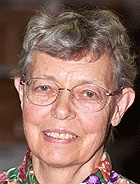
1999
Patty Jo Watson is an exceptional archaeologist because of the breadth and depth of her contributions to the discipline. She continues to make important advances in terms of teaching, fieldwork, and theoretical insights. Her publications and graduate seminars reflect a deep interest in several historical and anthropological questions that can only be answered by archaeological investigation. She has a keen sense that solutions to questions must always be logically examined and she articulated this issue in the landmark publication entitled Archaeological Explanation: The Scientific Method in Archaeology, published by Columbia University Press in 1971 with a second edition in 1984.
Dr. Watson received her M.A. in Anthropology at the University of Chicago in 1956. Her Master’s thesis, “New Material from Northern Iraq: The Halaf ‘Period’ Reconsidered,” reflects her initial fieldwork experiences with Professor Robert Braidwood. Fieldwork in northern Iraq and Iran was challenging during the 1950s, but the rewards were there for the archaeologist willing to excavate, analyze, and interpret the evidence for the origins of plant and animal domestication. Dr. Watson received her Ph.D. in anthropology from the University of Chicago in 1959 with a dissertation that examined “Early Village Farming in the Levant and its Environment.”
Patty Jo’s introduction to fieldwork came on the Iraq-Jarmo Project of the Oriental Institute, University of Chicago. During the 1950s she worked with Neolithic materials from Jarmo in Iraq and did pioneering work on the use of ethnoarchaeological analogy, while participating on the Iranian Prehistoric Project of the Oriental Institute. The results of her work in the Middle East would become the basis of her Ph.D. dissertation and dozens of subsequent articles and monographs. Her description of the modern village of Hasanabad (Archaeological Ethnography in Western Iran, published in 1979 by the University of Arizona Press) is still one of the most thorough examinations of the continuity of architectural and technological traits in one portion of the Middle Eas
The results of her fieldwork on Neolithic cultures in the Middle East are contained in the published reports on Jarmo and Girikihaciyan. The evidence of plant and animal domestication in the Old World would stimulate her interest in pursuing the origins of plant domestication in the New World. For Patty Jo Watson, one vital clue to the date and nature of early domestication would be found in the dust-dry passageways of the Salts Cave section of Mammoth Cave. She led innumerable exploration and mapping expeditions in both Mammoth Cave and Jaguar Cave. Part of this important work is contained in The Prehistory of Salts Cave, Kentucky, published in 1969, and in Archaeology of the Mammoth Cave Area, published in 1974. Her discoveries underground would be combined with careful archaeological surveys and excavations at the shell mounds along the Green River in Kentucky. The underground and surface data she collected has been summarized in professional papers and articles that map out the variety and sequence of plant domestication in the eastern United States. All of this is contained in the edited volume entitled Of Caves and Shell Mounds, where Patty Jo and her students outline the evidence accumulated by decades of research. The range of her writings reflect her eagerness to share with both professional archaeologists and the interested public. She has written articles for a vast range of publications, including Paleorient, Sumer, Proceedings of the National Academy of Science, Archaeology magazine, Expedition, and the World Book Science Annual.
Her focus shifted from the eastern United States to the southwestern United States during 1972 to 1974, when she codirected the Cibola Archaeological Research Project. The work at Cibola focused on the investigation of a large pueblo site related to the Zuni nation. That project provided a fertile ground for testing assumptions about ceramic production, decoration, and evolution within a complex New World community.
The decades of fieldwork in North America did not extinguish her interest in the Old World. From 1991 to 1994 she served as a consultant on the Xiaolangdi Dam Salvage Archaeology Project at Bancum in the People’s Republic of China. Her contribution to that project included expertise in flotation recovery, precision in sampling and interpretation, and ethnoarchaeological documentation.
The profession of archaeology has greatly benefited from her books and articles. The most richly blest have been her students, who had the opportunity to study with her in both classroom and field. She has endless patience with students whether they are struggling to master new ideas in a classroom or trying to stay warm while mapping 4000 year-old footprints preserved in the muddy floor of an almost inaccessible cave passageway. She is a tireless scholar who is still making major contributions to archaeology. Patty Jo holds the Edward Mallinckrodt Distinguished University Professorship at Washington University in St. Louis. She has received numerous honors and awards, including the Fryxell Medal from the Society for American Archaeology and the Distinguished Service Award of the American Anthropological Association. It is fitting that we honor her with the Archaeological Institute of America’s Gold Medal Award for Distinguished Archaeological Achievement.
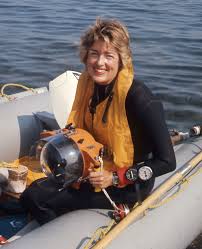
1998
Anna Marguerite McCann has excelled in a remarkable variety of scholarly fields, humane accomplishments, and service to the profession. She has taught in several respected departments of Art History and Classics, worked as an innovative museum curator, and served as a generous and perceptive board member for numerous scholarly organizations and museums. A pioneer in several areas of archaeology under water, she has continued at the same time to publish in the fields of ancient Greek and Roman sculpture. She has won prestigious awards for her books in fields as diverse as Roman sculpture and Roman harbors, and for a children’s book on deep-water archaeology.
Dr. McCann received her B.A. in Art History and Classics (Phi Beta Kappa) at Wellesley College in 1954 and spent the following year at the American School of Classical Studies at Athens on a Fulbright Scholarship. An M.A. in Art History at the Institute of Fine Arts in New York followed in 1957. Her Master’s thesis, “Greek Statuary Types in Roman Historical Reliefs,” reflects her early interest in Roman Imperial sculpture, which she followed up in her research for the Ph.D. in Art History and Classics at Indiana University in 1965. At Indiana and during her tenure of a Rome Prize Fellowship at the American Academy from 1964 to 1966, she worked on her study “The Portraits of Septimius Severus, A.D. 193–211,” which appeared as a volume of the Memoirs of the American Academy in Rome (MAAR 30, 1968).
During her years at the American Academy, Dr. McCann was struck by the potential importance of the still untouched harbor site at Cosa. In 1965 she began the excavation of both the marshy lagoon and the submerged outer anchorage. An early believer in the value of a team approach to complex sites, Dr. McCann synthesized her collaborators’ efforts in a remarkable contribution to the history of ancient technology and the economy of Republican Rome—The Roman Port and Fishery of Cosa: A Center of Ancient Trade (Princeton 1987)—awarded the AIA’s James R. Wiseman Book Award for an outstanding archaeological publication in 1989 (AJA 94 [1990] 296), and the Outstanding Book Award of the American Association of University Presses for 1987.
In the 1989 Jason Project, Dr. McCann moved from shallow to deep-water survey and excavation with Robert Ballard, at the site of a Byzantine shipwreck near Skerki Bank. Together, using the very latest technology, they demonstrated that controlled archaeological survey and sampling could take place at a depth of 800 inches, far beyond the limits of SCUBA. In this venture, as in a larger, follow-up project with Ballard in the same area in 1997, Dr. McCann had to endure initially much ungenerous and ill-founded criticism. Typically, she chose the route of scholarly publication (editing Deep Water Archaeology [JRA Suppl. 13, Ann Arbor 1941) and intelligent, polite discourse to win over her critics. Other archaeologists are now beginning to follow in her pioneering footsteps. It is typical of Dr. McCann’s interest in the broad dissemination of archaeological information that she has also presented the results of this research in numerous public lectures and television programs, in the popular press, and in a coauthored award-winning book aimed at children: The Lost Wreck of the Isis (Toronto 1990).
Although her work in underwater archaeology would constitute an outstanding accomplishment in itself, Dr. McCann has carried on a parallel career in ancient art history. Her book Roman Sarcophagi in the Metropolitan Museum of Art (New York 1978) won several awards, including the Outstanding Book Award from the American Association of University Presses. Dr. McCann has also published many seminal articles dealing with Greek and Roman sculpture.
In large part as a result of her devotion to her family, Dr. McCann chose not to pursue long-term academic positions, but she has nevertheless taught with great success at a number of distinguished institutions across the United States. She has worked generously with both undergraduate and graduate students, inspiring them with her enthusiastic teaching, providing excavation opportunities, and establishing scholarships for their support. Dr. McCann has given herself generously as well to the important task of lecturing to the public, in part through the AIA Lecture program and AIA Norton Lectureship for 1994–1995. She has been a pillar of support for the AIA for decades, with long service on the Executive Committee and Board of Trustees, and as a member or Chair of numerous committees.
Throughout all this, Dr. McCann has concentrated with selfless generosity on another goal: inspiring young people and laypeople in general with her own enthusiasm for the study of ancient art and culture. Her firm belief in the dignity and importance of every individual has endeared her to literally thousands of people in the course of her professional career—from day laborers at Cosa to ambassadors in New York—and she has helped many students, colleagues, and fellow administrators simply to see more clearly and to think more humanely. Dr. McCann’s most abiding and endearing qualities in the eyes of her many friends, however, are her absolute integrity, her loyalty to her colleagues and students, and her heartfelt devotion to archaeology. She exudes a warmth and humanity that inspires all who come in contact with her to reach beyond themselves. She is without doubt one of the great American archaeologists. “Where you lay up your treasure, there your heart will be also.”
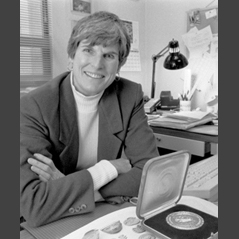
1997
Clemency Chase Coggins, an outstanding art historian and Maya scholar, deserves much of the credit for raising the issue of the relationship between the antiquities market and long-term archaeological goals, for convincing archaeologists of the need to examine their larger professional responsibilities, and for keeping these issues in the forefront even when few fellow professionals wanted to engage them. Her seminal article, “Illicit Traffic of Pre-Columbian Antiquities” (ArtJ 1969, 94-99), was a courageous statement, coming at a time when most archaeologists turned a blind eye to illicit traffic, having never given thought to how it might affect their own work. Through numerous publications and public lectures, Dr. Coggins has eloquently and effectively sustained interest in the subject of safeguarding cultural property, which has now become an ongoing dialogue among archaeologists, art historians, art dealers, collectors, legal scholars, lawmakers, and the general public.
Clemency Coggins has worked tirelessly and energetically with the Archaeological Institute of America on antiquities matters, chairing the Committee on Preservation of Archaeological Resources and the Professional Responsibilities Committee for many years. While laboring in the vineyard on behalf of AIA, she has worked closely with countless slow-moving congressional committees toward the development and ultimate passage of the U.S. Implementing Legislation for the UNESCO Convention on Cultural Property. Appropriately, she was among the first appointed by the President to the United States Cultural Property Advisory Committee. Coggins’ recent activities in the antiquities trade arena-e.g., participation by invitation in numerous international conferences, including serving as the keynote speaker in 1994 at the Fifth International Symposium on the Legal Trade in Works of Art in Vienna, and placing a recent article on the ethics of collecting in the Mexican journal Arqueología Mexicana– indicate the high regard in which she is held internationally. Indeed, Clemency Coggins’ efforts to oppose the illicit trade in antiquities have fundamentally changed the face of modern American archaeology.
Dr. Coggins’ accomplishments and reputation in the area of professional ethics are such that archaeologists who work outside of Mesoamerica may not realize that she has contributed equally to Maya scholarship and understanding. With a B.A. in Fine Arts from Wellesley College (1959), including a year at the Sorbonne, M.A.s in Library Science from San Jose State University (1965) and in Fine Arts from Harvard University (1968), she completed her Ph.D. at Harvard in 1975. Her outstanding thesis, Painting and Drawing Styles at Tikal: An Historical and Iconographic Reconstruction, is a study of Maya royal tombs at an important Classic-period (A.D. 300-900) site in the southern lowlands of Guatemala. Even in this early work, Coggins exhibited the ability to look at problems from many points of view. Her dissertation involved groundbreaking research that brought together diverse archaeological information, as well as providing a detailed analysis of Tikal’s painting and drawing styles to produce an historical and iconographic reconstruction of the site’s burial rites. Publication of Maya burial assemblages have tended to be split up according to the field of expertise of each reporting archaeologist (i.e., skeletal remains, lithics, ceramics, inscriptions, architecture), with the focus generally on demographic analysis and formulating and testing hypotheses about subsistence, trade, and other economic questions. Dr. Coggins’ initial contribution to the field of Maya archaeology was her ability to bring all of the associated burial elements together and publish them as historical contexts, the meaning of which lies in their association: she looked at Maya tombs as part of larger historical and religious events.
Dr. Coggins also has set models of creative, synthetic fieldwork in her more recent work at the post-Classic sites of Dzibilchaltun and Chichén Itzá. She spends considerable time in the field, which is one of the reasons she has acquired her broad view and wide-ranging knowledge of pan-Mesoamerican imagery. This experience, combined with a particularly sensitive eye, often allows her to place a specific observation or finding, within a broader framework. Coggins always brings the wider context to any archaeological problem. This talent served her well as editor of an important volume, Artifacts from the Cenote of Sacrifice: Chichén Itzá, Yucatán (Cambridge, Massachusetts, 1992) which finally completed publication of the contents of the Maya’s “sacred Well,” a cache of pre-Hispanic material that had been excavated by the Peabody Museum at Harvard University from 1904-1911.
Of equal caliber to Coggins’ professional contributions are the roles she has successfully fulfilled in her family life: daughter, sister, wife, mother, and grandmother. Those of us fortunate enough to know her as a valued friend can attest that the integrity and ethical conduct displayed in her career are also reflected in her personal world, including her teaching, currently at Boston University. Clemency Coggins is truly an outstanding role model for aspiring students of archaeology.
In awarding this Gold Medal for Distinguished Archaeological Achievement, the Archaeological Institute of America acknowledges the outstanding contributions of Clemency Chase Coggins to our profession.
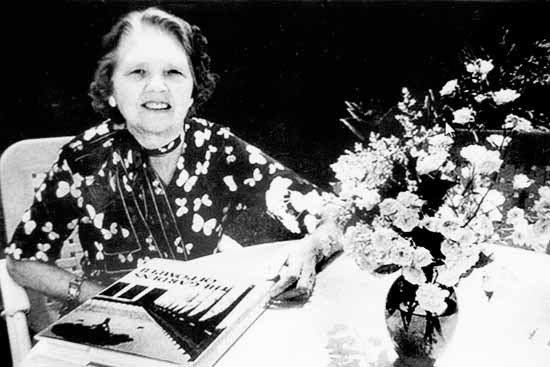
1996
Wilhelmina F. Jashemski is best known for her contributions to the excavations of Pompeii. A recent reviewer said her accomplishments include the creation of a new field in ancient studies, the investigation of ancient gardens.
Professor Jashemski received her B.A. summa cum laude in Latin from York College in York, Nebraska, in 1931 and her M.A. in ancient history and classics from the University of Nebraska in 1933. She started her teaching career at Indiana Central College in Indianapolis (1935-1940) and at Lindenwood College in St. Charles, Missouri (1942- 1945). Jashemski completed her education with J.A.O. Larson at the University of Chicago, where she received her Ph.D. in 1942. In Chicago she met her husband, the physicist Stanley Jashemski. Her dissertation, The Origins and History of the Proconsular and Propraetorian Imperium to 27 B.C., was published in 1950 by the University of Chicago Press and reprinted in 1966 by “L’ERMA” di Bretschneider in its Studia Historica series. Professor Jashemski taught at the University of Maryland at College Park from 1946 to 1980 and since that time has been Professor Emerita. She was named Outstanding Woman on the University of Maryland Campus in 1980 and Distinguished Scholar/Teacher in 1982.
After a well-received dissertation in Roman constitutional history, she turned her attention toward Roman gardens. The study of ancient gardens sounded like too much fun to be serious scholarship, but after discussions with her husband in their own garden in Silver Spring, she undertook a preliminary investigation and discovered that little had been done in this field. In 1961 she was granted permission to excavate at Pompeii – an opportunity rarely given to foreign scholars. She located and cleared the root cavities of ancient plants and poured and excavated casts of these trees, bushes, and smaller plants. Later the plants were identified and in many cases replanted in their original settings in the houses and villas of Pompeii. Publication of her research on ancient gardens has ranged from the delightful Letters from Pompeii, written to explain her work to her nieces and nephew, to the monumental two-volume The Gardens of Pompeii, Herculaneum, and the Villas Destroyed by Vesuvius, which appeared in 1979 and 1993. High among priorities for publication were the wonderful color photographs of the gardens and the garden paintings taken by her husband, Stanley. Three additional books are completed and waiting at the publishers: Wild Flowers Amid the Ruins: Greece and Pompeii; Medicinal Plants at Pompeii: A Pompeian Herbal; and The Natural History of Pompeii and Other Vesuvian Sites, edited papers from a working symposium of specialists from many disciplines. She has currently returned to the first book she planned in this field; a survey of gardens of the Roman Empire.
Wilhelmina Jashemski directed the University of Maryland excavations at Pompeii, Boscoreale, and Oplontis from 1961 to 1983. In addition she has dug at Hadrian’s Villa in Tivoli (1987-1988) and at Thuburbo Maius in Tunisia (1990). When she started excavating gardens there were few, if any, colleagues in the same field, a problem apparent when she first organized an international colloquium on “Ancient Roman Gardens” in 1979. This colloquium was followed by another on “Ancient Roman Villa Gardens” in 1984. Both are published in the Dumbarton Oaks series. She has organized five international conferences to date and continues to edit those contributions for publication. As a result of her tireless efforts, both in the field and organizing these international meetings, there is now a new generation of young scholars excavating and studying ancient gardens.
Professor Jashemski’s love for teaching, field archaeology, and all aspects of life in ancient Pompeii is reflected in the wide range of dissertations produced under her direction and the dedication of a cadre of former students whose careers she has continued to follow and influence. Evidence of this appreciation is obvious in the two-volume festschrift Studia Pompeiana et Classica in Honor of Wilhelmina F. Jashemski (New Rochelle 1989).
Throughout Wilhelmina Jashemski’s teaching career and in the years since retirement from the classroom, her home and garden have served as the meeting point of friends and colleagues from around the world. Former students and their families, young excavators of gardens from all areas of the ancient Roman Empire, and colleagues interested in ancient history, archaeology, and landscape design continue to receive advice and criticism and to enjoy her friendship. For all these reasons, the Archaeological Institute of America is proud to present the Gold Medal for Distinguished Archaeological Achievement to Wilhelmina F. Jashemski.
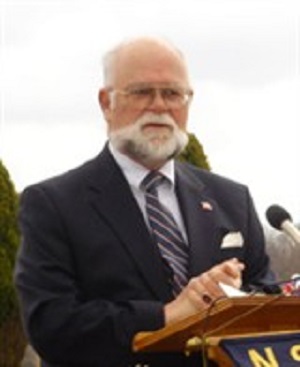
1995
R. Ross Holloway has been a leader in the elucidation of Italian art and archaeology, in both the prehistoric and historic periods. His excavations have yielded some of the earliest evidence for the Bronze Age development of Italy and his writings on art and numismatics from the Italic and Greek periods have contributed greatly to our understanding of these fields. Although he is best known for his work on ancient Italy, he has also written an important textbook of Greek art in general: A View of Greek Art (1973). His impact on students has been considerable. He generously shares his time and ideas, and continues to serve as mentor, suggesting topics for research and critiquing the work of his students, long after they have begun their own professional careers.
Ross Holloway received his A.B. summa cum laude from Amherst College in 1956, where he was also elected to Phi Beta Kappa. He continued his education at the University of Pennsylvania (M.A. 1957) and Princeton University (M.A., Ph.D. 1960). As with many Princeton graduate students, he received his initial excavation experience at Morgantina, an experience that inspired in him a lifelong interest in Italian archaeology. Between 1960 and 1962 he remained in Italy as a Fellow of the American Academy in Rome, and later served as Resident in Archaeology at the Academy (1969-1970, 1992).
His teaching career has taken Ross Holloway to Princeton University and the University of North Carolina at Chapel Hill, but it is at Brown University where he has spent most of his career. He quickly rose from assistant to full professor, and since 1990 has been Elisha Benjamin Andrews Professor. He has served, and is currently serving, as Director of the Center for Old World Archaeology and Art, and has led the excavations of Brown University at a number of sites.
Through these excavations, Prof. Holloway has revolutionized the study of Italian prehistory. Carbon 14 dates obtained by him at Buccino (1967-1974) and La Muculufa (1982-1987) have pushed back the beginning of the Early Bronze Age in Italy and Sicily at least 500 years, from the late third/early second millennium to the early or middle third millennium. His work at Buccino revealed the earliest dated bronze weapons from the Italian peninsula. That at La Muculufa discovered the earliest clearly identified regional sanctuary of Bronze Age Sicily. His book, Italy and the Aegean: 3000-700 B.C., published in 1981, has proven to be a prophetic guide to the rethinking of this field. His current excavations at Ustica have uncovered what may be the best-preserved Middle Bronze Age town of the region and have found the first stone sculpture of the area, attributed to the second millennium B.C. (published in R.R. Holloway and S. Lukesh, Ustica I: Excavations of 1990 and 1991). Ross Holloway has also examined later periods in Italy through his excavations at Satrianum (1966 1967). This work marked the first concerted effort to study a native Lucanian center and provided evidence for the relationship of this area to the coastal Greek cities of both the sixth and fourth centuries B.C.
Several complete and prompt publications have resulted from these excavations, including Satrianum: The Archaeological Investigations Conducted by Brown University in 1966 and 1967 (1970), Buccino: The Eneolithic Necropolis of San Antonio. Discoveries Made in 1968 and 1969 (1973), and La Muculufa: The Early Bronze Age Sanctuary. Excavations of 1982 and 1983 (1990). In addition, Prof. Holloway has written two books recently that deal with wider geographical and chronological areas. The Archaeology of Ancient Sicily (1991) considers Sicily from the prehistoric through the Roman periods, while The Archaeology of Early Rome and Latium (1994) elucidates new discoveries and offers reinterpretations in yet another cultural area. Among his most important contributions isInfluences and Styles in the Late Archaic and Early Classical Greek Sculpture of Sicily and Magna Graecia (1975). This book comprises the only existing corpus of sculpture from this region and places these poorly known but important pieces in context.
As a numismatist, Prof. Holloway has written the history of the bronze coinage of Syracuse down to 211 B.C. in a long series of articles and a major monograph (The Thirteen-Months Coinage of Hieronymos of Syracuse, 1969) published over a quarter century. He was the first scholar to enunciate the importance of the numismatic evidence from Morgantina for the dating of the Roman denarius. He has written, with new suggestions, on Art and Coinage in Magna Graecia (1978) and has coauthored a study of the coinage of Terina (1982), published hoards in the Syracuse Museum, Ripostigli del Museo archeologico di Siracusa (1989), and is one of the original authors of the Morgantina coin volume.
Prof. Holloway’s accomplishments have been widely recognized abroad. In 1967, at the age of33, he was elected Corresponding Member of the German Archaeological Institute and was made an Honorary Member of the Royal Belgian Numismatic Society (one of 15 current honorary members) in 1986. The following year he was elected as the first foreign member of the Istituto italiano di preistoria e protostoria in Florence. He has served the field also as cofounder and president of the Association for Field Archaeology, and as a member of the editorial boards of the Journal of Field Archaeology and the American Journal of Archaeology.
Through his excavations, publications, teaching, professional service, and especially through his prolonged scholarly dialogue and thought-provoking ideas, Ross Holloway has made a significant impact on the field, for which he is now awarded the Gold Medal for Distinguished Archaeological Achievement.
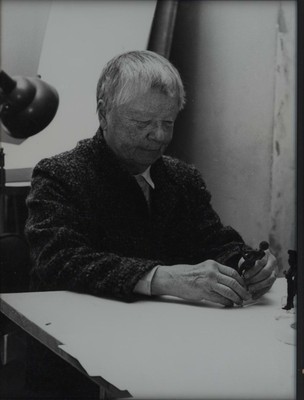
1994
Emeline Hill Richardson has made a mark on the history of archaeology as a pioneer, in the United States, in the study of Etruscan culture. She was the first important American scholar in this field; her work The Etruscans: Their Art and Civilization (Chicago 1964) was the first comprehensive introduction to the Etruscans in this country, and as such was adopted as a textbook in many courses. Its influence has been strong, and in spite of the enormous increase in data on the Etruscans over the past 30 years; some chapters remain the best introductory statement on certain aspects of Etruscan archaeology.
Emeline Richardson was drawn to archaeology by the thought of all that remained to be discovered and all that remained to be accomplished in the study of ancient civilization. A bent for chronological analysis was manifest early in her study of geology (in which she received her A.B. from Radcliffe College in 1932), but she soon turned to the more humanistic science of Classical Archaeology (she received her Ph.D. from Radcliffe in 1939) and specifically to the Etruscans. Her specialty within the discipline is Etruscan sculpture, and she has published a number of significant studies in this area. She contributed to archaeological fieldwork with her prompt publication of architectural terracottas from the temples at Cosa (MAAR 2 7, 1960). Her Etruscan Votive Bronzes: Geometric, Orientalizing and Archaic (Mainz 1983), the fruit of studies she began in the 1930s at the suggestion of Bernard Ashmole (“This needs doing,” he had told her), is the definitive corpus of this material. At present she is nearing completion of the second major installment of her life’s work, on the Classical votive bronzes of the Etruscans.
In her teaching career, spanning 40 years, Emeline Richardson taught at Wheaton College, Yale University, the Institute of Fine Arts at New York University, Stanford University, and the University of North Carolina at Chapel Hill. She also served the profession as Trustee (1978-79) and Charles Eliot Norton Lecturer ( 1976-77) for the Archaeological Institute of America, and as Director of a seminar for college teachers held by the National Endowment for the Humanities at the American Academy in Rome in 1979. She was Classicist in Residence at the American Academy (1977), jointly with her husband Lawrence Richardson, jr, with whom she collaborated in many ways to the enrichment of scholarship in both Etruscan and Roman studies.
This generous scholar has done much for others. She performed a major service to Etruscan scholarship when she prepared for publication the manuscript left by Otto Brendel at his death on Etruscan Art (Harmondsworth 1978). Professor Richardson edited the text, wrote most of the final section on the Hellenistic period, wrote all the footnotes for the book, and selected its more than 300 illustrations. Her name does not appear as author on the title page, but it is unlikely that we would have this book without her important collaboration. Another significant example of her dedication to working for others lies in her work on Greek and Roman dress. In 1966, when the Archaeological Institute of America was holding a fundraising drive, Professor Richardson raised money by staging a grand fashion show at Duke University called “The Descent of the Toga.” For many years the slides of the costumes continued to be sold by the AlA for use in classrooms around the country.
Emeline Hill Richardson has published on a wide range of topics in Etruscan studies, including Etruscan mirrors, language, small bronzes, dress, iconography, and religion. Her publications, old and new, continue to be influential, and it is fair to say that she is the dean Of Etruscan studies in America today. For her pioneering achievements in this discipline, her admirer George Hanfmann once characterized her as a “heroine;” her selection for the Gold Medal for Distinguished Archaeological Achievement serves to confirm this status.
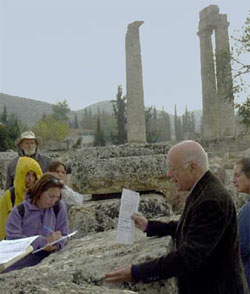
1993
Charles Williams has made an inestimable contribution to the training in classical archaeology in Greece of a full generation of students. For a quarter century as director of the Corinth Excavations of the American School of Classical Studies at Athens he has devoted himself to the instruction of young people in the field, during an excavation season that stretches through spring and early summer. It is hard to imagine anyone who has given a more thorough grounding in the techniques of excavation to so many students. The results of each season’s work in his annual excavation reports are a regular feature of Hesperia, and the information they contain will form the basis for all future interpretations of the history and monuments of Corinth. Each fall he leads a trip for students through southern Greece to examine and discuss architectural problems in buildings of all periods. Yet, despite the burden imposed by such a schedule, he has produced a body of scholarly work that has focused on the religion and cults of Greek and Roman Corinth as well as specific topics, such as roof tiles, that grew out of his architectural interests and expertise.
Charles Williams began his career with an A.B. degree with honors from Princeton University (1953), followed by an M.F.A. in Architecture from the same university (1956). During that time art, architecture, and archaeology vied for his attention. His two seasons with Alan Wace at Mycenae sealed his fate, however, and they were followed by further work at Mycenae and then at Aghios Stephanos, Morgantina, Gordion, Nemea, and Ha1ieis. He completed his doctorate in classical archaeology at the University of Pennsylvania. In 1966 he became director of the Corinth Excavations.
It was as an excavator that Charles Williams found his metier. In addition to doing the architectural work of plans and drawings for his excavations, he has made himself proficient in the analysis of ceramics. In each spring’s training session he teaches students to observe and record systematically slight changes in texture, color, and consistency of the soil and the relations of strata to associated architecture. Often with a sharp and probing line of commentary he challenges them to defend their analyses and conclusions. Students are then led through the ceramic analysis for their deposits as well as the stratigraphic descriptions and consequent interpretations. They inventory their finds, relate them to earlier excavated material, and write a final report. Students thus learn what is meant by archaeological evidence, how to form and test hypotheses, to find the limits of inference for a given set of data, and on what bases its validity depends. For many seasons Williams attacked problems left unsolved in earlier excavations, particularly the Sacred Spring, the racecourse and its attendant shrines, and the area east of the theater with its rich deposit of wall paintings. Over 300 young people have taken part in some part of the training sessions, including historians, philosophers, philologists, and others for whom archaeology is not their primary interest. Charles Williams, by his thoroughness, devotion to detail, and the energy with which he has pursued his goals in the field, is bound to leave an important mark on future studies of ancient civilization.
Not only new discoveries have claimed Charles Williams’s attention. One of his first projects as director at Corinth was to bring out two unfinished works by B. H. Hill. All records and objects from earlier excavations have been located and recorded so that they are now readily available for ongoing research. With his active encouragement and support, nearly 20 dissertations have been completed on Corinthian material. He has devoted much of his time to assisting scholars, both American and foreign, by providing new plans, photographs, and contextual information. He has sponsored a new survey of the Roman city, investigations into the geological framework of the site, analysis of materials, and other special projects that contribute to our overall understanding of the archaeology and history of the region.
His interests have not been circumscribed by any one time period or type of material. His research ranges from the earliest remains of Greek Corinth through its history as a Roman colony and Early Christian city. When a Frankish monastery recently came to light at the western edge of the Forum, he pursued its excavation with characteristic vigor and enthusiasm. His study extended not only to the recording and publications of the archaeological remains, but to placing the monastery within the history of Frankish Greece and to tracing its origins in Europe.
As field archaeologist and scholar Charles Williams is outstanding, but his most important contribution to the field is the training of students in the understanding and the use of the archaeological record.
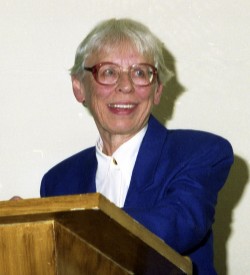
1992
Evelyn Byrd Harrison is best known for her devotion to fifth-century B.C. Athenian sculpture, yet her publications also embrace vase painting, monumental painting, and decorative art, and range from the Daedalic period to the age of Constantine. She has shaped the course of Classical art history during the second half of the 20th century by broadening its focus and extending its horizons. She has educated our eye and expanded our mind.
Eve Harrison received her A.B. from Barnard College in 1941 and her M.A. from Columbia University in 1943, but her graduate studies- as those of many of her generation-were interrupted by the Second World War. Until the end of 1945, she served as a Research Analytic Specialist, translating intercepted Japanese messages for the War Department. With characteristic modesty, she later observed, “They assumed that anyone proficient in Greek and Latin could learn Japanese in six months.”
In 1949, Eve Harrison joined the staff of the American School of Classical Studies excavations in the Athenian Agora. She received her Ph.D. from Columbia in 1952, and a revised version of her dissertation on the portrait sculpture found in the Agora inaugurated the series The Athenian Agora: Results of Excavations Conducted by the American School of Classical Studies at Athens. Her Portrait Sculpture was followed in 1965 by Archaic and Archaistic Sculpture, volume XI of The Athenian Agora. Both publications show the broad erudition, the consummate eye, the subtle thought, and the personal vision that are hallmarks of her work.
Eve Harrison’s scholarship has redefined our art historical perception of the fifth century. As her studies of Alkamenes and Phidias have sharpened our understanding of personal style, so her analysis of Archaic and Classical sculpture has refined our knowledge of period style. Her provocative reconstructions of lost originals -from the shield of Athena Parthenos to the cult statue of the Hephaisteion- have urged us to view all monuments with an acute awareness of their archaeological, cultural, and historical context. Her examination of dress and of coiffure has demonstrated to us the interrelationship of style and iconography. Her approach has extended our knowledge of Classical art beyond its aesthetic and intellectual achievement to an appreciation of its place in the continuum of cultural expression.
The single monument that has most benefited from Eve Harrison’s attention is the Parthenon. She has written nine articles on its sculpture: one on the metopes, two on the frieze, three on the pediments, two on the shield of Athena
Parthenos, and one on the Nike she held on her hand. Eve Harrison’s examination of the sculpture of the Parthenon and of the Nike Temple, too- reminds us that monuments are most illuminating when considered within their social and historical context
As a teacher Professor Harrison is an exemplar. She began her career in 1951 at the University of Cincinnati where she taught not only art history, but also first-year Greek and Latin. After a second research position with the Agora Excavations between 1953 and 1955, she joined the faculty of the Department of Art History and Archaeology of Columbia University, where she was named full professor in 1967. Four years as Professor of Art and Archaeology at Princeton University followed, and in 1974 she was named Edith Kitzmiller Professor of the History of Fine Arts at the Institute of Fine Arts of New York University, where she is currently Emerita and Adjunct Professor. The creativity, energy, conscientiousness, and dedication that mark her scholarship continue into the classroom and beyond, to all her colleagues. Few students of Greek sculpture -in fact, students of Greek art- have not been enriched by her wisdom.
Eve Harrison has been honored for her contributions to art history and archaeology by election as an Honorary Councilor of the Archaeological Society of Athens, a member of the German Archaeological Institute, a member of the American Philosophical Society, and a member of the American Academy of Arts and Sciences. The Archaeological Institute of America is proud to join these distinguished institutions in recognizing her lifetime of accomplishment by awarding its Gold Medal for Distinguished Archaeological Achievement to Evelyn Byrd Harrison.
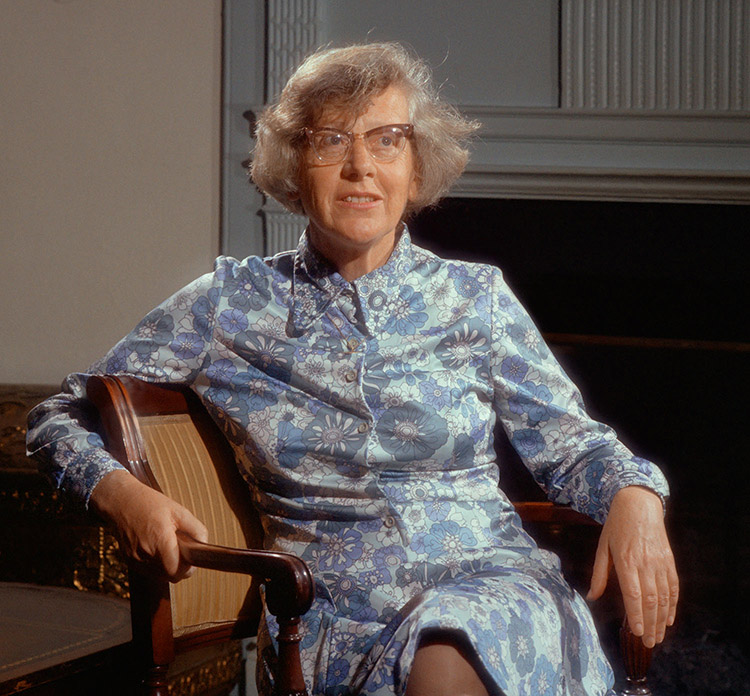
1991
Machteld Johanna Mellink, archaeologist, educator, administrator, author, editor, “Dean” of American excavators in Turkey, preeminent scholar of Anatolian cultures, tireless defender of “the Record of the Past” and of ethics in archaeology, the Archaeological Institute of America is proud to confer upon you its highest award.
Born in the Netherlands, where she received her Ph.D. degree from the University of Utrecht in 1943, and long associated with the United States, which she first visited in 1946 as Marion Reilly Fellow of the International Federation of University Women at Bryn Mawr College, Machteld Mellink transcends national classifications for her wide-ranging activity and reputation in international circles. Her primary sphere of fieldwork has been in Turkey, for which she has an abiding love—from her earliest experiences at Tarsus, under the direction of the Archaeological Institute of America’s first Gold-Medalist Hetty Goldman (1947-1949); through participation in the excavation of the University Museum of the University of Pennsylvania at Gordion (1950-1965, continuing to the present as publication advisor); through her own campaigns at a prehistoric site near Elmali for Bryn Mawr College (1963-1970 with study, restoration, and publication continuing to the present); and currently as advisor to the reopened excavations at Troy conducted jointly by the University of Cincinnati and the University of Tübingen, Germany. Yet Machteld Mellink is equally at home in Greece, and her archaeological travels have taken her not only throughout the Mediterranean basin, but also to the Soviet Union and China, as distinguished guest and as representative of the Archaeological Institute of America. A polyglot fluent in a remarkable number of languages, she is also a Classicist who reads Homer for personal pleasure and has a deep understanding of Classical culture.
Machteld Mellink’s achievements as an archaeologist have been recognized by many institutions of higher learning, in this country and abroad. She has been elected a member of the American Philosophical Society, the American Academy of Arts and Sciences, and the German Archaeological Institute. She is also a Corresponding Member of the Royal Dutch Academy of Sciences and the Austrian Archaeological Institute, as well as a Life Member of the Archaeological Institute of America. She has received two honorary degrees: an LL.D. degree from the University of Pennsylvania on the occasion of the University Museum Centennial Celebration (1987), and an Honorary Doctorate of History from the University of Eskisehir, Turkey (1990). Machteld Mellink has been a regular participant at the Annual Symposium of Excavations in Turkey, and her contribution to Turkish archaeology was acknowledged, in 1984, through the award of a plaque from the Turkish Ministry of Culture as the Senior American Excavator, and, in 1985, by another as the Senior Foreign Archaeologist in Turkey. Although the Elmali excavation is of primary importance for Anatolian prehistory, mention should also be made of the two remarkable painted tombs near Elmali of the late sixth and early fifth centuries B.C. that Machteld Mellink has painstakingly excavated, studied, and restored.
As an educator, Machteld Mellink is primarily associated with Bryn Mawr College, where in 1949 she began teaching in the Archaeology Department, which she chaired for an unprecedented 28 years (1955-1983), through the repeated vote of her colleagues. Thanks to her initiative, the archaeology program at Bryn Mawr was expanded in 1959-60 to include the Near Eastern sphere, and she has since trained many scholars, both American and foreign, in the cultures of Anatolia and other Near Eastern countries. In 1972 Machteld Mellink received the Leslie Clark Chair in the Humanities, which she relinquished on the occasion of her retirement in May 1988, to become, however, Professor Emerita of Bryn Mawr College; yet her instruction has not been confined to one institution but has extended across this country and abroad. Throughout her years of teaching, she has made generations of devoted students, both graduates and undergraduates, rise to ever greater challenges with her uncanny ability to obtain the best from anyone, including her colleagues. Her inspiration has informed the research of many, and her aptly phrased questions have always been able to open new avenues of approach and new vistas in investigation of old problems. She continues in this role for former students, colleagues and other scholars alike.
Machteld Mellink is the author of several books and numerous papers articles and book reviews in America and foreign publications. She is, however, perhaps best known for her yearly reports on “Archaeology in Anatolia,” written for the American Journal of Archaeology since 1955, not simply as a distillation of field reports contributed by the various excavation directors but as a masterly overview of archaeological developments and theoretical studies on the cultures of ancient Anatolia. Equally significant is her contribution to Chronologies in Old World Archaeology, updated through several editions but containing from the first, judicious, if personal, assessment of dates now confirmed by further excavation. A bibliography of her writings up to 1984 has appeared in the volume of essays in her honor, Ancient Anatolia (Madison 1986), but many more contributions have been published since. She has been the organizer of major symposia, several of which have resulted in important monographs, and has been often invited to speak in distinguished series such as the Carl Newell Jack Lectures for Harvard University (1984).
Finally, Machteld Mellink is an administrator of great skill and consummate diplomacy. She served for two terms (1980-84), with distinction, as President of the Archaeological Institute of America, having previously been its Vice-President. She has for several years occupied a similar position with the American Research Institute in Turkey, first as Vice-President and now as President. In both these roles, she has given unstintingly of her time and wisdom, and her tenures have been informed throughout by her love of archaeology and her high standards of scholarship and professional integrity.
Machteld Mellink— in recognition of your leadership, your stance on the ethics of the field your service to the profession and to the scholarly world, the Archaeological Institute of America confers upon you its Gold Medal for Distinguished Archaeological Achievement.
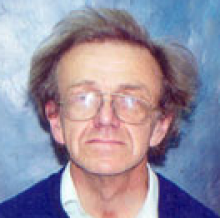
1990
The abiding impression that many of us must share of John Hayes is one of a thinnish figure, bending over a table strewn with pottery, his spectacles halfway down his nose and long slender fingers sorting with an amazing rapidity. This figure is to be seen in excavation houses throughout the Mediterranean and beyond. The pottery he examines at those tables is inscribed forever on his memory, not only the color and fabric, but profiles and shapes. During this process, Hayes’s mind has counted the sherds and placed them in their appropriate categories, many of which he is the author. Whether it be the fragment of an 18th-century Turkish pipe, some roughly made Slavic vessel, or even Mycenaean coarse ware, it is all assigned to its proper data and place. Few men or women have both the visual memory and the facility to order what has been seen that John Hayes possesses.
To recount all the forms of pottery that Hayes has categorized definitively would produce a very long list. It is necessary, nevertheless, to provide some idea of the range of his achievements, both in the field and at the Royal Ontario Museum.
Even before John Hayes went up to Cambridge to take the Classical Tripos, his interest in archeology showed itself with his participation in excavations at Verulamium. At Cambridge, in the second part of the Tripos, he devoted himself to Classical Archaeology and began his life’s work in that field. After his undergraduate work, he spent four years abroad writing his dissertation on Late Roman Pottery in the Mediterranean. Then, in 1968 he came to the Royal Ontario Museum in Toronto, where he now resides as curator of the Classical collection.
It is now 18 years since the appearance of his ground-breaking Late Roman Pottery gave us a “Hayes type,” for five centuries of Roman vases. Equally definitive for early Roman fine wares is his work on Sigillate orientali for the Enciclopedia dell’ arte antica (1986). John Hayes’s appetite for breaking new ground did not stop simply with Roman pottery. His forthcoming massive book on ceramics from Saraçhane in Istanbul establishes ceramic categories and chronologies from antiquity to the modern era, much of which had not previously been systematically defined. His publications of the collections of the Royal Ontario Museum have also led him back in time to include Greek and Etruscan wares. Beyond the confines of pottery, he has published catalogues on glass, lamps, and metalwork in Toronto, with one on arms and armor in progress.
Each summer, however, John Hayes returns again to the field for several months, dividing his time among the several projects whose pottery he is studying. From surface survey on Crete, to Hvar off the coast of Yugoslavia, to the Isthmia Museum, to Cyprus, he covers a geographical breadth and chronological scope that few could hope to equal and none to surpass. All who excavate and carry on surveys in the Mediterranean area, or wherever potsherds are found, will ever be in his debt.
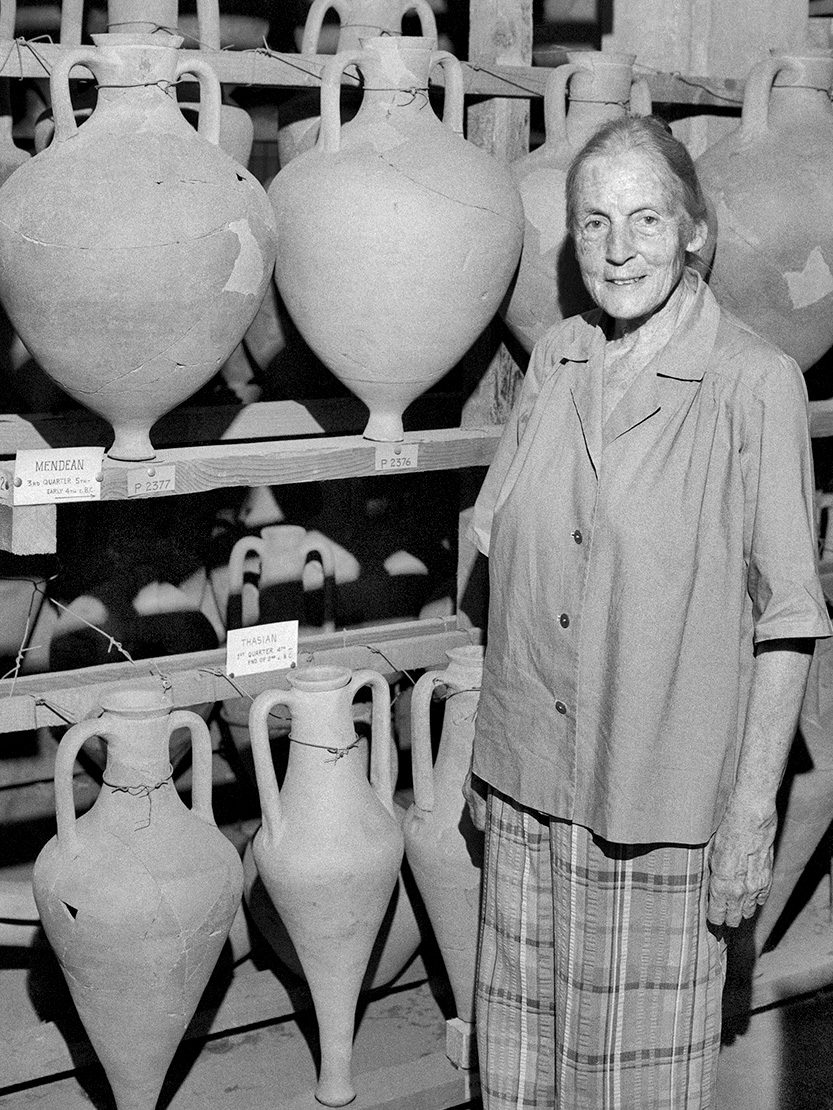
1989
Virginia Randolph Grace has laid the foundations of anew and productive discipline within archaeology through her lifelong study of stamped amphora handles. Because of her work, wine jars and their stamps now provide a tool for closely dating archaeological contexts and a primary index for tracing and quantifying ancient trade. Excavators, historians, epigraphers, and economists are now building upon her pioneering research. To such scholars around the world she is an outstanding representative of North American archaeologists.
Virginia Grace received her B.A. from Bryn Mawr College in 1922, and first went to Greece as a member of the American School of Classical Studies at Athens in 1927-192S. She returned to Bryn Mawr as a graduate Fellow for an M.A. in 1929, and then spent three more fellowship years in Greece and the eastern Mediterranean developing her specialty. Her travels and fieldwork included excavations at Halae, Cyprus, and Pergamon, where she studied a deposit of stamped handles that was to prove critical in fixing the order of Rhodian magistrates named in stamped handles. She also dug as a member of the staff of the Agora Excavations, and by 1934 had published in a substantial work (Hesperia 3.3, which became her Ph.D. dissertation from Bryn Mawr) the stamped handles found during the first two seasons of the excavations.
Continuing to work at the Agora through 1938-1939, the year she held a Guggenheim Fellowship, Virginia Grace was the last member of the American School to leave Athens in 1940. She spent the war years partly in Cyprus and partly doing war work in Turkey and Africa. From 1945 to 1949 she was a Visiting Member of the Institute for Advanced Study at Princeton, after which she returned to Greece as an Edward Capps Fellow of the American School. In that year alone she read and sorted some 20,000 handles at the Agora and in the National Museum at Athens, and in the course of those labors established the catalogue of Knidian Types used in identifying Knidian stamps. In the following decades she classified the handles from numerous other sites. A pivotal point in the study of amphora stamps was her analysis, based on several work-periods in Alexandria during the 1960s, of the massive collection of Lucas Benaki (installed by her in the Musée Gréco-Romain), which enabled her to refine the Rhodian chronology.
The research files, to which she and her team, including Maria Petropoulakou and Andreas Dimoulinis, are still adding, have grown into unique archives of stamped handles (totaling some 150,000 records) from all over the ancient world. For years, with characteristic generosity and precision, she has answered requests for information that have poured into her office from an international clientele. Besides assisting the publications of many others, she has herself produced over forty specialized studies with a chronological and geographical range from the Canaanite jars of the Bronze Age to the Rhodian amphoras on board the ship wrecked at Antikythera early in the first century B.C. Her publication with Mrs. Petropoulakou of the handles found in the House of the Comedians at Delos (Exploration archlologique de Delos 27.14) remains a fundamental handbook for the field.
She has also been at pains to make the stamped handles and jars themselves accessible, most strikingly in the large study collection she arranged at the Agora, which includes handles ordered in cabinets for convenient reference, ranks of whole jars in the basement of the Stoa of Attalos, and a display of jars and stamped handles in Shop IV of the public museum in the Stoa. In an analogous way, she thoughtfully laid out in Amphoras and the Ancient Wine Trade (Picture Book 6 in the series of the Agora Excavations), for the pleasure of the non-specialist and for the edification of the scholar, the story of how these jars were used to store and ship wine and oil in antiquity and how the archaeologist mines information from them today.
Her excellent relations with archaeologists of many nationalities have resulted in notable collaborations such as the corpus of stamped handles found at Thasos (Etudes thasiennes IV), which she wrote with M. and Mme. Bon of the French School at Athens. A measure of her impact upon the profession was the international colloquium on amphoras held at the French School in 1984. She has helped and encouraged many with an interest in antiquity, not least students at the American School, and has played no little part in creating a sense of community among scholars in Athens. Because of her broad interests her cordial connections extend beyond the archaeological world as well. The Greeks among whom she has lived for so long regard her as one of their own and esteem her highly.
With good reason Virginia Grace has been called “die ‘Nestorin’ der Amphorenforschung.” We honor her for her vision in articulating the significance of this special class of artifacts for students of classical antiquity, her acuity in extracting conclusions from the mass of material she collected, and her perseverance through difficult years. The Archaeological Institute of America is proud to award its Gold Medal for Distinguished Archaeological Achievement to Virginia Randolph Grace.

1988
Brunilde Sismondo Ridgway, distinguished authority on Greek sculpture, the Archaeological Institute of America is proud to honor you for your outstanding accomplishments as inspiring teacher, exciting lecturer, eminent scholar, careful editor, and, above all, friend.
Born in Italy and raised, in part, in Ethiopia, Brunilde Sismondo took her Italian doctorate at the University of Messina. She received her Ph.D. from Bryn Mawr College, where she wrote her dissertation, “Observations on Style and Chronology of Some Archaic Sculptures,” (1958). She attended the American School of Classical Studies at Athens (1955-1957), during which ‘time she excavated at Phaistos. She has taught at Bryn Mawr College since 1957 where she now holds the Rhys Carpenter Professorship of Classical and Near Eastern Archaeology and has served as Chairman. In addition, she has been Andrew Mellon Distinguished Visiting Professor at the University of Pittsburgh (1978) and Elizabeth Whitehead Visiting Professor at the American School of Classical Studies (1988). Further, she has participated in two NEH summer Seminars, directed two Summer Sessions of the American School (1967, 1971), and has led AIA study tours to Sicily (1971) and North Africa (1974).
For eight years she donated her time as Editor-in-Chief of the American Journal of Archaeology while maintaining full-time teaching duties. As Editor she worked tirelessly to ensure the best product possible. Her honors and awards are numerous; she has held Fellowships from the American Council of Learned Societies, the Guggenheim Foundation, and has been a member at the Institute for Advanced Study at Princeton and the National Gallery in Washington (CASVA). In addition, she was invited by the Georgian Academy of Sciences, USSR, to speak at their Fifth International Symposium, and has just presented the 12th Félix Neubergh Lecture at the University of Goteborg, Sweden, the first woman awarded this honor, which carries a silver medal.
As a teacher, Bruni Ridgway has that rare ability to motivate, excite, nurture, and criticize, always with good cheer and encouragement. It would be impossible to list here the many students whose honors papers, M.A. theses, or Ph.D. dissertations she has advised, or the growing number of former students who have become members of the academic community. What is significant is the importance students have for her and what her concern does, in turn, for them. Further, she has readily given lectures for other institutions, the AIA, and the centennial celebration of the American School in Athens.
The most tangible contribution, however, lies in her publications. Her books, rich in bibliography and thought-provoking ideas, include: The Severe Style in Greek Sculpture (1970); Classical Sculpture, Catalogue of the RISD Museum of Art (1972); The Archaic Style in Greek Sculpture (1911);Aspects of Ancient Greece, with Gloria Pinney (1979); Fifth Century Styles in Greek Sculpture (1981); Roman Copies of Greek Sculpture: The Problem of the Originals, Thomas Spencer Jerome Lecture Series (l984), the lectures at the American Academy in Rome and the University of Michigan (1981-1982); and The Porticello Shipwreck, with Cynthia Eiseman (1987). Her study of sculptures of the Third Century is forthcoming, and revised editions of the books on Archaic, Severe, and Fifth Century styles, which have become standard texts, are in progress.
Her many articles and countless reviews have appeared in distinguished international journals and she has contributed to numerous symposia and festschrifts. She has offered new insights and different points of view on widely-ranging subjects: from Herakles to Ptolemy VI, from “Ladies” from the sea to Apollo, Warriors, now possibly Chiron, from men with dogs to Amazons with belts, and from techniques of carving stone and casting bronze to metal attachments. Most important, she has caused her readers to look again, to reconsider traditional views, and to approach evidence with new questions and new methods, especially in the difficult analysis of classicistic sculptures of the Roman period.
In addition to all her scholarly activities she has managed also to be a wife and to raise four fine sons. We salute her, honor her, and wish her many fruitful and happy years to come. In recognition of her outstanding contributions, the Archaeological Institute of America awards its Gold Medal for Distinguished Archaeological Achievement to Brunilde Sismondo Ridgway.
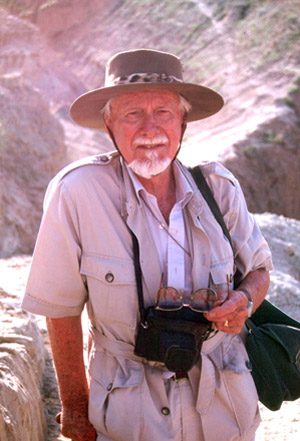
1988
John Desmond Clark is most succinctly, if incompletely, described as one of the world’s foremost interpreters of early cultural development as well as one of the most prolific writers on the subject. His research on Paleolithic and later Stone Age cultures has taken him to such diverse areas as Central Africa, Sudan, Ethiopia, the Sahara, India, and the Near East. His contagious enthusiasm for archaeology has given encouragement to younger colleagues and students, numbers of whom are now established scholars in their own right. A superb fieldworker, he has also always been able to envision the more complete fabric of ancient lifeways as represented by the jigsaw puzzle composed of fragmentary bits of evidence surviving from the Pleistocene and early Holocene: the ”bones and stones” that many less astute observers might regard as all but mute testimony to the past. He was one of the first archaeologists to emphasize the importance of ecological factors in structuring or tempering the behavioral responses of evolving human societies to their respective settings, and routinely one-of the first to appreciate the significance of new techniques and methods, and of interdisciplinary approaches, designed to aid interpretation of the archaeological record.
Desmond Clark graduated from Cambridge in 1937, on the eve of World War II, and soon thereafter accepted a post at the Rhodes-Livingstone Museum in what was then Northern Rhodesia. After a brief period, during which he initiated a research program that included describing the geological and cultural stratigraphy of the nearby Victoria Falls area, he left to serve as an officer with British forces in East and Northeast Africa. For most individuals this would have been a largely unproductive interlude, but he made the most of an extended opportunity to carry out archaeological fieldwork in Ethiopia and Somalia during such free time as was at his disposal. The results of his survey provided the basis for a postwar doctoral dissertation at Cambridge, which was subsequently published as, not his first, but second book. Returning to Livingstone after the war, he resumed his position at the Museum where, as Director, he built it into one of the leading research institutions in Africa. His own single most important research effort was at Kalambo Falls, excavating deposits that incorporated a 200,000-year succession of prehistoric remains, from Acheulian through Iron Age. He also found time to work on other projects, including a fairly extensive archaeological survey in northeastern Angola. In 1961 he left the Museum, with understandable feelings of regret, to become Professor of Anthropology at Berkeley. His absence, however, was only temporary since he went back to Africa frequently, and on occasion worked in Asia, in order to pursue his Old World interests. It has been at Berkeley that he has influenced so many young people to follow in his footsteps. This was a new role for him, and one of inestimable value to the field of archaeology because of his direct involvement in the training process, a function largely denied him as a museum director.
Perhaps of greater importance than the more tangible, which is to say published, results of an unusually active and productive life is the person himself: an indefatigable fieldworker, a dedicated and demanding scholar, a gentleman of the first magnitude, and an individual invariably displaying a keen interest in the work of others. His professional career has spanned a half-century during which has emerged most of our knowledge concerning Africa’s contribution to human evolution. It is with the greatest respect and admiration that the Archaeological Institute of America presents its Gold Medal for Distinguished Archaeological Achievement to Desmond Clark.
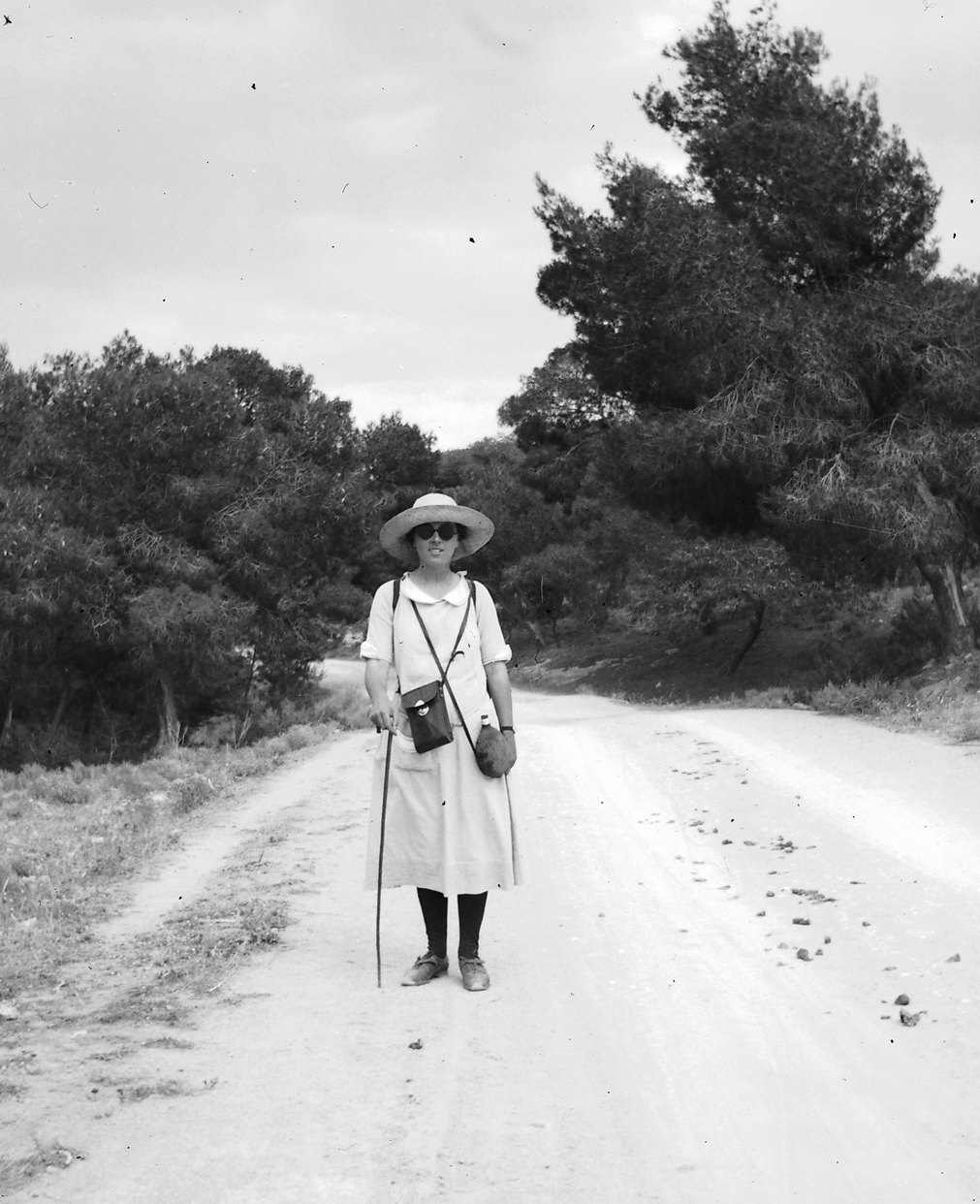
1987
Dorothy Burr Thompson, excavator, teacher, lecturer, writer, and preeminent authority on the coroplastic art of the Hellenistic period, has proven the value of patient and painstaking observation of the smallest details that mark the intricacies of the Hellenistic minor arts. Her work on the broken pieces of ancient terracottas affords fresh insights into that notoriously complex and ill-documented field, Hellenistic Art. Her series of articles in Hisperia on “Three Centuries of Hellenistic Terracottas,” and her books on the terracottas from Myrina I 934 and from Troy (1963) are indispensable guides to the complexities of the distribution and chronology of Hellenistic types. Whether she is dealing with the coiffures of Hellenistic queens, a coroplast’s representation of a physical abnormality, or just a “miserable little head” of a “Graeculus who fawned upon the Romans” Dorothy Burr Thompson records a vivid picture of the tastes of the craftsmen and their public in the Hellenistic World, and—what marks her talent as extraordinary—places this picture in proper perspective to the major arts of the Hellenistic era.
Dorothy Burr attended Bryn Mawr College and after earning her B.A. there (1923), attended the American School of Classical Studies at Athens where she began her career as an excavator by taking part in excavations at Phlius, Eutresis, and the Argive Heraion. She received her Masters Degree (1926) from Bryn Mawr and after a year of graduate work at Radcliffe returned to Bryn Mawr for her Ph.D. (193 I). She joined the Excavations of the Athenian Agora at their very beginnings, and continued after her marriage (1934) at the excavations until they were suspended during the war years. From 1948 on, she has served on the staff of the Excavations of the Athenian Agora, excavating and publishing. Now she is preparing the final publication of the Hellenistic figurines.
After the outbreak of World War II, Dorothy Burr Thompson became a visiting lecturer at the University of Toronto and, for a year (1946-47), was Acting Director of the Royal Ontario Museum of Archaeology in Toronto, Canada. Her teaching did not stop when she moved with her husband, Professor Homer A. Thompson, and three daughters to Princeton, New Jersey. She interwove with her career as an archaeologist visiting professorships or lectureships at the University of Pennsylvania, Bryn Mawr College, Oberlin College, The University of Sydney (Australia), and Princeton University.
Her book Swans and Amber (1948), with its discriminating translations of lyric poetry and its well-chosen illustrations, reveals the sensitivity to literature that informs so much of her archaeological work. The right work, the apt saying, the relevant literary passage, enliven her lectures and her writings. She buries verbal nuggets hewn in her own inimitable style in the catalogues of artifacts where the niceties of precise observation bring life even to broken fragments. She uses her gifts not only to communicate with scholars, but also, through her lectures and writings like those of the Picture Books Series, to illuminate for a more general public, costumes, hairstyles, gardens, shopping centers, and the details of the everyday lives of people who have left no names for history.
With pride in being able to honor a woman ahead of her time in balancing a career with being a wife and mother, with respect for her pioneering and exemplary work in understanding and interpreting the coroplast’s art, with admiration for her contributions to our knowledge of the Hellenistic World, the Archaeological Institute of America awards its Gold Medal for Distinguished Archaeological Achievement to Dorothy Burr Thompson.

1986
George F. Bass entered archaeology wary of gold. His students are taught that it is the last material one wants to find because it is rarely informative and inevitably distracts from one’s seriousness of purpose. Let us try to convince him otherwise.
After receiving his Master’s in Near Eastern Archaeology from Johns Hopkins University, George Bass gained practical experience, while studying at the American School of Classical Studies, at the sites of Lerna and Gordian before he entered the Ph.D. program in classical archaeology at the University of Pennsylvania. Within months his beloved mentor, Rodney S. Young, invited him to direct the excavation of a late Bronze Age shipwreck off Cape Gelidonya in southwestern Turkey. It was a match of student to subject that would greatly benefit the course of archaeology, and Bass’ prompt publication of that excavation has challenged scholars for a score of years.
Since 1960 George Bass, complemented by his versatile wife, Ann Singletary, has rarely paused to catch his breath in a career of astonishing diversity. His excavations thus far range from Neolithic Italy to the American Revolutionary War. The sites are linked by his impartiality to what the material tells him, his quest for the historical context of each site, and the exacting standards he sets for their timely publication.
The fifteen-year association of George Bass with the University of Pennsylvania and its University Museum was fruitful for each. From his student assistantship through his tenure as Associate Professor he directed three major excavations. After Gelidonya, came a ship of the 7th century after Christ, whose hull was the first piece of ancient maritime architecture to be studied seriously and whose contents yielded a fascinating reconstruction of a Byzantine trading venture. That was followed by the excavation of a Roman ship of the 4th century after Christ.
The imagination of the Bronze Age specialist was captivated by the enormity of cultural information on ocean floors. It was clear to Bass that shipwrecked artifacts generally lay in greater abundance, better preserved, and in more precisely datable contexts than those found on land. He set out then to develop techniques that would make excavation under water routinely possible, safe, and as accurate as that on land.
George Bass also envisaged an environment where established scholars and young graduate students of the widest possible cultural interests could be matched with submerged sites important to their spheres of study. From this vision grew the Institute of Nautical Archaeology (I.N.A.) which Bass founded in 1973 and directed as President through its first ten years. During that time I.N.A. established a symbiotic-relationship with Texas A&M University which has led to work on five continents with projects as diverse as an 11th-century shipwreck carrying a staggering array of Islamic glass and a submerged 17th-century tavern in an English colonial town.
For his dedication to teaching, George Bass received his university’s highest honor, being named Distinguished Professor of Anthropology in 1980, followed four years later by its Faculty Distinguished Achievement Award in Research. He has published that research in generous measure. Of the more than 100 titles already in his bibliography, Bass has directed about half to his colleagues in archaeology and the other half to making discoveries available to lay readers. The energy he has expended in lecturing on current excavations, on technical developments, and, in recent years, in pressing for legislation to preserve submerged cultural resources in U.S. waters is impossible to quantify.
But the value of gold is quantified daily. Can we persuade Bass of its worth? Gold coins of Heraclius were the first clues he had to date the Byzantine ship whose sinking he was later able to pinpoint within one year. The Gold Trident for Science, awarded by an International Congress, was his very first professional honor, and the National Geographic Society awarded him its Gold Medal in 1979. Now a queens ransom in gold objects is being found on his current excavation, a Bronze Age ship sunk off Kaş, less than fifty miles west of Cape Gelidonya. The wealth of material found in this wreck reflects the rich cultural exchange that existed from the SyroPalestinian coast across to Cyprus and Greece that was first heralded by the excavation at Gelidonya.
Even George Bass must admit that gold can be precious to an archaeologist. This medal draws attention to the daring and excellence of his accomplishments. The Archaeological Institute of America, with gratitude to him for the opening of the remarkable realm of archaeology beneath the sea, awards its Gold Medal for Distinguished Archaeological Achievement to George F. Bass.
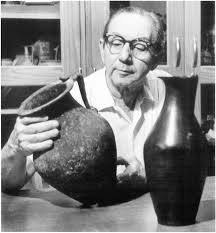
1985
Saul S. Weinberg began his archaeological career at Olynthus when, after completing a B.S. and M.S. in architecture at the University of Illinois, he joined the staff of the Johns Hopkins excavations in 1934. He went on to receive his Ph.D. in Classical Archaeology from Johns Hopkins in 1936 and returned to Greece as the ALA. Fellow to the American School of Classical Studies at Athens. He served as a member of the staff of the American School excavations at Corinth from 1937 through 1939 and again from 1946 to 1948. The fruits of his work at Corinth illustrate dramatically the remarkable range of Saul Weinberg’s scholarship and his prodigious productivity In short order there appeared “Remains from Prehistoric Corinth,” a major article in Hesperia on the Neolithic materials from Corinth, followed rapidly by Corinth VII, 1-Geometric and Orientalizing Pottery; a second Corinth volume, Corinth I, 5-The Southeast Building, The Twin Basilicas, The Mosaic House, reconstructs large part of the Roman Forum of the city. Greek prehistory remained his first love, however, and his excavations at Kourion, Episkopi, and Elateia serve to illuminate some of the darker patches of prehistoric chronology. His 1970 chapter in the Cambridge Ancient History on the Stone Age in the Aegean remains today the most useful overview of the problems in this rapidly changing field of scholarship. In recent years he has turned his talents to the archaeology of Palestine with his excavations at the Hellenistic settlement of Tel Anafa in the Upper Galilee of Israel.
Students throughout the world have benefited from Saul Weinberg’s archaeological expertise; he has taught at the American School of Classical Studies at Athens, Hebrew Union College in Jerusalem and the Institute of Archaeology of the Hebrew University of Jerusalem. He has communicated his high intellectual standards to generations of students at the University of Missouri at Columbia where he joined the faculty of Classical Languages and Archaeology in 1948. He went on there to become Chairman of that department and co-founder and Chairman of a new Department of Art History and Archaeology. His efforts at public education, however, were not limited to university students. Together with Gladys Weinberg he was responsible for founding the Museum of Art and Archaeology at the University of Missouri and building that collection into one of the most noted in the Midwest which, through a model program of community outreach, is accessible to an audience well beyond the university community. The Israel Museum in Jerusalem, where he was head of the Archaeological Museums from 1969 to 1971, also profited greatly from his wide-ranging interests and expertise.
Saul Weinberg is a man of quiet humor, indomitable spirit, and selfless dedication in the search for knowledge. His record of consistent publications is one to be admired and, we hope, emulated by future archaeologists. It is with great pride and no little awe that the Archaeological Institute of America awards its Gold Medal for Distinguished Archaeological Achievement to Saul S. Weinberg
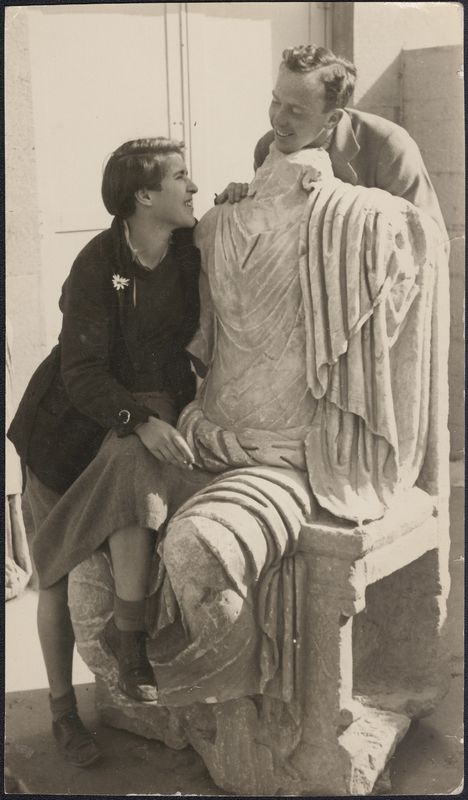
1985
Gladys Davidson Weinberg began her archaeological career as a member of The Johns Hopkins University expedition to Olynthus (1931). She continued in Greece in 1932 as a Fellow of the American School of Classical Studies at Athens, then (1933-1939) as a member of the American School Excavations at Corinth. In 1935 she received her Ph.D. from Johns Hopkins for her dissertation on the minor finds from the Corinth excavations. This research was to culminate in Corinth XII:The Minor Finds, an encyclopaedic publication of some 3,000 excavated objects ranging from Neolithic objects to Byzantine bread stamps. Her interest was to focus on the glass objects in this collection, and in her search to unravel the secrets of ancient glass manufacture. Gladys Weinberg was to become one of the world’s foremost authorities on the subject. She sought for glass factories from Tarrha, Crete, to Jalame in the Western Galilee of Israel. She has published numerous articles on glass from collections all over the world. Her pioneering studies on ancient and mediaeval glass and its manufacture throughout the Mediterranean have shed light on the trade and technology of preindustrial societies. Her work has pointed the way for a new generation of scholars.
Gladys Weinberg’s scholarly expertise and intellectual acumen have been felt well beyond the field of glass studies. As Curator and one of the founders of the Museum of Art and Archaeology of the University of Missouri she has helped gather, publish, and exhibit to the public a collection that ranks among the very best in American university museums. As Editor of Archaeology magazine from 1952 to 1967 she exercised her formidable abilities to encourage her colleagues to present their insights and contributions in a clear and cogent form. Her endeavors have fostered a continuing exchange of ideas which has immeasurably enriched the discipline of archaeology.
All of us who have had the privilege to work with Gladys Weinberg have benefited from a model of uncompromising scholarly standards and outspoken dedication to excellence. Not least, she is an individual of great personal warmth and generosity, whose lively approach to the study of antiquity is an inspiration to us all. An evening spent in Gladys Weinberg’s company, listening to her vivid accounts of early excavations, has been a memorable part of the archaeological education of students and colleagues alike from Missouri to Athens to Jerusalem.
It is with great respect, gratitude, and affection that the Archaeological Institute of America presents Gladys Davidson Weinberg with its Gold Medal for Distinguished Archaeological Achievement
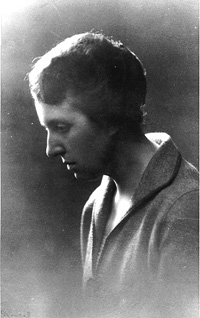
1984
The colleague whom we honor today has greatly enriched our discipline, and this in various ways: as research scholar, teacher, administrator and, not least, through her own outstanding personality.
A graduate of Radcliffe (1931), Margaret Thompson became an early staff member of the Excavation of the Athenian Agora (1937-1940, 1947-1949). Here she underwent an experience salutary for any young numismatist. Her first duty was to clean and identify coins as they came from the earth; almost all were of bronze, most of them heavily worn and many hopelessly corroded. Undaunted by this initiation Margaret Thompson undertook to publish a record of the Agora coins from the Roman through the Venetian periods. This early book (1954) already shows the qualities that were to mark all her subsequent publications: the ability to get on top of a large body of material (37,000 coins), to present her conclusions with the utmost clarity, and to make the numismatic evidence available also to the historian and the economist.
From the Agora Margaret Thompson moved on to the American Numismatic Society (1949). As Curator of Greek coins and then for over ten years as Chief Curator of the ANS she maintained and enhanced the high scholarly traditions of one of the world’s great centers of numismatic studies.
Following in the footsteps of a distinguished predecessor, Edward T. Newell, Margaret Thompson has done much to refine our knowledge of the mints of Alexander and the Seleucids. In preparing An Inventory of Greek Coin Hoards (1973) she again built on the work of an esteemed predecessor, Sydney P. Noe. Here, as so often in her career, she showed a remarkable capacity for fruitful collaboration with other scholars, m this case Otto Mørkholm of Copenhagen and Colin Kraay of Oxford.
Of her most monumental publication, The New Style Silver Coinage of Athens (1961), Margaret Thompson was the sole architect. In every respect a model of its kind, this great work has become the source book for our knowledge of one of the largest, most significant, and previously most intractable coinages of the ancient world. Certain of the conclusions proved, to be controversial, but the subsequent discussion has been conducted at a high level of civility and has been more productive of light than of heat.
As a talented and beloved teacher Margaret Thompson made a lasting impact on the careers of hundreds of students: in the Summer Seminars at the ANS, in her Graduate Seminar at Columbia University, and as Regents Professor at the University of California at Berkeley. The affection of her colleagues, students and friends was concretely demonstrated by the presentation of a Festschrift on the occasion of her retirement from the ANS m 1979.
The ANS was not the only beneficiary of Margaret Thompson’s administrative competence. She was active in the Greek War Relief toward the close of World War II. For four strenuous years (1965-1968) she presided over the Archaeological Institute of America. She also served long and loyally as Trustee, member of the Executive Committee, and member of the Editorial Advisory Board of the AIA.
Margaret Thompson has received many honors both in this country and abroad. She is a member of the American Philosophical Society and an honorary member of the numismatic societies of Austria, Belgium, France, Rumania and Switzerland, arid also of the Deutsche Archäologische Institut. Her achievements have been recognized by the numismatic community through the two highest honors the profession can bestow: the Archer M. Huntington Medal of the American Numismatic Society and the Medal of the Royal Numismatic Society of Great Britain. In recognition of the role that Margaret Thompson has long played in the advancement of archaeology as a humanistic discipline, the Archaeological Institute of America presents her with its Gold Medal. We do so with much pride and with not a little affection.
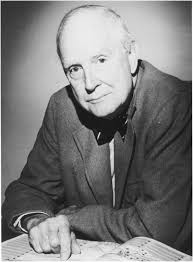
1983
For forty years, James Bennett Pritchard has illuminated Near Eastern archaeology for his colleagues and students with erudition and charm. His excavations, classrooms and lecture halls have been lively fora, where he has shared his knowledge and insight with friends of many nationalities. In all his professional activities, he has been a model of unfailing generosity, stimulation and grace-a proud record for a scholar of broad achievement.
James Pritchard’s teaching career took him from the Crozer Theological Seminary and the Church Divinity School of the Pacific to the University of Pennsylvania as Professor of Religious Thought and Curator of Biblical Archaeology at the University Museum. He has served as Annual Professor and twice as Visiting Professor at the American School of Oriental Research in Jerusalem, and as the Fulbright-Hays Professor of Archaeology at the American University of Beirut. His accomplishments in the classroom have been matched by his many other contributions to archaeology—as editor of the Journal of the American Oriental Society, Secretary to the Board of Trustees of ASOR, Associate Director and Director of the University Museum, Trustee of the American University of Beirut, and an editor of publications for the American Philosophical Society. This impressive enumeration of activities includes, to our own good fortune, the presidency of the Archaeological Institute of America in 1972 and 1973. James Pritchard continues to serve the AIA in many ways, most recently as chairman of the Publications Committee. His fieldwork has been a pioneering effort, devoted to exploring little known aspects of biblical lands. James Pritchard began digging at Dhiban and Herodian Jericho, and later directed excavations at ancient Gibeon, Tell es-Sa’idiyeh, and at Sarafand, ancient Sarepta. His work has given us a rare direct look at the Phoenicians in their homeland and has made us think about Phoenician-Punic relationships in a new light.
These excavations have been and continue to be made accessible to the scholarly world, while James Pritchard has also undertaken the task of bringing archaeology to public notice, through general works on his own excavations— Gibeon, Where the Sun Stood Still (1962) and Recovering Sarepta, A Phoenician City (1978). One of his greatest contributions to the study of the Near East has been Ancient Near Eastern Texts (ANET). Pritchard in ANET succeeded in bringing together the world’s leading Near Eastern scholars to offer the fruits of their philological research in intelligible translations and comments, structured by the master hand and guided by the diplomacy of the editor. Now in its third edition, ANET has become a mainstay in all relevant curricula, along with the companion volume, The Ancient Near East in Pictures.
Throughout his distinguished career, James Pritchard has been a kind and considerate advisor, a warm friend and a man of philosophical humor. In gratitude for all his achievements in teaching scholarly research, editing, digging, and bringing archaeology to the public, as well as his wisdom and statesmanship, the Archaeological Institute of America is proud to award James Bennett Pritchard its gold medal for distinguished archaeological achievement.

1982
Peter H. von Blanckenhagen, a specialist in Hellenistic and Roman architectural design, wall-painting and sculpture, has signally influenced scholarship in these fields. Recognizing the dependence of style in Roman art on class demands and Imperial policy, he has created an outlook on Roman art which has stood the test of time. Knowledge of the monuments, keen sensitivity to aesthetic appearances, interest in the facts and failures of European history and thought blend in his presentation, lending a depth of perspective which has awed many audiences. His literate style and oratorial powers are legendary. Often choosing topics outside the strictly art historical domain, exploring physiognomies shaped not by sculptors but by philosophers and poets, Peter von Blanckenhagen exemplifies the courage and independence of thinkers in the best humanist tradition. He received his academic training abroad but chose to make this country his own. In years decisive for the growth of Humanities programs in our institutions he helped to give art history the place of prominence it now deservedly holds. To the lecturer and writer on some of the most classical works of Classical art, to the teacher of the treasures of Pompeian wall-painting, to the perceptive and learned exegete of Platonic dialogues and of Carl Jacob Burckhardt, to the counselor and friend of many of us and of our academic institutions, to Peter von Blanckenhagen with the expression of gratitude and esteem we award this medal.
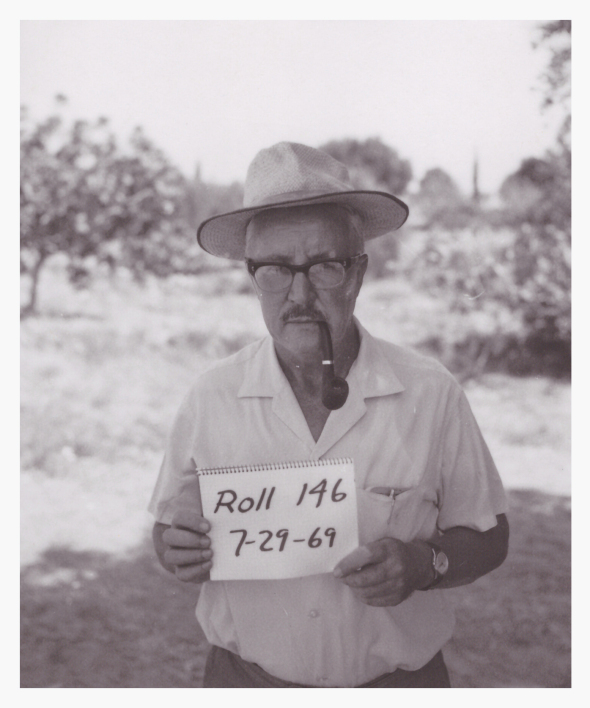
1981
William Andrew McDonald, Regents’ Professor Emeritus of Classical Studies at the University of Minnesota, has been a key figure in one of the most challenging times in Greek archaeology. He has pioneered in bringing about changes in the theory, methodology and general conduct of archaeological research in Greece.
Trained as an undergraduate with first class honors in classics at the University of Toronto, McDonald turned to archaeology in his graduate study and received his Ph.D. from The Johns Hopkins University in 1940. His dissertation, The Political Meeting Places of the Greeks, remains a fundamental study of ancient Greek public architecture. The course of his formative career took a major turn, however, and soon fixed itself on an area and era—Bronze Age Messenia—which were to dominate his scholarly activity to the present day. In April 1939 McDonald as a trenchmaster at Carl Blegen’s first season of excavation at Nestor’s Pylas was the first to handle and record (in his own words) “the earliest cache of written records then known on the continent of Europe.” His direct contribution to the discovery of the Pylas tablets and his devoted respect for Blegen as an excavator and scholar guided his career. He returned to Pylos as an excavator in 1953.
In 1961 he started an ambitious program of fieldwork, the Minnesota Messenia Expedition (MME), the first systematic and interdisciplinary archaeological study on a regional basis undertaken in Greece. As such it has set the standard for all subsequent programs of surface reconnaissance in that country. The results appeared in prompt preliminary reports in AJA and in the more comprehensive studies, Place Names of the Southwest Peloponnesus (1969) and Minnesota Messenia Expedition: Reconstructing a Bronze Age Regional Environment (1972). These were collaborative publications which testify admirably to McDonald’s ability to mobilize the research efforts of scholars representing a wide variety of academic disciplines. His capacity to communicate with the interested layman was ably demonstrated by his sensitive and readable account of Bronze Age archaeology in Greece (Progress into the Past), written during this same period (1967).
The MME led to the excavation of Nichoria, an important Bronze Age settlement and perhaps the most thoroughly investigated village of the early Iron Age on the Greek mainland. With characteristic dispatch, the results have been disseminated in preliminary reports in Hesperia and, although the fieldwork was only completed in 1975, the first volume of the final publication has already appeared (1978). The swiftness and high quality of these publications, again collaborative efforts of multidisciplinary research, stand as models for all excavators in Greece.
The interdisciplinary approach has also characterized McDonald’s other professional activities. He served as the AIA’s first representative in the Society of Professional Archaeologists. He established a joint Ph.D. program in Classics between the Universities of Minnesota, Iowa and Wisconsin in the early 1960’s and, later, served as the first Director of the Center for Ancient Studies at the University of Minnesota.
McDonald is a dedicated educator. He was the first recipient of the University of Minnesota’s Morse Award for outstanding contribution to undergraduate education. As a teacher of advanced students, he has always insisted upon a firm grounding in classical studies while advocating special training in at least one allied field such as paleobotany, archaeozoology, statistics, or computer studies. In the field as well as in the classroom, his creative and responsible leadership and his modest manner, always laced with a generous dose of Scottish wit, have won him the admiration and unfailing respect of students and colleagues alike.
Bill McDonald has been a pathfinder in many respects. Twice a Guggenheim Fellow, he has been a quiet leader in an era when his profession was undergoing dramatic if not revolutionary change. As excavator, scholar, teacher and administrator he has demonstrated the scientific curiosity, adaptability and vision needed to help set the positive course of modern Greek archaeology. In recognition of these accomplishments it is fitting that he receive the award first conferred upon his mentor and close associate, the late Carl W. Blegen, to whom he is a most worthy successor.
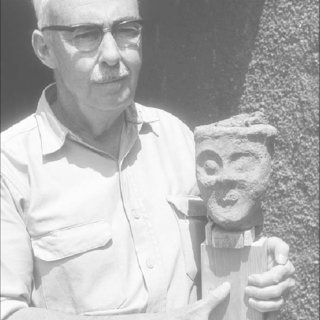
1980
John Langdon Caskey, excavator and interpreter of preclassical Greece, has transformed and enriched our understanding of the preliterate cultures of the mainland and the Cyclades.
In the Argolid he wisely selected the mound beside the Lernaean spring to test our concepts of Helladic prehistory. Working with a team of associates and apprentices, he exposed the House of the Tiles as a clue to Early Helladic art and architecture, economy and organization, with due regard for bio-archaeology. The fate of this mansion, its destruction well before the end of the third millennium B.C., and the rebuilding of Lerna in utterly different form by people of different customs, led Caskey to re-examine carefully, in many Hesperia reports and other discussions, the story of the coming of the Greeks. He recorded the progress in protohistorical understanding in the pages of the new Cambridge Ancient History. On the site, the House of the Tiles was preserved and roofed in a simple and effective way so that it stands as a monument to the predecessors of the Greeks in the Argolid.
At Ayia Irini on Keos, the Cycladic island off the Attic southeast coast, Caskey selected his second major objective with keen insight and instinct. With a team taught through his lucid and methodical approach, he brought to life the Bronze Age town on the bay of Ayia Irini, its growth as an island community in contact with neighbors and rivals, Minoans and mainlanders, and he again made us discern matters of cultural interaction and chronology, of Greeks and pre-Greeks, and this time, also of major art and religion. The temple at Ayia Irini, with its bold architectural form and its large terracotta statues, stands as a physical reality and scholarly challenge in the sea of hypotheses concerning Aegean religion. Ayia Irini has thus become the starting point for a new study of Aegean beliefs and cult practices.
The site and museum of Keos are being prepared for the completion of the excavation and its study by the younger generation of archaeologists trained by Caskey. The volumes of the final reports on Keos and Lerna have begun to appear and those in progress are even now part of lively and constructive scholarly discussion in the wide world of modern Aegean archaeology.
As a beginning student, Caskey participated in the University of Cincinnati’s excavations at Troy under Carl Blegen in the 1930’s and subsequently took an important part in the four-volume publication of Troy. He forms a link with the era of Dörpfeld, who came back to Troy to discuss the site with the Cincinnati excavators.
In 1949, Caskey began a decade of distinguished service as Director of the American School of Classical Studies at Athens, seeing the School through the exciting but difficult phase of returning after the disruptions of war to the level of scholarly activity and excellence it had previously enjoyed. In this arduous service he earned the affectionate respect of many Greek and foreign colleagues as well as members of the American School. Numerous honors attest to his status as a Philhellene. Lerna was excavated during this period, as an undertaking of the American School.
In 1959, Caskey became Head of the Department of Classics of the University of Cincinnati, under whose auspices he excavated in Keos. He maintained the high reputation this Department had acquired under Blegen, attracting first-class students and giving them first-class training.
In awarding John L. Caskey the Gold Medal for Distinguished Archaeological Achievement the Archaeological Institute of America honors an excavator, author, teacher and administrator who has broadened the great tradition of archaeology and opened new horizons in the early history of Greece and its people.
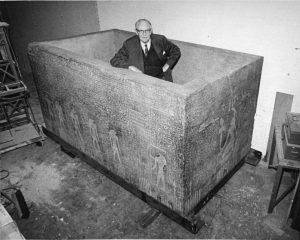
1979
Dows Dunham has dedicated his life· to archaeology as an excavator, curator and scholarly author, a dedication made with exceptional modesty as well as quiet distinction. Born in 1890, he has engaged in archaeological field work in Egypt and the Sudan since 1914, and served as vice-president of the Archaeological Institute of America.
There is perhaps no other archaeologist in this country who has labored so long, so patiently, and with such lucid and impressive results, to put the records of past excavations before the public, and to prevent the scientific and scholarly work of expeditions long finished from disappearing into oblivion in museum basements. From the moment he joined Professor George Reisner and the Harvard University-Museum of Fine Arts Expedition at Giza in 1914, through the preparation of the last volume of the monumental Kerma publication, now in the press, Mr. Dunham has devoted all his skills, his gift of clarity, his precision of method and his experience to the premier responsibility of the field archaeologist, that of explaining and interpreting what he has found. This discipline and sense of responsibility make him an exemplum for younger archaeologists everywhere.
Mr. Dunham was present at the discovery of the statue of King Djoser; excavated and helped restore the gold-covered furniture from the tomb of Queen Hetep-heres; and was in charge of field operations and recording at Quft, Naga-ed-Der, Giza, and—for the Egyptian Antiquities Service—Sakkarah and Dahshur. In the Sudan, he uncovered Gammai, Gebel Barkaland Meroe, established the first chronology of the Meroitic kings, and published the Royal Cemeteries of Kush and the forts of the Second Cataract, the Barkal Temples and the Giza Mastabas. Placed in charge of the Egyptian Collections of the Museum of Fine Arts, Boston, in 1928, he was responsible for cataloguing, installing and explaining that extraordinary range of beautiful art and, during more than fifty years of association, displayed the consistent and absolute probity of a distinguished museum curator.
Dows Dunham has, all his life, also been a splendid, lively and picturesque teacher, and his sense of responsibility toward his students and toward the public has been shown in hundreds of ways, from his working model at the Science Museum of how a pyramid is built to the informative labels in the Museum of Fine Arts. His lifetime example’ of dedication, discipline, unselfish labor, patience, good judgment, skill and lucidity, his stance on principles as well as his humor, his constant help to younger Egyptologists, to which many in this room can bear witness, the warmth and modesty which have endeared him to so many for so long, make Dows Dunham on this centennial occasion the fitting embodiment of a grand tradition in archaeology.
1978
1977
1976
1975
1974
1973
1972
1971
1970
1969
1968
1967
1966
1965